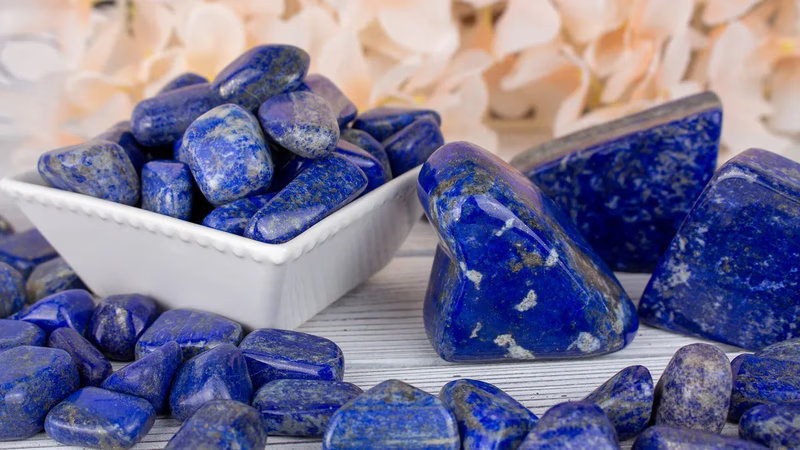
Ինչպես է Մերձավոր Արևելքը նպաստում լապիս լազուլի և գեմստոնների առևտրին Ասիայի հետ:
Լապիս լազուլին, mesmerizing azure gemstone, centuries-long trade and culture cornerstone in West Asia. Known for deep blue color and spiritual properties, it holds prominent place in global gemstone market, particularly in Middle East and Asia. This region serves as critical trade platform, leveraging historical trade routes and modern B2B marketplaces to connect verified exporters and importers for gemstones like lapis lazuli, ruby, emerald, and turquoise. The Middle East as hub for commodity trade facilitates import and export of lapis lazuli through well-structured supply chain solutions and regional product listings. This enables businesses to tap into market insights and enhance their reach across West Asia and beyond. Lapis lazuli mines primarily located in Afghanistan are central to its trade with the stone being used in jewelry decor and chakra therapy. Differentiating genuine lapis lazuli from synthetic variations remains key challenge but modern techniques and trade standards help ensure authenticity. Emerald one of the most precious stones after diamonds also plays significant role in regional trade driving economic value and financial flow. Similarly gemstones like spinel turquoise amber underline diverse market dynamics in Middle East. Spinel with vibrant hues is particularly popular in jewelry while turquoise often linked to ancient Middle Eastern cultures continues to thrive in contemporary trade. Other stones like tanzanite jade charoite further diversify the market attracting international buyers. Platforms like Aritral simplify these global trade dynamics by offering AI-powered marketing product listings verified sourcing solutions. Such platforms ensure that businesses remain competitive in gemstone trade while navigating complexities of Middle Eastern Asian markets.-
 Մոհամմադ Հոսեյն Խոշ Լահջեհ 3 ամիս առաջ
Մոհամմադ Հոսեյն Խոշ Լահջեհ 3 ամիս առաջ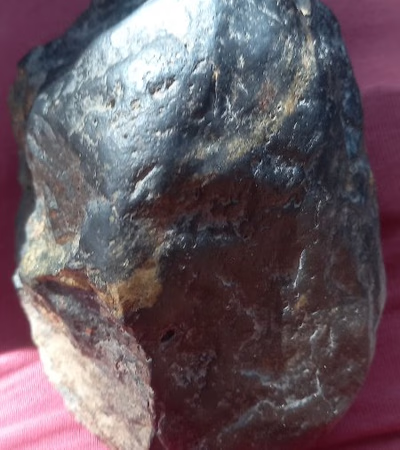 Շահաբ Հին Պատկերներ Ականջօղեր
Շահաբ Հին Պատկերներ Ականջօղեր
Բոլոր ապրանքները բնօրինակ են, նույնիսկ մեկ տարի անց գործարքից, եթե պարզվի, որ դրանք չեն բնօրինակ, գումարը և վնասները կվճարվեն:Մանրամասներ
-
 Ահջար 3 ամիս առաջ
Ահջար 3 ամիս առաջ Եմեն
Թանկարժեք քարեր
Եմեն
Թանկարժեք քարեր
Ամեն ինչ հասանելի էՄանրամասներ
-
 Իբրահիմ Ալ Սիերիա 3 ամիս առաջ
Իբրահիմ Ալ Սիերիա 3 ամիս առաջ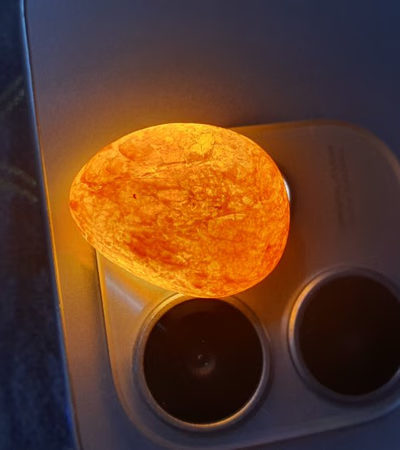 Սիրիա
Անհատական քարեր և մետեորիտներ
Սիրիա
Անհատական քարեր և մետեորիտներ
Անհատական քարերի գնում և վաճառքՄանրամասներ
-
 Սանգ Սիթի 3 ամիս առաջ
Սանգ Սիթի 3 ամիս առաջ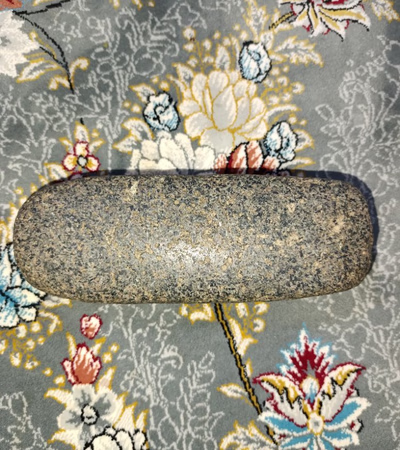 Անհատական քարեր
Անհատական քարեր
Ես վաճառում եմ անհատական քարեր մատչելի գներովՄանրամասներ
-
 Բտմ Ասոցիաներ 4 ամիս առաջ
Բտմ Ասոցիաներ 4 ամիս առաջ Պակիստան
Բոլոր տեսակի գեմ քարեր
Պակիստան
Բոլոր տեսակի գեմ քարեր
Մենք զբաղվում ենք բոլոր տեսակի գեմ քարերով և թանկարժեք հանքանյութերովՄանրամասներ
-
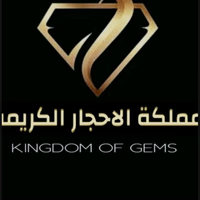 Մեթջար Մենքլեք Ալհջար Քեմերա 3 ամիս առաջ
Մեթջար Մենքլեք Ալհջար Քեմերա 3 ամիս առաջ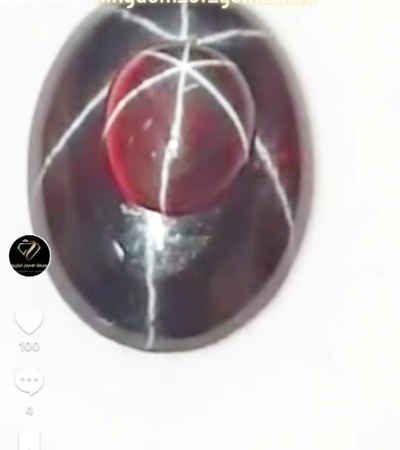 Արծաթյա և հազվագյուտ բնական քարեր
Արծաթյա և հազվագյուտ բնական քարեր
Չամշակված բնական քարեր, բարձր դասի, բարձր որակիՄանրամասներ
-
 Մուստաֆա 3 ամիս առաջ
Մուստաֆա 3 ամիս առաջ Անհատական քարեր
Անհատական քարեր
Անհատական քարերՄանրամասներ
-
 Սալահ Աբդուլխալեք Աբդուլլահ Ալ-Մասաբի 3 ամիս առաջ
Սալահ Աբդուլխալեք Աբդուլլահ Ալ-Մասաբի 3 ամիս առաջ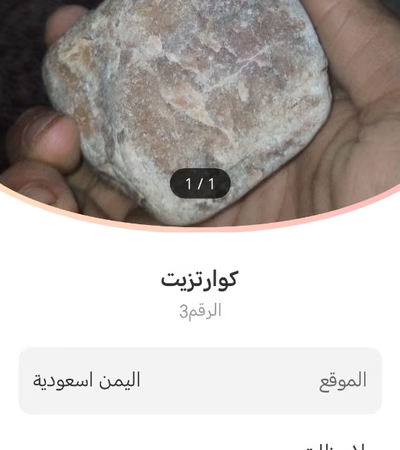 Եմեն
Անցանկալի քարեր
Եմեն
Անցանկալի քարեր
Ես ունեմ անցանկալի քարերի տեսակներ և ուզում եմ դրանք վաճառել այստեղ: Հույս ունեմ, որ ինչ-որ մեկը կպատասխանի Եմենում կամ Սաուդյան Արաբիայում: Սա իմ Wha...Մանրամասներ
-
 Ռուբիռոքս Ջեմեմպորիհ 5 ամիս առաջ
Ռուբիռոքս Ջեմեմպորիհ 5 ամիս առաջ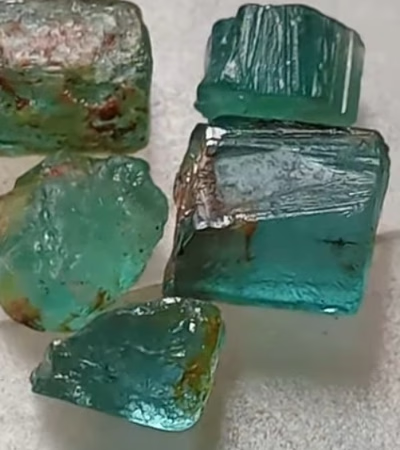 Պակիստան
Էմերալդ տուրմալին Տոպազ սեֆիր ռուբին պերիդոտներ գարնետ սպինալ կունզիտ
Պակիստան
Էմերալդ տուրմալին Տոպազ սեֆիր ռուբին պերիդոտներ գարնետ սպինալ կունզիտ
Մենք վաճառում ենք բոլոր տեսակի թանկարժեք և կիսաթանկարժեք բնական ազատ կտրված և կոպիտ քարեր, արդեն 11 տարի վստահելի հաճախորդների համար ամբողջ աշխարհումՄանրամասներ
-
 Ֆորուշգահ Իքբալ 5 ամիս առաջ
Ֆորուշգահ Իքբալ 5 ամիս առաջ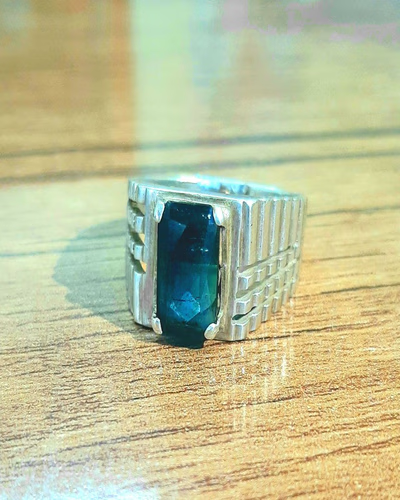 Աֆղանստան
Արժեքավոր քարերի և զարդերի գնում և վաճառք
Աֆղանստան
Արժեքավոր քարերի և զարդերի գնում և վաճառք
Իմ խանութում հասանելի են տարբեր ձևերով և ոճերով մատանիների գնում և վաճառք:Մանրամասներ
-
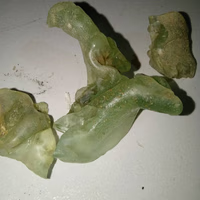 Քադուր 3 ամիս առաջ
Քադուր 3 ամիս առաջ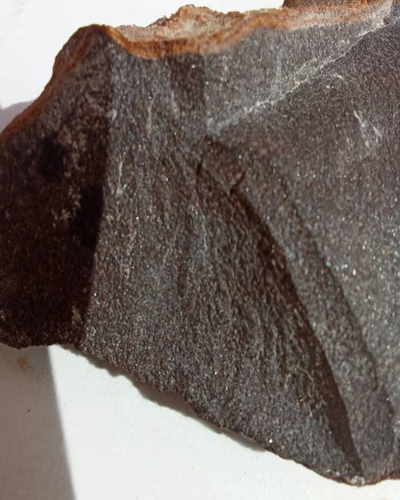 Ալժիր
Մետեոր
Ալժիր
Մետեոր
-
 Ալ-Ահջար Ալ-Կարինա 6 ամիս առաջ
Ալ-Ահջար Ալ-Կարինա 6 ամիս առաջ Եգիպտոս
Թանկարժեք քարեր
Եգիպտոս
Թանկարժեք քարեր
Թանկարժեք քարեր բոլոր տեսակներով և արհեստներով, ինչպես նաև մետեորիտներՄանրամասներ
-
 Մոհամմադ Ասաֆ 3 ամիս առաջ
Մոհամմադ Ասաֆ 3 ամիս առաջ Սիրիա
Արժեքավոր քարեր
Սիրիա
Արժեքավոր քարեր
Արժեքավոր քարերՄանրամասներ
-
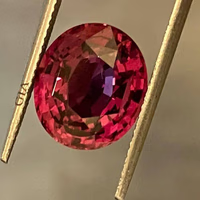 Ահջար Կարիմա Եւ Նիյազկ 3 ամիս առաջ
Ահջար Կարիմա Եւ Նիյազկ 3 ամիս առաջ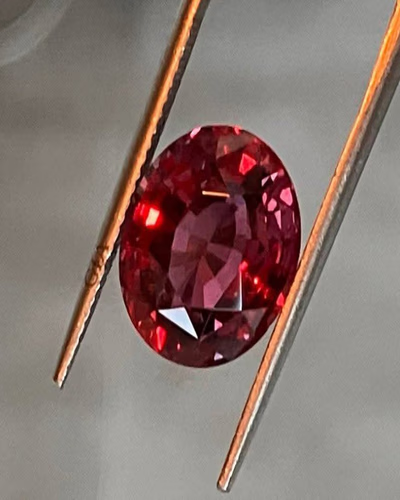 Միացյալ Արաբական Էմիրություններ
Քարեր և մետեորիտներ
Միացյալ Արաբական Էմիրություններ
Քարեր և մետեորիտներ
Թանկարժեք և կիսաթանկարժեք քարեր, հազվագյուտ և սովորական, մետեորիտներ և հրաբխային քարերՄանրամասներ
-
 Մոհամմադ 3 ամիս առաջ
Մոհամմադ 3 ամիս առաջ Եմեն
Մետեորիտ
Եմեն
Մետեորիտ
Այն ձեռք բերվել է 2/1/2025-ին: Մետեորիտը հաստատվել է, որ ունի ուժեղ գրավչություն մագնիտի հետ և շատ ծանր է:Մանրամասներ
-
 Մոհամմադ Նասիր 6 ամիս առաջ
Մոհամմադ Նասիր 6 ամիս առաջ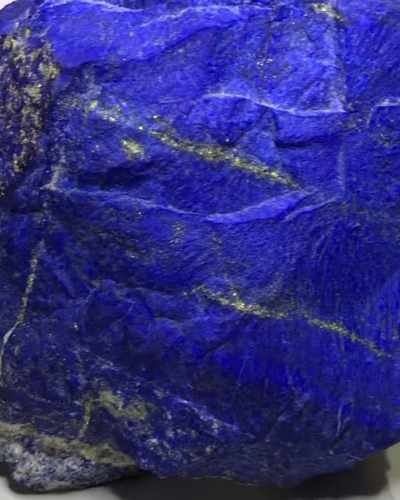 Աֆղանստան
Տուրմալին, Պանջշիր Էմերալդ, Լապիս Լազուլի, Սպինել:
Աֆղանստան
Տուրմալին, Պանջշիր Էմերալդ, Լապիս Լազուլի, Սպինել:
Աֆղանստանի թանկարժեք և կիսաթանկարժեք հանքաքարերի վաճառք: Ինչպես Էմերալդ, Լապիս Լազուլի, Սպինել, Տուրմալին:Մանրամասներ
-
 Ֆաթհիսայեդ 6 ամիս առաջ
Ֆաթհիսայեդ 6 ամիս առաջ Եգիպտոս
Արժեքավոր քարեր
Եգիպտոս
Արժեքավոր քարեր
Թափանցիկ քարՄանրամասներ
-
 Ահջար 3 ամիս առաջ
Ահջար 3 ամիս առաջ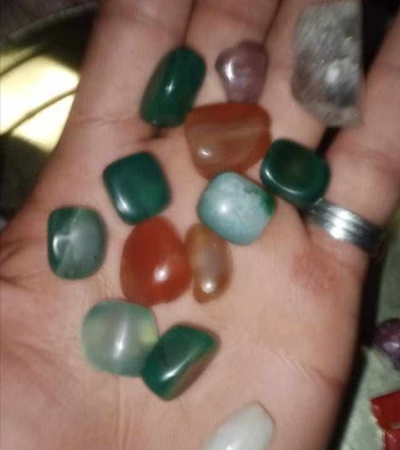 Թանկարժեք քարեր
Թանկարժեք քարեր
Թանկարժեք քարեր նրանց համար, ովքեր ցանկանում են գնելՄանրամասներ
-
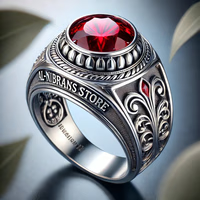 Մոհամեդ Իսմայիլ 3 ամիս առաջ
Մոհամեդ Իսմայիլ 3 ամիս առաջ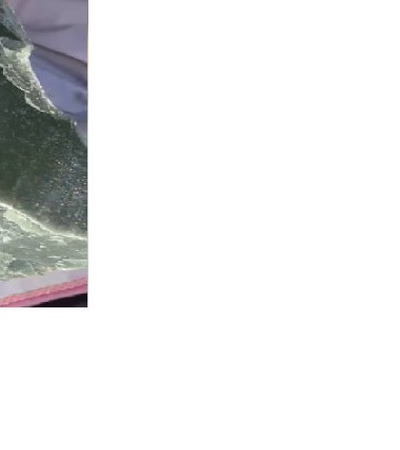 Թանկարժեք քարեր
Թանկարժեք քարեր
Ամենատարբեր թանկարժեք քարերՄանրամասներ
-
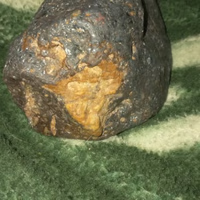 Աբդուլազիզ 3 ամիս առաջ
Աբդուլազիզ 3 ամիս առաջ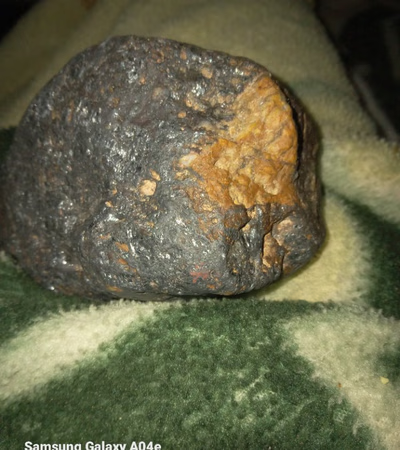 Մետեորիտ
Մետեորիտ
Քարի քաշը 1 կիլոգրամ և 200 գրամ էՄանրամասներ
-
 Սալահ Բեյք 3 ամիս առաջ
Սալահ Բեյք 3 ամիս առաջ Արժեքավոր Քարեր և Մետեորիտներ
Արժեքավոր Քարեր և Մետեորիտներ
Տարբերակող ՔարերՄանրամասներ
-
 Նուր Ալ-Դին Աքրա 3 ամիս առաջ
Նուր Ալ-Դին Աքրա 3 ամիս առաջ Թուրքիա
Սնունդ
Թուրքիա
Սնունդ
Շատ գերազանցՄանրամասներ
-
Ագաթի առևտուրը Արևմտյան Ասիայում. շուկայի տեղեկություններ և արտահանման միտումներ
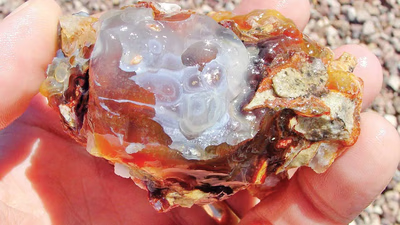 Ագաթը, որպես կիսաարժեքավոր գեմստոն, հայտնի է իր պայծառ գույներով և յուրահատուկ նախշերով, կենտրոնական դիրք ունի Արևմտյան Ասիայի և Մերձավոր Արևելքի առևտրային դինամիկայում: Այս տարածաշրջանը, հատկապես Իրանի նման երկրները, ունի նշանակալի ագաթի պաշարներ՝ դարձնելով այն գլոբալ ագաթի, օպալի և օնիքսի արտահանման կենտրոն: Իր դիմացկունության և Esthetic գրավչության շնորհիվ ագաթը շատ պահանջված է զարդերի և դեկորատիվ արդյունաբերություններում ամբողջ աշխարհում: Ասիական ագաթի շուկան Witnessing աճում է՝ սնուցվում տեղական և միջազգային գնորդների աճող պահանջարկով: Մերձավոր Արևելքի առևտրային հարթակները կարևոր դեր են խաղում գլոբալ շուկաները հաստատված արտահանողների և ներմուծողների հետ կապելու գործում՝ առաջարկելով թափանցիկություն և արդյունավետություն: Այս հարթակները տրամադրում են անհրաժեշտ ծառայություններ՝ արտադրանքի ցուցակներ, շուկայական տեղեկություններ և առևտրային գովազդ՝ ապահովելով սահմաններից անդին անխափան գործարքներ: Ագաթի առևտուրը՝ կողքին այլ գեմստոնների նման՝ տուֆը, ռուբինը և լապիս լազուլին՝ դարձել է շատ շահավետ տարածաշրջանի հարուստ երկրաբանական ռեսուրսների և ռազմավարական դիրքի շնորհիվ: Իրանը հատկապես առանձնանում է իր լայնածավալ ագաթի պաշարներով՝ զգալիորեն նպաստելով գեմստոնների առևտրին Արևմտյան Аսյայում: Ագաթի և նմանատիպ գեմստոնների արտահանման հնարավորությունները ուժեղանում են տարածաշրջանային B2B շուկայական հարթակներով՝ խթանելով բիզնես ցանցավորման հնարավորությունները և մատակարարման շղթաների լուծումները: Հաստատված արտահանողները օգտագործում են այս հարթակները տարածաշրջանային արտադրանքի ցուցակները ներկայացնելու համար՝ բարձրացնելով վստահությունը և գլոբալ հասանելիությունը: Բացի այդ, քրիզոկոլա ու տուֆը ավելացնում են տարածաշրջանի գրավչությունը իրենց յուրահատուկ գույներով ու մշակութային նշանակությամբ: Մերձավոր Արեւելքը ապահովում է ամուր առեւտրային ցանցեր այս քարերի համար` կապելով ասիական եւ գլոբալ շուկաները: Քանի որ ագաթի նման գեմստոնների պահանջարկը շարունակաբար աճում է` Aritral-ի նման հարթակները առաջարկում են AI-ով ղեկավարվող լուծումներ միջազգային առեւտուրը հեշտացնելու համար` հնարավորություն տալով բիզնեսներին արդյունավետորեն օգտվել այս աճող շուկայից:
Ագաթը, որպես կիսաարժեքավոր գեմստոն, հայտնի է իր պայծառ գույներով և յուրահատուկ նախշերով, կենտրոնական դիրք ունի Արևմտյան Ասիայի և Մերձավոր Արևելքի առևտրային դինամիկայում: Այս տարածաշրջանը, հատկապես Իրանի նման երկրները, ունի նշանակալի ագաթի պաշարներ՝ դարձնելով այն գլոբալ ագաթի, օպալի և օնիքսի արտահանման կենտրոն: Իր դիմացկունության և Esthetic գրավչության շնորհիվ ագաթը շատ պահանջված է զարդերի և դեկորատիվ արդյունաբերություններում ամբողջ աշխարհում: Ասիական ագաթի շուկան Witnessing աճում է՝ սնուցվում տեղական և միջազգային գնորդների աճող պահանջարկով: Մերձավոր Արևելքի առևտրային հարթակները կարևոր դեր են խաղում գլոբալ շուկաները հաստատված արտահանողների և ներմուծողների հետ կապելու գործում՝ առաջարկելով թափանցիկություն և արդյունավետություն: Այս հարթակները տրամադրում են անհրաժեշտ ծառայություններ՝ արտադրանքի ցուցակներ, շուկայական տեղեկություններ և առևտրային գովազդ՝ ապահովելով սահմաններից անդին անխափան գործարքներ: Ագաթի առևտուրը՝ կողքին այլ գեմստոնների նման՝ տուֆը, ռուբինը և լապիս լազուլին՝ դարձել է շատ շահավետ տարածաշրջանի հարուստ երկրաբանական ռեսուրսների և ռազմավարական դիրքի շնորհիվ: Իրանը հատկապես առանձնանում է իր լայնածավալ ագաթի պաշարներով՝ զգալիորեն նպաստելով գեմստոնների առևտրին Արևմտյան Аսյայում: Ագաթի և նմանատիպ գեմստոնների արտահանման հնարավորությունները ուժեղանում են տարածաշրջանային B2B շուկայական հարթակներով՝ խթանելով բիզնես ցանցավորման հնարավորությունները և մատակարարման շղթաների լուծումները: Հաստատված արտահանողները օգտագործում են այս հարթակները տարածաշրջանային արտադրանքի ցուցակները ներկայացնելու համար՝ բարձրացնելով վստահությունը և գլոբալ հասանելիությունը: Բացի այդ, քրիզոկոլա ու տուֆը ավելացնում են տարածաշրջանի գրավչությունը իրենց յուրահատուկ գույներով ու մշակութային նշանակությամբ: Մերձավոր Արեւելքը ապահովում է ամուր առեւտրային ցանցեր այս քարերի համար` կապելով ասիական եւ գլոբալ շուկաները: Քանի որ ագաթի նման գեմստոնների պահանջարկը շարունակաբար աճում է` Aritral-ի նման հարթակները առաջարկում են AI-ով ղեկավարվող լուծումներ միջազգային առեւտուրը հեշտացնելու համար` հնարավորություն տալով բիզնեսներին արդյունավետորեն օգտվել այս աճող շուկայից:
-
Ամբերի առևտուրը Մերձավոր Արևելքում՝ ծովի ոսկին Արևմտյան Ասիայի շուկաներում
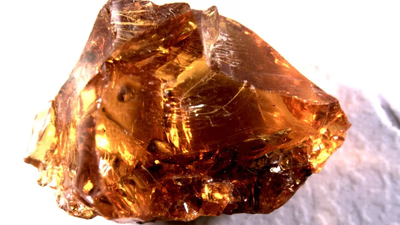 Ամբերը, որը հաճախ կոչվում է "Ծովի ոսկի," յուրահատուկ դիրք ունի Մերձավոր Արևելքի և Արևմտյան Ասիայի առևտրային շուկաներում: Նրա օրգանական ծագումն ու հարուստ երանգները՝ մեղրիից մինչև խորը նարնջագույն, այն դարձնում են արժեքավոր քար համաշխարհային զարդագործության արդյունաբերությունում: Մերձավոր Արևելքի առևտրային հարթակները, հատկապես B2B շուկաները, կարևոր դեր են խաղում հաստատված արտահանողների և ներմուծողների կապը ապահովելու համար ամբերի և այլ քարերի՝ ինչպես թյուրքիզը, քրիզոկոլլան ու ռուբինը: Արեւելյան ամբեր վաճառողները Հայաստանում օգտագործում են այս հարթակները՝ հեշտացնելով գործարքները և հասանելիություն ունենալով տարածաշրջանային ապրանքների ցուցակներին՝ ապահովելով թափանցիկություն և վստահություն: Ամբերի նշանակությունը գերազանցում է Esthetics-ը: Տարբեր մշակույթներում հավատում են նրա բուժիչ հատկություններին, ինչը ավելացնում է նրա շուկայական արժեքը: Մերձավոր Արեւելքը որպես ապրանքների առեւտրի կենտրոնական հանգույց տեսնում է ամբերի և դրա ածանցյալների պահանջարկի աճ: Տարածաշրջանային հարթակները տրամադրում են շուկայական տեղեկություններ՝ օգնելով ձեռնարկություններին արդյունավետորեն կողմնորոշվել գների միտումների և պահանջարկի տատանումների մեջ: Ամբերը չի հանդիսանում միայն այն քարը, որը հաջողությամբ զարգանում է այս դինամիկայի ներքո: Քրիզոկոլլան իր աչքի ընկնող կապույտ-կանաչ գույներով ձեռք է բերում ժողովրդականություն զարդագործության ոլորտում, մինչդեռ թյուրքիզն ու լապիս լազուլին շարունակում են նշվել իրենց հնագույն կապերով Մերձավոր արևելքի ժառանգության հետ: Էմերալդները կապված են բարեկեցության հետ, իսկ ադամանդները խորհրդանշում են prestij-ը. այս քարերը լայնորեն վաճառվում են West Asian մատակարարման ցանցերով: Սա ամրապնդվում է հաստատված B2B հարթակներով, որոնք բարձրացնում են թափանցիկությունը և հեշտացնում գլոբալ ցանցումը: Aritral-ը՝ AI-հենված B2B հարթակը աջակցում է այս համակարգին՝ առաջարկելով գործիքներ՝ AI-հենված մարկետինգի և գլոբալ վաճառքների աջակցությամբ: Այս հնարավորությունները հնարավորություն են տալիս վաճառողներին կառավարելու պրոֆիլները, գովազդելու ապրանքները և կապվելու հաստատված գնորդների ու վաճառողների հետ: Մերձավոր արևելքի ռազմավարական դիրքով ու ամուր առևտրային ցանցերով քարերը՝ ինչպես ամբերը պատրաստվում են շարունակական աճի համար՝ ամրապնդելով տարածաշրջանի կարգավիճակը որպես գլոբալ առևտրային կենտրոն:
Ամբերը, որը հաճախ կոչվում է "Ծովի ոսկի," յուրահատուկ դիրք ունի Մերձավոր Արևելքի և Արևմտյան Ասիայի առևտրային շուկաներում: Նրա օրգանական ծագումն ու հարուստ երանգները՝ մեղրիից մինչև խորը նարնջագույն, այն դարձնում են արժեքավոր քար համաշխարհային զարդագործության արդյունաբերությունում: Մերձավոր Արևելքի առևտրային հարթակները, հատկապես B2B շուկաները, կարևոր դեր են խաղում հաստատված արտահանողների և ներմուծողների կապը ապահովելու համար ամբերի և այլ քարերի՝ ինչպես թյուրքիզը, քրիզոկոլլան ու ռուբինը: Արեւելյան ամբեր վաճառողները Հայաստանում օգտագործում են այս հարթակները՝ հեշտացնելով գործարքները և հասանելիություն ունենալով տարածաշրջանային ապրանքների ցուցակներին՝ ապահովելով թափանցիկություն և վստահություն: Ամբերի նշանակությունը գերազանցում է Esthetics-ը: Տարբեր մշակույթներում հավատում են նրա բուժիչ հատկություններին, ինչը ավելացնում է նրա շուկայական արժեքը: Մերձավոր Արեւելքը որպես ապրանքների առեւտրի կենտրոնական հանգույց տեսնում է ամբերի և դրա ածանցյալների պահանջարկի աճ: Տարածաշրջանային հարթակները տրամադրում են շուկայական տեղեկություններ՝ օգնելով ձեռնարկություններին արդյունավետորեն կողմնորոշվել գների միտումների և պահանջարկի տատանումների մեջ: Ամբերը չի հանդիսանում միայն այն քարը, որը հաջողությամբ զարգանում է այս դինամիկայի ներքո: Քրիզոկոլլան իր աչքի ընկնող կապույտ-կանաչ գույներով ձեռք է բերում ժողովրդականություն զարդագործության ոլորտում, մինչդեռ թյուրքիզն ու լապիս լազուլին շարունակում են նշվել իրենց հնագույն կապերով Մերձավոր արևելքի ժառանգության հետ: Էմերալդները կապված են բարեկեցության հետ, իսկ ադամանդները խորհրդանշում են prestij-ը. այս քարերը լայնորեն վաճառվում են West Asian մատակարարման ցանցերով: Սա ամրապնդվում է հաստատված B2B հարթակներով, որոնք բարձրացնում են թափանցիկությունը և հեշտացնում գլոբալ ցանցումը: Aritral-ը՝ AI-հենված B2B հարթակը աջակցում է այս համակարգին՝ առաջարկելով գործիքներ՝ AI-հենված մարկետինգի և գլոբալ վաճառքների աջակցությամբ: Այս հնարավորությունները հնարավորություն են տալիս վաճառողներին կառավարելու պրոֆիլները, գովազդելու ապրանքները և կապվելու հաստատված գնորդների ու վաճառողների հետ: Մերձավոր արևելքի ռազմավարական դիրքով ու ամուր առևտրային ցանցերով քարերը՝ ինչպես ամբերը պատրաստվում են շարունակական աճի համար՝ ամրապնդելով տարածաշրջանի կարգավիճակը որպես գլոբալ առևտրային կենտրոն:
-
Մերձավոր Արևելքի դիամանդի առևտուրը. Տեղեկություններ և ապագայի միտումներ
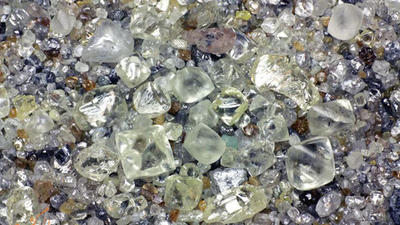 Մերձավոր Արևելքը և Արևմտյան Азия increasingly կարևոր են գլոբալ դիամանդային առևտրում՝ օգտագործելով իրենց ռազմավարական դիրքը որպես խաչմերուկ արևելք-արևմուտք: Չնայած տարածաշրջանը չի հանդիսանում առաջատար դիամանդ արտադրող, այն զբաղեցնում է վեցերորդ տեղը աշխարհում՝ նկատելի ռեսուրսներով որոշակի տարածքներում: Օրինակ՝ որոշ Մերձավոր Արևելքի տարածքներ տեսնում են աճող հետաքրքրություն դիամանդների հանքարդյունաբերության նկատմամբ՝ աջակցված հետազոտական տեխնիկաների և շուկայական պահանջարկով: Սակայն Մերձավոր Արևելքի կոմերցիոն առավելությունը կայանում է իր դերակատարությունում որպես առևտրային կենտրոն, այլ ոչ թե հիմնական արտադրող: Հաստատված արտահանողները և ներմուծողները հենվում են տարածաշրջանային B2B շուկաների վրա՝ ապահովելու անվտանգ և արդյունավետ առևտուր: Դիամանդների առևտուրը Մերձավոր Արևելքում օգտվում է լավ ինտեգրված մատակարարման ցանցից և dinamik շուկայական տեղեկություններից: Այս հարթակները հնարավորություն են տալիս բիզնեսներին ցուցակագրելու տարածաշրջանային ապրանքներ, գովազդելու առևտրային հնարավորություններ և կապ հաստատելու շահագրգիռ կողմերի հետ ամբողջ Аսիայի տարածքում: Դիանդները՝ ինչպես նաև այլ քարեր՝ օրինակ՝ տուրկուազա, ռուբին և էմերալդ, լայնորեն վաճառվում են հատկապես զարդերի և լյուքս հատվածներում: Դիանդներին լրացնելով՝ այլ հանքանյութեր՝ օրինակ՝ լապիս լազուլի, ժադե և բուր (հայտնի որպես «Ծովի ոսկին») լրացնում են Մերձավոր Արևելքի քարերի տնտեսությունը: Պատմականորեն դիանդները ներկայացրել են կարողություն, իսկ նրանց պահանջարկը շարունակում է աճել գլոբալ մակարդակում՝ Аսիան ի հայտ գալով որպես նշանակալի սպառողական բազա: առևտրային հարթակները պարզեցնում են այս գործընթացը՝ տրամադրելով AI-ով ղեկավարվող մարկետինգ լուծումներ, ապրանքների ցուցակագրում և հաստատված օգտվողների ցանցեր: Օրինակ՝ Aritral պլատֆորմները հնարավորություն են տալիս բիզնեսներին հեշտությամբ նավարկել բարդ ներմուծման-արտահանման միջավայրում: Այս թվային փոփոխությունը increasingly կարևոր է քանի որ դիանդանի առևտուրը շարժվում է ապագա ՝ սպառողների նախասիրությունների շնորհիվ թափանցիկության ու էթիկական աղբյուրների նկատմամբ: Առևտրային տեխնոլոգիաներում նորարարություններով ու ռազմավարական աշխարհագրական դիրքով Մերձավոր Արևելքը շարունակում է մնալ գլոբալ դիանդանի ու քարերի տնտեսության հիմնասյուն:
Մերձավոր Արևելքը և Արևմտյան Азия increasingly կարևոր են գլոբալ դիամանդային առևտրում՝ օգտագործելով իրենց ռազմավարական դիրքը որպես խաչմերուկ արևելք-արևմուտք: Չնայած տարածաշրջանը չի հանդիսանում առաջատար դիամանդ արտադրող, այն զբաղեցնում է վեցերորդ տեղը աշխարհում՝ նկատելի ռեսուրսներով որոշակի տարածքներում: Օրինակ՝ որոշ Մերձավոր Արևելքի տարածքներ տեսնում են աճող հետաքրքրություն դիամանդների հանքարդյունաբերության նկատմամբ՝ աջակցված հետազոտական տեխնիկաների և շուկայական պահանջարկով: Սակայն Մերձավոր Արևելքի կոմերցիոն առավելությունը կայանում է իր դերակատարությունում որպես առևտրային կենտրոն, այլ ոչ թե հիմնական արտադրող: Հաստատված արտահանողները և ներմուծողները հենվում են տարածաշրջանային B2B շուկաների վրա՝ ապահովելու անվտանգ և արդյունավետ առևտուր: Դիամանդների առևտուրը Մերձավոր Արևելքում օգտվում է լավ ինտեգրված մատակարարման ցանցից և dinamik շուկայական տեղեկություններից: Այս հարթակները հնարավորություն են տալիս բիզնեսներին ցուցակագրելու տարածաշրջանային ապրանքներ, գովազդելու առևտրային հնարավորություններ և կապ հաստատելու շահագրգիռ կողմերի հետ ամբողջ Аսիայի տարածքում: Դիանդները՝ ինչպես նաև այլ քարեր՝ օրինակ՝ տուրկուազա, ռուբին և էմերալդ, լայնորեն վաճառվում են հատկապես զարդերի և լյուքս հատվածներում: Դիանդներին լրացնելով՝ այլ հանքանյութեր՝ օրինակ՝ լապիս լազուլի, ժադե և բուր (հայտնի որպես «Ծովի ոսկին») լրացնում են Մերձավոր Արևելքի քարերի տնտեսությունը: Պատմականորեն դիանդները ներկայացրել են կարողություն, իսկ նրանց պահանջարկը շարունակում է աճել գլոբալ մակարդակում՝ Аսիան ի հայտ գալով որպես նշանակալի սպառողական բազա: առևտրային հարթակները պարզեցնում են այս գործընթացը՝ տրամադրելով AI-ով ղեկավարվող մարկետինգ լուծումներ, ապրանքների ցուցակագրում և հաստատված օգտվողների ցանցեր: Օրինակ՝ Aritral պլատֆորմները հնարավորություն են տալիս բիզնեսներին հեշտությամբ նավարկել բարդ ներմուծման-արտահանման միջավայրում: Այս թվային փոփոխությունը increasingly կարևոր է քանի որ դիանդանի առևտուրը շարժվում է ապագա ՝ սպառողների նախասիրությունների շնորհիվ թափանցիկության ու էթիկական աղբյուրների նկատմամբ: Առևտրային տեխնոլոգիաներում նորարարություններով ու ռազմավարական աշխարհագրական դիրքով Մերձավոր Արևելքը շարունակում է մնալ գլոբալ դիանդանի ու քարերի տնտեսության հիմնասյուն:
-
Էմերալդ և Մերձավոր Արևելքի քարերի առևտուր
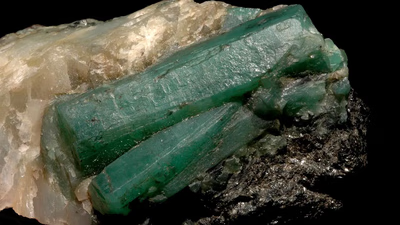 Էմերալդը, որը համարվում է ադամանդից հետո երկրորդ ամենաթանկարժեք քարն, կարևոր դեր ունի Մերձավոր Արևելքում և Արևմտյան Ասիայի քարերի առևտրում: Այս արժեքավոր քարը հայտնի է իր վառ կանաչ գույնով, որը խորհրդանշում է հարստություն և繁荣: Մերձավոր Արևելքը ծառայում է որպես կենտրոնական հանգույց էմերալդների ներմուծման և արտահանման համար՝ օգտագործելով իր ռազմավարական դիրքը՝ կապելու ասիական և գլոբալ շուկաները: Վավերացված արտահանողները և ներմուծողները նման Aritral հարթակներում ապահովում են ավելի անվտանգ ու թափանցիկ առևտրային միջավայր՝ հաստատելով վստահություն գնորդների ու վաճառողների միջև: Էմերալդի արժեքը ոչ միայն դրա հազվագյուտության մեջ է, այլ նաև այն ընկալման մեջ որպես քարի, որը կարող է ավելացնել հարստության ու հաջողության հոսքը: Բնական էմերալդները տարբերակելը սինթետիկներից պահանջում է փորձառություն, քանի որ իսկական քարերը ցուցադրում են փոքր ներարկումներ ու առանձնահատուկ գույնի վառություն: Կենտրոնական էմերալդային պաշարներն ու հանքերը գտնվում են Կոլումբիայում, Զամբիայի և Բրազիլիայում՝ զգալի պահանջարկով Մերձավոր Արևելքի զարդեղենի շուկայից: Էմերալդներից բացի՝ տարածաշրջանի քարերի առևտուրը ներառում է սպինել, տուֆ, ռուբին և լապիս լազուլի: Սպինելը հայտնի է իր դիմացկունությամբ ու գույների բազմազանությամբ՝ ձեռք բերելով ժողովրդականություն Արևմտյան Ասիայում իր մատչելիության ու Esthetic գրավչության շնորհիվ: Նմանապես՝ Մերձավոր Արևելքի մարգարիտի ու տուֆի շուկաները繁荣 են ապրում՝ մարգարիտները խորհրդանշելով էլեգանտությունը և տուֆը՝ մշակութային ժառանգությունը: B2B հարթակները նման Aritral-ը պարզեցնում են քարերի առևտուրը՝ առաջարկելով առաջադեմ մատակարարման շղթայի լուծումներ, տարածաշրջանային արտադրանքի ցուցակներ ու շուկայական տեղեկություններ: Այս ենթակառուցվածքը աջակցում է քարերի, ֆոսիլների ու մետեորիտների արդյունավետ առևտրին՝ օգնելով ձեռնարկություններին կողմնորոշվել գնային դինամիկայում ու շուկայական միտքերում: Մերձավոր Արեւելքի դերը որպես քարերի առեւտրի կենտրոն ընդգծում է նրա կարևորությունը` կապելու ասիան միջազգային շուկաների հետ` խթանելով տնտեսական աճը տարածաշրջանում:
Էմերալդը, որը համարվում է ադամանդից հետո երկրորդ ամենաթանկարժեք քարն, կարևոր դեր ունի Մերձավոր Արևելքում և Արևմտյան Ասիայի քարերի առևտրում: Այս արժեքավոր քարը հայտնի է իր վառ կանաչ գույնով, որը խորհրդանշում է հարստություն և繁荣: Մերձավոր Արևելքը ծառայում է որպես կենտրոնական հանգույց էմերալդների ներմուծման և արտահանման համար՝ օգտագործելով իր ռազմավարական դիրքը՝ կապելու ասիական և գլոբալ շուկաները: Վավերացված արտահանողները և ներմուծողները նման Aritral հարթակներում ապահովում են ավելի անվտանգ ու թափանցիկ առևտրային միջավայր՝ հաստատելով վստահություն գնորդների ու վաճառողների միջև: Էմերալդի արժեքը ոչ միայն դրա հազվագյուտության մեջ է, այլ նաև այն ընկալման մեջ որպես քարի, որը կարող է ավելացնել հարստության ու հաջողության հոսքը: Բնական էմերալդները տարբերակելը սինթետիկներից պահանջում է փորձառություն, քանի որ իսկական քարերը ցուցադրում են փոքր ներարկումներ ու առանձնահատուկ գույնի վառություն: Կենտրոնական էմերալդային պաշարներն ու հանքերը գտնվում են Կոլումբիայում, Զամբիայի և Բրազիլիայում՝ զգալի պահանջարկով Մերձավոր Արևելքի զարդեղենի շուկայից: Էմերալդներից բացի՝ տարածաշրջանի քարերի առևտուրը ներառում է սպինել, տուֆ, ռուբին և լապիս լազուլի: Սպինելը հայտնի է իր դիմացկունությամբ ու գույների բազմազանությամբ՝ ձեռք բերելով ժողովրդականություն Արևմտյան Ասիայում իր մատչելիության ու Esthetic գրավչության շնորհիվ: Նմանապես՝ Մերձավոր Արևելքի մարգարիտի ու տուֆի շուկաները繁荣 են ապրում՝ մարգարիտները խորհրդանշելով էլեգանտությունը և տուֆը՝ մշակութային ժառանգությունը: B2B հարթակները նման Aritral-ը պարզեցնում են քարերի առևտուրը՝ առաջարկելով առաջադեմ մատակարարման շղթայի լուծումներ, տարածաշրջանային արտադրանքի ցուցակներ ու շուկայական տեղեկություններ: Այս ենթակառուցվածքը աջակցում է քարերի, ֆոսիլների ու մետեորիտների արդյունավետ առևտրին՝ օգնելով ձեռնարկություններին կողմնորոշվել գնային դինամիկայում ու շուկայական միտքերում: Մերձավոր Արեւելքի դերը որպես քարերի առեւտրի կենտրոն ընդգծում է նրա կարևորությունը` կապելու ասիան միջազգային շուկաների հետ` խթանելով տնտեսական աճը տարածաշրջանում:
-
Թյուրքիզի և քարերի առևտուրը Մերձավոր Արևելքում
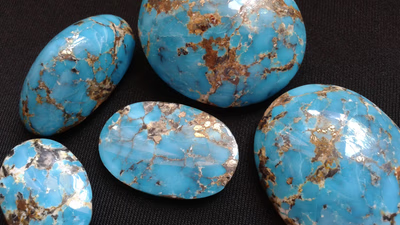 Թյուրքիզը՝ իր վառ կապույտ-կանաչ երանգներով հայտնի գրավիչ քարը, դարեր շարունակ եղել է Մերձավոր Արևելքի առևտրի կարևոր մասը: Պատմականորեն պարսկական թյուրքիզը՝ իր ինտենսիվ գույնով և նվազագույն երակներով հայտնի՝ եղել է տարածաշրջանի քարային տնտեսության հիմքը: Այսօր Մերձավոր Արևելքը շարունակում է մնալ կարևոր կենտրոն թյուրքիզի և այլ քարերի՝ ռուբին, էմերալդ և լապիս լազուլի համար՝ ծառայելով որպես կամուրջ ասիական մատակարարների և գլոբալ գնորդների միջև: Արևմտյան Ասիայի թյուրքիզի շուկան զարգանում է հաստատված արտահանողների և ներմուծողների վրա՝ օգտագործելով B2B հարթակներ տարածաշրջանային արտադրանքի ցուցակագրումը հեշտացնելու և ապահով գործարքներ ապահովելու համար: Թյուրքիզի արժեքն ու գինը տարբերվում են ծագման, գույնի, մատրիցայի ձևաչափերի և կարատի քաշի հիման վրա: Պարսկական թյուրքիզը հատկապես պահանջում է բարձր գներ իր պատմական նշանակության և որակի պատճառով: Թյուրքիզից բացի՝ Մերձավոր Արևելքի քարային առևտուրը ներառում է բարձր պահանջարկ ունեցող քարեր՝ ռուբինները, որոնք գնահատվում են իրենց վառ կարմիր երանգով և զարդագործության ոլորտում ունեցած դերով, ինչպես նաև էմերալդները, որոնք երկրորդն են միայն ադամանդներից perceived արժեքում: Լապիս լազուլին իր խոր կապույտ երանգներով ևս մեկ կարևոր առևտրային ապրանք է՝ հաճախ ձեռք բերվող արևմտյան ասյայից՝ գլոբալ պահանջարկը բավարարելու համար զարդարանքի ու զարդագործության օգտագործման համար: Սպինելը, քրիսոկոլան, մարգարիտները և ագատը նույնպես նպաստում են տարածաշրջանի քարային առևտրին՝ յուրաքանչյուր քարի առաջարկելով յուրահատուկ հատկանիշներ ու շուկայական դինամիկա: Մատակարարման շղթայի լուծումները կարևոր դեր են խաղում այս քարի արդյունավետ ներմուծման ու արտահանման ապահովման գործում: Aritral նման հարթակները պարզեցնում են այս գործընթացը՝ տրամադրելով AI-ով ղեկավարվող մարկետինգ, արտադրանքի ցուցակագրում ու ուղղակի հաղորդակցության գործիքներ՝ բարելավելով շուկայական տեղեկությունները ու ցանցային հնարավորությունները տարածաշրջանի բիզնեսների համար: Վերջապես կարելի ասել որ Մերձավոր Արևելքի քարային շուկան դինամիկ համակարգ է` միացնելով հնագույն ավանդույթները ժամանակակից առևտրային պրակտիկայի հետ: Թյուրքիզը մյուս արժեքավոր քարերի կողքին շարունակում է գրավել գլոբալ շուկաները` ընդգծելով տարածաշրջանի կարևոր դերը միջազգային առևտրում:
Թյուրքիզը՝ իր վառ կապույտ-կանաչ երանգներով հայտնի գրավիչ քարը, դարեր շարունակ եղել է Մերձավոր Արևելքի առևտրի կարևոր մասը: Պատմականորեն պարսկական թյուրքիզը՝ իր ինտենսիվ գույնով և նվազագույն երակներով հայտնի՝ եղել է տարածաշրջանի քարային տնտեսության հիմքը: Այսօր Մերձավոր Արևելքը շարունակում է մնալ կարևոր կենտրոն թյուրքիզի և այլ քարերի՝ ռուբին, էմերալդ և լապիս լազուլի համար՝ ծառայելով որպես կամուրջ ասիական մատակարարների և գլոբալ գնորդների միջև: Արևմտյան Ասիայի թյուրքիզի շուկան զարգանում է հաստատված արտահանողների և ներմուծողների վրա՝ օգտագործելով B2B հարթակներ տարածաշրջանային արտադրանքի ցուցակագրումը հեշտացնելու և ապահով գործարքներ ապահովելու համար: Թյուրքիզի արժեքն ու գինը տարբերվում են ծագման, գույնի, մատրիցայի ձևաչափերի և կարատի քաշի հիման վրա: Պարսկական թյուրքիզը հատկապես պահանջում է բարձր գներ իր պատմական նշանակության և որակի պատճառով: Թյուրքիզից բացի՝ Մերձավոր Արևելքի քարային առևտուրը ներառում է բարձր պահանջարկ ունեցող քարեր՝ ռուբինները, որոնք գնահատվում են իրենց վառ կարմիր երանգով և զարդագործության ոլորտում ունեցած դերով, ինչպես նաև էմերալդները, որոնք երկրորդն են միայն ադամանդներից perceived արժեքում: Լապիս լազուլին իր խոր կապույտ երանգներով ևս մեկ կարևոր առևտրային ապրանք է՝ հաճախ ձեռք բերվող արևմտյան ասյայից՝ գլոբալ պահանջարկը բավարարելու համար զարդարանքի ու զարդագործության օգտագործման համար: Սպինելը, քրիսոկոլան, մարգարիտները և ագատը նույնպես նպաստում են տարածաշրջանի քարային առևտրին՝ յուրաքանչյուր քարի առաջարկելով յուրահատուկ հատկանիշներ ու շուկայական դինամիկա: Մատակարարման շղթայի լուծումները կարևոր դեր են խաղում այս քարի արդյունավետ ներմուծման ու արտահանման ապահովման գործում: Aritral նման հարթակները պարզեցնում են այս գործընթացը՝ տրամադրելով AI-ով ղեկավարվող մարկետինգ, արտադրանքի ցուցակագրում ու ուղղակի հաղորդակցության գործիքներ՝ բարելավելով շուկայական տեղեկությունները ու ցանցային հնարավորությունները տարածաշրջանի բիզնեսների համար: Վերջապես կարելի ասել որ Մերձավոր Արևելքի քարային շուկան դինամիկ համակարգ է` միացնելով հնագույն ավանդույթները ժամանակակից առևտրային պրակտիկայի հետ: Թյուրքիզը մյուս արժեքավոր քարերի կողքին շարունակում է գրավել գլոբալ շուկաները` ընդգծելով տարածաշրջանի կարևոր դերը միջազգային առևտրում:
-
Ժադե քարերի առևտուրը Արևմտյան Ասիայում. Տեղեկություններ և շուկայի միտումներ
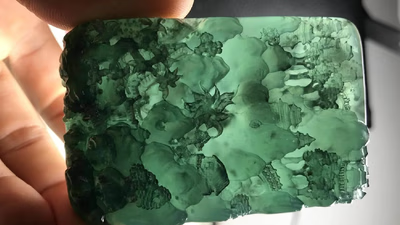 Ժադեն, որը հաճախ անվանում են "Երկնային քար", կարևոր դեր է խաղում Արևմտյան Ասիայի և Մերձավոր Արևելքի քարերի առևտրում: Մերձավոր Արևելքի ժադե շուկան հաստատված արտահանողների և ներմուծողների կենտրոն է, որը կապում է գլոբալ գնորդներին տարածաշրջանային մատակարարների հետ՝ դինամիկ B2B հարթակների միջոցով: Ժադեն հայտնի է իր տրանսցենդենտալ հատկություններով և հարուստ մշակութային նշանակությամբ՝ պահանջարկ ունենալով զարդերում, դեկորում և հոգևոր օգտագործման համար: Ժադեի գները ազդվում են նրա գույնից, պարզությունից, ծագումից և ձեռագործությունից՝ բարձրակարգ ժադեները ստացվում են հայտնի հանքերից՝ բարձր արժեքով: Մերձավոր Արեւելքը կարևոր կապ է հանդիսանում Ասիայի եւ միջազգային շուկաների միջեւ՝ facilitating the trade of not only jade but also other gemstones like turquoise, ruby and lapis lazuli. Platforms specializing in gemstones offer detailed product listings, market insights and supply chain solutions ensuring transparency and efficiency. Jade's appeal lies in its vibrant green hues and symbolic value making it a sought-after commodity for both collectors and commercial buyers. In addition to jade the region also excels in the trade of other rare minerals such as chrysocolla spinel and amber. Verified exporters leverage advanced trade advertising platforms to promote these products while importers benefit from access to authenticated sources. The Middle Eastern jade market supported by robust supply chain networks continues to thrive as a vital component of its broader gemstone trade ecosystem. Aritral an AI-driven B2B platform simplifies these transactions by providing product listing services direct communication tools and AI-powered marketing solutions to enhance global sales. By fostering trust and efficiency platforms like Aritral enable seamless trading experiences for jade and other gemstones in the Middle East and beyond.
Ժադեն, որը հաճախ անվանում են "Երկնային քար", կարևոր դեր է խաղում Արևմտյան Ասիայի և Մերձավոր Արևելքի քարերի առևտրում: Մերձավոր Արևելքի ժադե շուկան հաստատված արտահանողների և ներմուծողների կենտրոն է, որը կապում է գլոբալ գնորդներին տարածաշրջանային մատակարարների հետ՝ դինամիկ B2B հարթակների միջոցով: Ժադեն հայտնի է իր տրանսցենդենտալ հատկություններով և հարուստ մշակութային նշանակությամբ՝ պահանջարկ ունենալով զարդերում, դեկորում և հոգևոր օգտագործման համար: Ժադեի գները ազդվում են նրա գույնից, պարզությունից, ծագումից և ձեռագործությունից՝ բարձրակարգ ժադեները ստացվում են հայտնի հանքերից՝ բարձր արժեքով: Մերձավոր Արեւելքը կարևոր կապ է հանդիսանում Ասիայի եւ միջազգային շուկաների միջեւ՝ facilitating the trade of not only jade but also other gemstones like turquoise, ruby and lapis lazuli. Platforms specializing in gemstones offer detailed product listings, market insights and supply chain solutions ensuring transparency and efficiency. Jade's appeal lies in its vibrant green hues and symbolic value making it a sought-after commodity for both collectors and commercial buyers. In addition to jade the region also excels in the trade of other rare minerals such as chrysocolla spinel and amber. Verified exporters leverage advanced trade advertising platforms to promote these products while importers benefit from access to authenticated sources. The Middle Eastern jade market supported by robust supply chain networks continues to thrive as a vital component of its broader gemstone trade ecosystem. Aritral an AI-driven B2B platform simplifies these transactions by providing product listing services direct communication tools and AI-powered marketing solutions to enhance global sales. By fostering trust and efficiency platforms like Aritral enable seamless trading experiences for jade and other gemstones in the Middle East and beyond.
-
Լապիս լազուլի առևտուրը Արևմտյան Ասիայում և Մերձավոր Արևելքի գեմստոնների շուկաներում
 Լապիս լազուլին, mesmerizing azure gemstone, centuries-long trade and culture cornerstone in West Asia. Known for deep blue color and spiritual properties, it holds prominent place in global gemstone market, particularly in Middle East and Asia. This region serves as critical trade platform, leveraging historical trade routes and modern B2B marketplaces to connect verified exporters and importers for gemstones like lapis lazuli, ruby, emerald, and turquoise. The Middle East as hub for commodity trade facilitates import and export of lapis lazuli through well-structured supply chain solutions and regional product listings. This enables businesses to tap into market insights and enhance their reach across West Asia and beyond. Lapis lazuli mines primarily located in Afghanistan are central to its trade with the stone being used in jewelry decor and chakra therapy. Differentiating genuine lapis lazuli from synthetic variations remains key challenge but modern techniques and trade standards help ensure authenticity. Emerald one of the most precious stones after diamonds also plays significant role in regional trade driving economic value and financial flow. Similarly gemstones like spinel turquoise amber underline diverse market dynamics in Middle East. Spinel with vibrant hues is particularly popular in jewelry while turquoise often linked to ancient Middle Eastern cultures continues to thrive in contemporary trade. Other stones like tanzanite jade charoite further diversify the market attracting international buyers. Platforms like Aritral simplify these global trade dynamics by offering AI-powered marketing product listings verified sourcing solutions. Such platforms ensure that businesses remain competitive in gemstone trade while navigating complexities of Middle Eastern Asian markets.
Լապիս լազուլին, mesmerizing azure gemstone, centuries-long trade and culture cornerstone in West Asia. Known for deep blue color and spiritual properties, it holds prominent place in global gemstone market, particularly in Middle East and Asia. This region serves as critical trade platform, leveraging historical trade routes and modern B2B marketplaces to connect verified exporters and importers for gemstones like lapis lazuli, ruby, emerald, and turquoise. The Middle East as hub for commodity trade facilitates import and export of lapis lazuli through well-structured supply chain solutions and regional product listings. This enables businesses to tap into market insights and enhance their reach across West Asia and beyond. Lapis lazuli mines primarily located in Afghanistan are central to its trade with the stone being used in jewelry decor and chakra therapy. Differentiating genuine lapis lazuli from synthetic variations remains key challenge but modern techniques and trade standards help ensure authenticity. Emerald one of the most precious stones after diamonds also plays significant role in regional trade driving economic value and financial flow. Similarly gemstones like spinel turquoise amber underline diverse market dynamics in Middle East. Spinel with vibrant hues is particularly popular in jewelry while turquoise often linked to ancient Middle Eastern cultures continues to thrive in contemporary trade. Other stones like tanzanite jade charoite further diversify the market attracting international buyers. Platforms like Aritral simplify these global trade dynamics by offering AI-powered marketing product listings verified sourcing solutions. Such platforms ensure that businesses remain competitive in gemstone trade while navigating complexities of Middle Eastern Asian markets.
-
Մերձավոր Արևելքի մարգարիտների և քարերի առևտրի տեղեկություններ
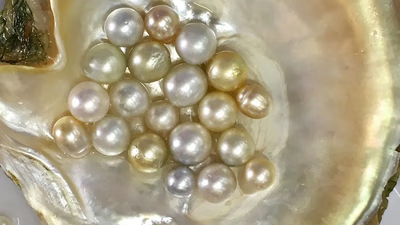 Մերձավոր Արևելքի մարգարիտի շուկան երկար ժամանակ եղել է տարածաշրջանի հարուստ առևտրի պատմության հիմքը, հատկապես Պարսկական ծոցի շուրջ, որը հայտնի է աշխարհի լավագույն բնական մարգարիտներով: Մարգարիտները, որոնք հաճախ անվանվում են ‘ծովի ադամանդներ’, շարունակում են flourish in the modern commodity trade of West Asia, bolstered by growing demand from neighboring Asian markets. The distinction between natural pearls, cultured pearls, and artificial alternatives plays a critical role in pricing, with natural pearls remaining the most valuable due to their rarity and unique formation process. The Persian Gulf remains a global hub for pearl fishing, a tradition steeped in history but evolving through modern supply chain solutions to meet international standards. The import and export of pearls in the Middle East are facilitated by B2B marketplaces, which connect verified exporters and importers while ensuring transparency and efficiency. These platforms also provide market insights, allowing businesses to navigate fluctuating demand and pricing influenced by factors like quality, size, and origin. The rise of trade advertising platforms and business networking opportunities further supports the visibility and global reach of Middle Eastern pearl traders. The Middle East also plays a significant role in the broader gemstone market, including chrysocolla, turquoise, ruby, emerald, and lapis lazuli. Chrysocolla with its vibrant blue-green hues and turquoise remain particularly sought after in jewelry markets while gemstones like ruby and emerald cater to high-end luxury buyers. These stones often pass through the same trade and supply chain networks as pearls leveraging regional strengths in import-export frameworks. Aritral an AI-driven B2B trade platform enhances this ecosystem by offering product listings global sales assistance AI-powered marketing and profile management simplifying transactions for both pearls and gemstones. It empowers Middle Eastern businesses to expand into global markets efficiently while maintaining trust and transparency.
Մերձավոր Արևելքի մարգարիտի շուկան երկար ժամանակ եղել է տարածաշրջանի հարուստ առևտրի պատմության հիմքը, հատկապես Պարսկական ծոցի շուրջ, որը հայտնի է աշխարհի լավագույն բնական մարգարիտներով: Մարգարիտները, որոնք հաճախ անվանվում են ‘ծովի ադամանդներ’, շարունակում են flourish in the modern commodity trade of West Asia, bolstered by growing demand from neighboring Asian markets. The distinction between natural pearls, cultured pearls, and artificial alternatives plays a critical role in pricing, with natural pearls remaining the most valuable due to their rarity and unique formation process. The Persian Gulf remains a global hub for pearl fishing, a tradition steeped in history but evolving through modern supply chain solutions to meet international standards. The import and export of pearls in the Middle East are facilitated by B2B marketplaces, which connect verified exporters and importers while ensuring transparency and efficiency. These platforms also provide market insights, allowing businesses to navigate fluctuating demand and pricing influenced by factors like quality, size, and origin. The rise of trade advertising platforms and business networking opportunities further supports the visibility and global reach of Middle Eastern pearl traders. The Middle East also plays a significant role in the broader gemstone market, including chrysocolla, turquoise, ruby, emerald, and lapis lazuli. Chrysocolla with its vibrant blue-green hues and turquoise remain particularly sought after in jewelry markets while gemstones like ruby and emerald cater to high-end luxury buyers. These stones often pass through the same trade and supply chain networks as pearls leveraging regional strengths in import-export frameworks. Aritral an AI-driven B2B trade platform enhances this ecosystem by offering product listings global sales assistance AI-powered marketing and profile management simplifying transactions for both pearls and gemstones. It empowers Middle Eastern businesses to expand into global markets efficiently while maintaining trust and transparency.
-
Մերձավոր Արևելքի մետեորիտների և քարերի առևտրի տեղեկություններ
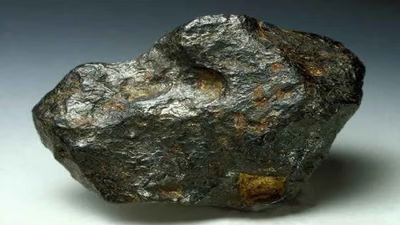 Մերձավոր Արևելքը հաստատվել է որպես հազվագյուտ ապրանքների, քարերի և մետեորիտների առևտրի դինամիկ կենտրոն՝ միացնելով Արևմտյան Ասիան գլոբալ շուկաներին: Մետեորիտները հատկապես ձեռք են բերում traction որպես նիշ բայց արժեքավոր ակտիվ՝ աճող հետաքրքրությամբ հավաքիչների և գիտական համայնքների շրջանում: Մերձավոր Արևելքի մետեորիտի շուկան օգտվում է իր ռազմավարական դիրքից՝ facilitating այս երկնային օբյեկտների ներմուծումն ու արտահանումը ամբողջ Ասիայում: Հարթակները, որոնք ապահովում են վաճառողների և գնորդների վավերացումը, նպաստել են այս մասնագիտացված շուկայի հավատարմությանը և աճին: Քարերը՝ քրիզոկոլան, տուֆը և լապիս լազուլին նույնպես կարևոր դեր են խաղում տարածաշրջանի առևտրային էկոհամակարգում: Քրիզոկոլան իր յուրահատուկ գույներով increasingly հայտնի է դարձել Մերձավոր Արևելքում՝ առաջացնելով պահանջ B2B շուկաներում և խթանելով կապերը հաստատված արտահանողների ու ներմուծողների միջև: Նմանապես տարածաշրջանի տուֆի առևտուրը thrives՝ առաջարկելով մրցունակ գներ և ամուր մատակարարման լուծումներ: Մերձավոր Արևելքի հարթակները կարևոր դեր են խաղում այս քարերը գլոբալ շուկաներին կապելու գործում՝ ներառյալ էմերալդները, ռուբինները և մարգարիտները՝ որոնք հիմնական ապրանքներ են զարդեղենի արդյունաբերությունում: Բալթյան նյութը՝ հայտնի որպես "Ծովի ոսկի," և ֆոսիլներն էլ կազմում են ավելի լայն ապրանքային առևտրի մասը Արևմտյան Ասիայում: Այս նյութերի աճող պահանջարկով Մերձավոր Արևելքի առևտրային հարթակները տրամադրում են տեղեկություններ գների մասին, շուկայական միտումների ու արտահանման հնարավորությունների վերաբերյալ: Տարածաշրջանի փորձը մատակարարման цепь կառավարման մեջ ապահովում է անխափան առևտրային հոսքեր նույնիսկ հազվագյուտ նյութերի համար ինչպիսիք են չարոիթն ու սպինելը: Aritral-ը՝ AI-ով ղեկավարվող B2B հարթակ commodities-ի ու خام նյութերի համար պարզեցնում է միջազգային առևտուրը՝ առաջարկելով հաստատված արտադրանքի ցուցակներ, գլոբալ վաճառքի աջակցություն ու AI-ով ղեկավարվող մարկետինգ: Նրա գործիքները կարող են ուժեղացնել բիզնեսներին արդյունավետ մասնակցելու համար քարերի ու մետեորիտների շուկաներում՝ խթանելով թափանցիկությունը ու աճը.
Մերձավոր Արևելքը հաստատվել է որպես հազվագյուտ ապրանքների, քարերի և մետեորիտների առևտրի դինամիկ կենտրոն՝ միացնելով Արևմտյան Ասիան գլոբալ շուկաներին: Մետեորիտները հատկապես ձեռք են բերում traction որպես նիշ բայց արժեքավոր ակտիվ՝ աճող հետաքրքրությամբ հավաքիչների և գիտական համայնքների շրջանում: Մերձավոր Արևելքի մետեորիտի շուկան օգտվում է իր ռազմավարական դիրքից՝ facilitating այս երկնային օբյեկտների ներմուծումն ու արտահանումը ամբողջ Ասիայում: Հարթակները, որոնք ապահովում են վաճառողների և գնորդների վավերացումը, նպաստել են այս մասնագիտացված շուկայի հավատարմությանը և աճին: Քարերը՝ քրիզոկոլան, տուֆը և լապիս լազուլին նույնպես կարևոր դեր են խաղում տարածաշրջանի առևտրային էկոհամակարգում: Քրիզոկոլան իր յուրահատուկ գույներով increasingly հայտնի է դարձել Մերձավոր Արևելքում՝ առաջացնելով պահանջ B2B շուկաներում և խթանելով կապերը հաստատված արտահանողների ու ներմուծողների միջև: Նմանապես տարածաշրջանի տուֆի առևտուրը thrives՝ առաջարկելով մրցունակ գներ և ամուր մատակարարման լուծումներ: Մերձավոր Արևելքի հարթակները կարևոր դեր են խաղում այս քարերը գլոբալ շուկաներին կապելու գործում՝ ներառյալ էմերալդները, ռուբինները և մարգարիտները՝ որոնք հիմնական ապրանքներ են զարդեղենի արդյունաբերությունում: Բալթյան նյութը՝ հայտնի որպես "Ծովի ոսկի," և ֆոսիլներն էլ կազմում են ավելի լայն ապրանքային առևտրի մասը Արևմտյան Ասիայում: Այս նյութերի աճող պահանջարկով Մերձավոր Արևելքի առևտրային հարթակները տրամադրում են տեղեկություններ գների մասին, շուկայական միտումների ու արտահանման հնարավորությունների վերաբերյալ: Տարածաշրջանի փորձը մատակարարման цепь կառավարման մեջ ապահովում է անխափան առևտրային հոսքեր նույնիսկ հազվագյուտ նյութերի համար ինչպիսիք են չարոիթն ու սպինելը: Aritral-ը՝ AI-ով ղեկավարվող B2B հարթակ commodities-ի ու خام նյութերի համար պարզեցնում է միջազգային առևտուրը՝ առաջարկելով հաստատված արտադրանքի ցուցակներ, գլոբալ վաճառքի աջակցություն ու AI-ով ղեկավարվող մարկետինգ: Նրա գործիքները կարող են ուժեղացնել բիզնեսներին արդյունավետ մասնակցելու համար քարերի ու մետեորիտների շուկաներում՝ խթանելով թափանցիկությունը ու աճը.
-
Չարոիտի դերը Մերձավոր Արևելքի քարերի առևտուրում
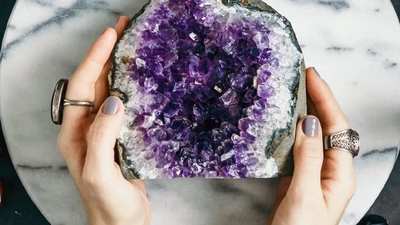 Չարոիտը, հազվագյուտ և աչքառու մանուշակագույն քար է, արագորեն տարածվում է Մերձավոր Արևելքի և Արևմտյան Ասիայի շուկաներում՝ որպես արժեքավոր ապրանք հաջողության, հարստության և մետաֆիզիկական օգուտների համար: Տեղանքի դինամիկ B2B առևտրային հարթակները հնարավորություն են տվել անխափան կապեր հաստատելու վավերացված արտահանողների և ներմուծողների միջև՝ խթանելով քարերի արդյունաբերության աճը: Մերձավոր Արևելքը՝ որպես գլոբալ քարերի առևտրի կենտրոն, facilitates the buying and selling of Charoite through advanced supply chain solutions and regional product listings. These platforms provide market insights, allowing businesses to navigate pricing trends and expand their networks effectively. Չարոիտը հատկապես պահանջված է Արևմտյան Ասիայում, որտեղ դրա յուրահատուկ Esthetic and metaphysical properties—linked to luck, wealth, and harmony—make it a preferred choice for jewelry and spiritual purposes. Վավերացված արտահանողները տարածաշրջանում ապահովում են իսկությունը՝ աջակցելով քարերի բարձրակարգ շուկայական դիրքին: Ներմուծողները օգտվում են Մերձավոր Արևելքի առևտրային գովազդային հարթակներից՝ բարձրորակ Չարոիտ ձեռք բերելու համար՝ նպաստելով նրա աճող պահանջարկին: Մերձավոր Արեւելքի քարերի շուկան նաեւ զարգանում է այլ արժեքավոր քարի հետ համատեղելիությամբ՝ ինչպես Քրիզոկոլա, Թյուրքիզ, Ռուբին եւ Թանզանիտ: Այս քարըերը հայտնի են իրենց տարբեր գույներով եւ մշակութային նշանակությամբ եւ լրացնում են Չարոիտը առեւտրային դինամիկայում: Երբ տարածաշրջանային հարթակները զարգանում են AI-ով ղեկավարվող մարկետինգի գործիքներով՝ արտահանողները եւ ներմուծողները ավելի հեշտությամբ կարողանում են ընդլայնել իրենց գործունեությունը՝ բազմազանացնելով իրենց պորտֆելը եւ բարելավելով թափանցիկությունը առեւտրում: Օրինակ՝ Aritral-ը ուժեղացնում է բիզնեսները միջազգային գործառնությունները պարզեցնելով եւ սահմանների միջեւ ուղղակի հաղորդակցություն Facilitating direct communication across borders. In conclusion, Charoite's growing prominence in the Middle East and West Asia underscores the significance of regional trade platforms in connecting global markets. This gemstone's role in fostering wealth and luck not only bolsters its demand but also cements its place as a cornerstone in the thriving gemstone industry of the region.
Չարոիտը, հազվագյուտ և աչքառու մանուշակագույն քար է, արագորեն տարածվում է Մերձավոր Արևելքի և Արևմտյան Ասիայի շուկաներում՝ որպես արժեքավոր ապրանք հաջողության, հարստության և մետաֆիզիկական օգուտների համար: Տեղանքի դինամիկ B2B առևտրային հարթակները հնարավորություն են տվել անխափան կապեր հաստատելու վավերացված արտահանողների և ներմուծողների միջև՝ խթանելով քարերի արդյունաբերության աճը: Մերձավոր Արևելքը՝ որպես գլոբալ քարերի առևտրի կենտրոն, facilitates the buying and selling of Charoite through advanced supply chain solutions and regional product listings. These platforms provide market insights, allowing businesses to navigate pricing trends and expand their networks effectively. Չարոիտը հատկապես պահանջված է Արևմտյան Ասիայում, որտեղ դրա յուրահատուկ Esthetic and metaphysical properties—linked to luck, wealth, and harmony—make it a preferred choice for jewelry and spiritual purposes. Վավերացված արտահանողները տարածաշրջանում ապահովում են իսկությունը՝ աջակցելով քարերի բարձրակարգ շուկայական դիրքին: Ներմուծողները օգտվում են Մերձավոր Արևելքի առևտրային գովազդային հարթակներից՝ բարձրորակ Չարոիտ ձեռք բերելու համար՝ նպաստելով նրա աճող պահանջարկին: Մերձավոր Արեւելքի քարերի շուկան նաեւ զարգանում է այլ արժեքավոր քարի հետ համատեղելիությամբ՝ ինչպես Քրիզոկոլա, Թյուրքիզ, Ռուբին եւ Թանզանիտ: Այս քարըերը հայտնի են իրենց տարբեր գույներով եւ մշակութային նշանակությամբ եւ լրացնում են Չարոիտը առեւտրային դինամիկայում: Երբ տարածաշրջանային հարթակները զարգանում են AI-ով ղեկավարվող մարկետինգի գործիքներով՝ արտահանողները եւ ներմուծողները ավելի հեշտությամբ կարողանում են ընդլայնել իրենց գործունեությունը՝ բազմազանացնելով իրենց պորտֆելը եւ բարելավելով թափանցիկությունը առեւտրում: Օրինակ՝ Aritral-ը ուժեղացնում է բիզնեսները միջազգային գործառնությունները պարզեցնելով եւ սահմանների միջեւ ուղղակի հաղորդակցություն Facilitating direct communication across borders. In conclusion, Charoite's growing prominence in the Middle East and West Asia underscores the significance of regional trade platforms in connecting global markets. This gemstone's role in fostering wealth and luck not only bolsters its demand but also cements its place as a cornerstone in the thriving gemstone industry of the region.
-
Ռուբի և քարերի առևտուրը Մերձավոր Արևելքում. Տեղեկություններ և դինամիկա
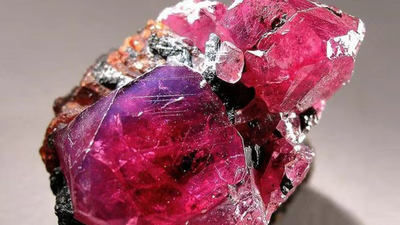 Քարերի առևտուրը Արեւմտյան Ասիայում և Մերձավոր Արևելքում երկար ժամանակ եղել է տարածաշրջանային առևտրի հիմքը՝ միացնելով շուկաները ամբողջ Аսիայի միջոցով դինամիկ B2B էկոհամակարգով: Ռուբին իր խորը կարմիր երանգներով և բացառիկ փայլով հատուկ տեղ ունի այս շուկայում: Իր գեղեցկությամբ և բազմակողմանիությամբ հայտնի ռուբին քարերը սիրելի են զարդեղենի արդյունաբերությունում՝ զգալիորեն նպաստելով Ասիական Ռուբի Քրիստալային Շուկայում և Բնական Ռուբի Քարի արժեքին Մերձավոր Արևելքում: Ռուբինների գները ազդում են դրանց ծագման, պարզության և չափերի վրա՝ բրմայական ռուբինները հաճախ պահանջելով ամենաբարձր գները: Հաստատված արտահանողները և ներմուծողները հեշտացնում են ռուբինների և այլ քարերի համար անխափան մատակարարման շղթա՝ ապահովելով որակն ու իսկությունը առևտրում: Ռուբուց բացի՝ այլ արժեքավոր քարեր՝ ինչպես լապիս լազուլին, էմերալդը, սպինըլը, տուրգուզը և մարգարիտը գերակշռում են առևտրային տեսարաններում: Օրինակ՝ լապիս լազուլին շատ պահանջված է իր կապույտ երանգների ու պատմական նշանակության համար՝ առևտրի զարգանալով Մերձավոր արևելյան ու Արեւմտյան ասիական շուկաներում: Էմերալդը հաճախ համարվում է միայն ադամանդներից հետո երկրորդը արժեքով՝ բարձրացնելով տնտեսական ակտիվությունը տարածաշրջանում իր հիանալի գրավչության ու զարդեղենի նախագծման աճող պահանջարկի շնորհիվ: Սպինըլը իր լայն գունային տեսականիով ու տուրգուզը՝ իրենց հնագույն մշակութային խորհրդանիշներով նույնպես կարևոր դեր են խաղում տարածաշրջանային առևտրում: Մերձավոր արևելքը ծառայում է որպես կենտրոն քարի ներմուծման ու արտահանման համար՝ օգտագործելով Aritral պլատֆորմները` առաջարկելով շուկայական տեղեկություններ, հաստատված բիզնես ցանցավորում եւ առեւտրային գովազդային լուծումներ: Այս ամուր ենթակառուցվածքը աջակցում է ոչ միայն քարերին այլ նաև ապրանքներին ինչպես բալթյա քարեր, ժադեներ, չարոիտներ եւ տանզանիտներ որոնք ունեն կայուն պահանջարկ գլոբալ շուկաներում: Տարածաշրջանի արտադրանքի ցուցակների խթանումով եւ ուղղակի հաղորդակցության հեշտացմամբ` Մերձավոր արևելքը շարունակում է խթանել աճը քարի եւ ավելի լայն ապրանքների առևտրում` դարձնելով այն կարևոր օղակ Аսիայի մատակարարումների լուծումների մեջ:
Քարերի առևտուրը Արեւմտյան Ասիայում և Մերձավոր Արևելքում երկար ժամանակ եղել է տարածաշրջանային առևտրի հիմքը՝ միացնելով շուկաները ամբողջ Аսիայի միջոցով դինամիկ B2B էկոհամակարգով: Ռուբին իր խորը կարմիր երանգներով և բացառիկ փայլով հատուկ տեղ ունի այս շուկայում: Իր գեղեցկությամբ և բազմակողմանիությամբ հայտնի ռուբին քարերը սիրելի են զարդեղենի արդյունաբերությունում՝ զգալիորեն նպաստելով Ասիական Ռուբի Քրիստալային Շուկայում և Բնական Ռուբի Քարի արժեքին Մերձավոր Արևելքում: Ռուբինների գները ազդում են դրանց ծագման, պարզության և չափերի վրա՝ բրմայական ռուբինները հաճախ պահանջելով ամենաբարձր գները: Հաստատված արտահանողները և ներմուծողները հեշտացնում են ռուբինների և այլ քարերի համար անխափան մատակարարման շղթա՝ ապահովելով որակն ու իսկությունը առևտրում: Ռուբուց բացի՝ այլ արժեքավոր քարեր՝ ինչպես լապիս լազուլին, էմերալդը, սպինըլը, տուրգուզը և մարգարիտը գերակշռում են առևտրային տեսարաններում: Օրինակ՝ լապիս լազուլին շատ պահանջված է իր կապույտ երանգների ու պատմական նշանակության համար՝ առևտրի զարգանալով Մերձավոր արևելյան ու Արեւմտյան ասիական շուկաներում: Էմերալդը հաճախ համարվում է միայն ադամանդներից հետո երկրորդը արժեքով՝ բարձրացնելով տնտեսական ակտիվությունը տարածաշրջանում իր հիանալի գրավչության ու զարդեղենի նախագծման աճող պահանջարկի շնորհիվ: Սպինըլը իր լայն գունային տեսականիով ու տուրգուզը՝ իրենց հնագույն մշակութային խորհրդանիշներով նույնպես կարևոր դեր են խաղում տարածաշրջանային առևտրում: Մերձավոր արևելքը ծառայում է որպես կենտրոն քարի ներմուծման ու արտահանման համար՝ օգտագործելով Aritral պլատֆորմները` առաջարկելով շուկայական տեղեկություններ, հաստատված բիզնես ցանցավորում եւ առեւտրային գովազդային լուծումներ: Այս ամուր ենթակառուցվածքը աջակցում է ոչ միայն քարերին այլ նաև ապրանքներին ինչպես բալթյա քարեր, ժադեներ, չարոիտներ եւ տանզանիտներ որոնք ունեն կայուն պահանջարկ գլոբալ շուկաներում: Տարածաշրջանի արտադրանքի ցուցակների խթանումով եւ ուղղակի հաղորդակցության հեշտացմամբ` Մերձավոր արևելքը շարունակում է խթանել աճը քարի եւ ավելի լայն ապրանքների առևտրում` դարձնելով այն կարևոր օղակ Аսիայի մատակարարումների լուծումների մեջ:
-
Սպինելի շուկայի տեղեկությունները Մերձավոր Արևելքում
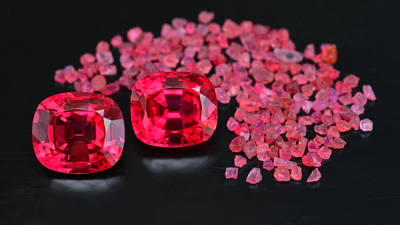 Սպինելը բազմակողմանի և արժեքավոր քար է, որը կարևոր տեղ ունի Արևմտյան Ասիայում և Մերձավոր Արևելքի առևտրային շուկաներում: Այն հայտնի է իր պայծառ երանգներով՝ խորը կարմրից մինչև կոբալտ կապույտ, պատմականորեն սխալմամբ համարվում է ռուբի, ինչը ավելացնում է դրա հետաքրքրությունը համաշխարհային քարերի առևտրում: Մերձավոր Արեւելքը՝ որպես առևտրային կենտրոն, նպաստում է Սպինելի ներմուծման և արտահանման գործընթացներին B2B հարթակների միջոցով, հաստատված արտահանողների և թափանցիկ մատակարարման լուծումների միջոցով: Aritral պլատֆորմը հնարավորություն է տալիս տարածաշրջանային ապրանքների ցուցակագրում և առաջարկում է շուկայական տեղեկություններ՝ ապահովելով արդյունավետություն և անվտանգություն գործարքներում: Սպինելի շուկան Մերձավոր Արեւելքում զարգանում է՝ շնորհիվ իր աճող պահանջարկի լյուքս զարդեղենի մեջ և տարբեր մշակույթներում խորհրդանշական նշանակության: Սպինելի մրցակցային գները ռուբու և մարգարիտի համեմատ դարձնում են այն գրավիչ այլընտրանք գնորդների համար: Օրինակ՝ կարմիր Սպինելները հաճախ ստացվում են Միյանմարի և Շրի Լանկայի հանքերից ու բարձր գնահատվում են իրենց հարուստ գույներով ու դիմացկունությամբ: Ռուբիից Սպինելը տարբերակելու մեթոդները ներառում են առաջադեմ գեմոլոգիական գործիքներ, քանի որ Սպինը սովորաբար ցուցադրում է յուրահատուկ օպտիկական հատկություններ՝ մեկ ճառագայթման ինդեքսով: Արևմտյան Азияն էլ զգալիորեն նպաստում է Սպинելի առևտրային դինամիկային՝ օգտագործելով իր մոտեցումը հիմնական հանքերին ու ռազմավարական դիրքը գլոբալ առևտրային ուղիներում: Սպинելի գների ռազմավարությունները տարբերվում են ծագման, պարզության ու չափի հիման վրա: Արհեստական Սպաները հայտնաբերվում են ֆլուորեսցենտությամբ, ներառումների ու ճառագայթման փորձարկմամբ: Այլ քարերի պահանջարկը՝ ինչպես թյուրքիզը, մարգարիտը, ռուբի ու լապիս լազուլիան լրացնում են Սպանեի շուկայի աճը՝ աջակցելով Մերձավոր Արեւելքի փորձությանը քարերի առևտրային ցանցերում: Aritral-ը՝ AI-ով ղեկավարվող B2B պլատֆորմը պարզեցնում է Սպանեի գործարքները՝ առաջարկելով ուղղակի հաղորդակցության գործիքներ, AI-ով ղեկավարվող մարկետինգ ու գլոբալ վաճառքի աջակցություն: Այս ծառայությունները բարձրացնում են թափանցիկությունը ու վստահություն ստեղծում միջազգային գնորդների ու վաճառողների միջև՝ ամրապնդելով Մերձավոր Արեւելքի դիրքը որպես հիմնասյուն քարերի առևտրի արդյունաբերությունում.
Սպինելը բազմակողմանի և արժեքավոր քար է, որը կարևոր տեղ ունի Արևմտյան Ասիայում և Մերձավոր Արևելքի առևտրային շուկաներում: Այն հայտնի է իր պայծառ երանգներով՝ խորը կարմրից մինչև կոբալտ կապույտ, պատմականորեն սխալմամբ համարվում է ռուբի, ինչը ավելացնում է դրա հետաքրքրությունը համաշխարհային քարերի առևտրում: Մերձավոր Արեւելքը՝ որպես առևտրային կենտրոն, նպաստում է Սպինելի ներմուծման և արտահանման գործընթացներին B2B հարթակների միջոցով, հաստատված արտահանողների և թափանցիկ մատակարարման լուծումների միջոցով: Aritral պլատֆորմը հնարավորություն է տալիս տարածաշրջանային ապրանքների ցուցակագրում և առաջարկում է շուկայական տեղեկություններ՝ ապահովելով արդյունավետություն և անվտանգություն գործարքներում: Սպինելի շուկան Մերձավոր Արեւելքում զարգանում է՝ շնորհիվ իր աճող պահանջարկի լյուքս զարդեղենի մեջ և տարբեր մշակույթներում խորհրդանշական նշանակության: Սպինելի մրցակցային գները ռուբու և մարգարիտի համեմատ դարձնում են այն գրավիչ այլընտրանք գնորդների համար: Օրինակ՝ կարմիր Սպինելները հաճախ ստացվում են Միյանմարի և Շրի Լանկայի հանքերից ու բարձր գնահատվում են իրենց հարուստ գույներով ու դիմացկունությամբ: Ռուբիից Սպինելը տարբերակելու մեթոդները ներառում են առաջադեմ գեմոլոգիական գործիքներ, քանի որ Սպինը սովորաբար ցուցադրում է յուրահատուկ օպտիկական հատկություններ՝ մեկ ճառագայթման ինդեքսով: Արևմտյան Азияն էլ զգալիորեն նպաստում է Սպинելի առևտրային դինամիկային՝ օգտագործելով իր մոտեցումը հիմնական հանքերին ու ռազմավարական դիրքը գլոբալ առևտրային ուղիներում: Սպинելի գների ռազմավարությունները տարբերվում են ծագման, պարզության ու չափի հիման վրա: Արհեստական Սպաները հայտնաբերվում են ֆլուորեսցենտությամբ, ներառումների ու ճառագայթման փորձարկմամբ: Այլ քարերի պահանջարկը՝ ինչպես թյուրքիզը, մարգարիտը, ռուբի ու լապիս լազուլիան լրացնում են Սպանեի շուկայի աճը՝ աջակցելով Մերձավոր Արեւելքի փորձությանը քարերի առևտրային ցանցերում: Aritral-ը՝ AI-ով ղեկավարվող B2B պլատֆորմը պարզեցնում է Սպանեի գործարքները՝ առաջարկելով ուղղակի հաղորդակցության գործիքներ, AI-ով ղեկավարվող մարկետինգ ու գլոբալ վաճառքի աջակցություն: Այս ծառայությունները բարձրացնում են թափանցիկությունը ու վստահություն ստեղծում միջազգային գնորդների ու վաճառողների միջև՝ ամրապնդելով Մերձավոր Արեւելքի դիրքը որպես հիմնասյուն քարերի առևտրի արդյունաբերությունում.
-
Տանզանիտի առևտուրը Արևմտյան Ասիայում: Դինամիկա և տեսություններ
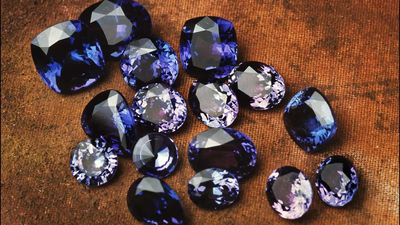 Տանզанիտը, հազվագյուտ և գրավիչ քար է, կարևորություն է ձեռք բերել Արևմտյան Ասիայի և Մերձավոր Արեւելքի ապրանքային առևտրում՝ հատկապես B2B հարթակների և տարածաշրջանի առևտրային կենտրոնների միջոցով: Այս քարը հայտնի է իր պայծառ երանգներով՝ մուգ կապույտից մինչև վիոլետ՝ հիմնականում ստացվում է Տանջանիայից՝ դարձնելով այն համաշխարհային շուկաների մեջ շատ պահանջված ապրանք: Մերձավոր Արեւելքը կարևոր դեր է խաղում Տանզանիտի վաճառողների կապակցման գործում՝ գնորդների հետ ամբողջ Аսիայում՝ օգտագործելով հաստատված արտահանողներ, մատակարարման ցանցի լուծումներ և շուկայական տեսություններ՝ անխափանել գործարքների համար: Տанզанիտի քարերի գնում-վաճառքի շուկա Аրևմտյան Аսիայում զարգանում է իր բացառիկության և Esthetic գրավչության շնորհիվ՝ գրավելով զգալի հետաքրքրություն զարդեղենի ոլորտից: Նրա արժեքը տատանում է գույնի, պարզության և կարատի քաշի հիմքով՝ Аրևմտյան Аսիայի վաճառողները առաջարկում են մրցունակ գներ թափանցիկ շուկաների միջոցով: Մերձավոր Արեւելքի առևտրային հարթակները լրացուցիչ բարելավում են այս գործընթացը՝ տրամադրելով տարածաշրջանի արտադրանքի ցուցակներ և խթանել բիզնես կապերի հնարավորությունները: Տанզанիտից բացի այլ քարեր՝ Քրիզոկոլա, Թյուրքիզ, Ռուբին և Էմերալդ նույնպես կազմում են Մերձավոր Արեւելքի քարերի առևտրի կարևոր մասը: Այս հարթակները ինտեգրում են հաստատված արտահանողներին ու ներմուծողներին՝ ապահովելու իսկությունը և որակը՝ բարձր արժեք ունեցող ապրանքների համար ինչպես Тансанիտը այնպես էլ Դիանամը: ՀRegion-ի դերը որպես առևտրային գովազդային կենտրոն խթանում է շուկայական արդյունավետությունը և կապակցությունը՝ օգնելով վաճառողներին ու գնորդներին: Aritral-ը, AI-ով ղեկավարվող B2B Marketplace-ն աջակցում է այս համակարգին` առաջարկելով ծառայություններ ինչպիսիք են արտադրանքի ցուցակում ընդգրկումը, ուղղակի հաղորդակցություն եւ AI-ով ղեկավարվող մարկետինգ` հնարավորություն տալով հեշտ միջազգային առևտուր կատարել քարերով եւ այլ ապրանքներով: Իրական ժամանակում շուկայական տեսությունների հասանելիություն տրամադրելով Aritral-ը ուժեղացնում է վաճառողների որոշումների կայացման կարողությունները` խթանել Тансанիտ-ի եւ այլ քարերի աճը Մերձավոր Արեւելքում եւ Аրևմտյան Аսիայում:
Տանզанիտը, հազվագյուտ և գրավիչ քար է, կարևորություն է ձեռք բերել Արևմտյան Ասիայի և Մերձավոր Արեւելքի ապրանքային առևտրում՝ հատկապես B2B հարթակների և տարածաշրջանի առևտրային կենտրոնների միջոցով: Այս քարը հայտնի է իր պայծառ երանգներով՝ մուգ կապույտից մինչև վիոլետ՝ հիմնականում ստացվում է Տանջանիայից՝ դարձնելով այն համաշխարհային շուկաների մեջ շատ պահանջված ապրանք: Մերձավոր Արեւելքը կարևոր դեր է խաղում Տանզանիտի վաճառողների կապակցման գործում՝ գնորդների հետ ամբողջ Аսիայում՝ օգտագործելով հաստատված արտահանողներ, մատակարարման ցանցի լուծումներ և շուկայական տեսություններ՝ անխափանել գործարքների համար: Տанզанիտի քարերի գնում-վաճառքի շուկա Аրևմտյան Аսիայում զարգանում է իր բացառիկության և Esthetic գրավչության շնորհիվ՝ գրավելով զգալի հետաքրքրություն զարդեղենի ոլորտից: Նրա արժեքը տատանում է գույնի, պարզության և կարատի քաշի հիմքով՝ Аրևմտյան Аսիայի վաճառողները առաջարկում են մրցունակ գներ թափանցիկ շուկաների միջոցով: Մերձավոր Արեւելքի առևտրային հարթակները լրացուցիչ բարելավում են այս գործընթացը՝ տրամադրելով տարածաշրջանի արտադրանքի ցուցակներ և խթանել բիզնես կապերի հնարավորությունները: Տанզанիտից բացի այլ քարեր՝ Քրիզոկոլա, Թյուրքիզ, Ռուբին և Էմերալդ նույնպես կազմում են Մերձավոր Արեւելքի քարերի առևտրի կարևոր մասը: Այս հարթակները ինտեգրում են հաստատված արտահանողներին ու ներմուծողներին՝ ապահովելու իսկությունը և որակը՝ բարձր արժեք ունեցող ապրանքների համար ինչպես Тансанիտը այնպես էլ Դիանամը: ՀRegion-ի դերը որպես առևտրային գովազդային կենտրոն խթանում է շուկայական արդյունավետությունը և կապակցությունը՝ օգնելով վաճառողներին ու գնորդներին: Aritral-ը, AI-ով ղեկավարվող B2B Marketplace-ն աջակցում է այս համակարգին` առաջարկելով ծառայություններ ինչպիսիք են արտադրանքի ցուցակում ընդգրկումը, ուղղակի հաղորդակցություն եւ AI-ով ղեկավարվող մարկետինգ` հնարավորություն տալով հեշտ միջազգային առևտուր կատարել քարերով եւ այլ ապրանքներով: Իրական ժամանակում շուկայական տեսությունների հասանելիություն տրամադրելով Aritral-ը ուժեղացնում է վաճառողների որոշումների կայացման կարողությունները` խթանել Тансанիտ-ի եւ այլ քարերի աճը Մերձավոր Արեւելքում եւ Аրևմտյան Аսիայում:
-
Արևմտյան Ասիայի քարերի առևտուրը. Տոպազ և ավելին
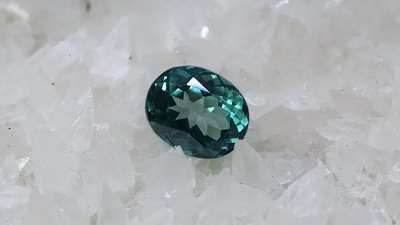 Քարերի առևտուրը Մերձավոր Արևելքում և Արևմտյան Ասիայում գտնվում է ակտիվ փոփոխության փուլում՝ շնորհիվ ուժեղ հարթակների, որոնք կապում են վավերացված արտահանողներին ու ներմուծողներին: Տոպազը՝ իր պայծառ ու բազմազան գույներով հայտնի, այս շուկայում կարևոր դեր ունի: Համաշխարհային մասշտաբով տարածված պաշարներով՝ ասիական տոպազի շուկան հատկապես նշանակալի է՝ աջակցելով արևմտյան ասիայի ռազմավարական դերին ներմուծման-արտահանման գործողություններում: Այս տարածաշրջանը ապահովում է արդյունավետ մատակարարումների շղթայի լուծումներ և թափանցիկ բիզնես ցանցավորում՝ ապահովելով տոպազի և այլ քարերի՝ ռուբինի, էմերալդի և լապիս լազուլի անխափան տեղափոխումը: Մերձավոր արևելքի առևտրային հարթակները կարևոր են քրիզոկոլա, թյուրքիզ, մարգարիտ և բալթիկ քարերի աճը խթանելու համար: Քրիզոկոլան՝ իր յուրահատուկ գույներով գնահատված՝ գտնում է իր տեղը վավերացված արտահանողների կապակցությամբ: Թյուրքիզը պատմական նշանակություն ունի տարածաշրջանում՝ արևմտյան ասիան դարձնելով առևտրի և մշակման կենտրոն: Մարգարիտները հաճախ անվանում են ծովի գանձեր ու պահպանում են իրենց գրավչությունը զարդեղենի արդյունաբերությունում՝ աջակցված զարգացած մատակարարումների մեխանիզմներով: Բալթիկ քարը՝ հաճախ անվանվում է «Ծովի ոսկի», կարևոր դեր ունի արևմտյան ասիայի քարերի շուկայում: Միաժամանակ ադամանդները, էմերալդները և սպինելը բարձր արժեք ունեցող գործարքներ են իրականացնում՝ օգտագործելով մերձավոր արևելքի շուկայական տեղեկություններն ու գովազդային հարթակները: Այգատն ու լապիս լազուլին իրենց առանձնահատուկ տեսքով ու օգտագործմամբ լրացնում են քարերի առևտուրը: Բացի այդ, նիշային շուկաները՝ չարոիտը, մետեորիտները, ֆոսիլները և տանձանիքը սպասարկում են մասնագիտացված գնորդներին ու վաճառողներին: Aritral-ը՝ AI-ով ղեկավարվող B2B հարթակը պարզեցնում է այս գործարքները` առաջարկելով ապրանքների ցուցակներ, ուղիղ հաղորդակցություն և AI-ով կառավարվող մարկետինգ: Շուկայի թափանցիկությունն ու արդյունավետությունը բարձրացնելով` այն ապահովում է որ Մերձավոր Արեւելքը շարունակի մնալ գլոբալ քարերի առեւտրի հիմնասյուն:
Քարերի առևտուրը Մերձավոր Արևելքում և Արևմտյան Ասիայում գտնվում է ակտիվ փոփոխության փուլում՝ շնորհիվ ուժեղ հարթակների, որոնք կապում են վավերացված արտահանողներին ու ներմուծողներին: Տոպազը՝ իր պայծառ ու բազմազան գույներով հայտնի, այս շուկայում կարևոր դեր ունի: Համաշխարհային մասշտաբով տարածված պաշարներով՝ ասիական տոպազի շուկան հատկապես նշանակալի է՝ աջակցելով արևմտյան ասիայի ռազմավարական դերին ներմուծման-արտահանման գործողություններում: Այս տարածաշրջանը ապահովում է արդյունավետ մատակարարումների շղթայի լուծումներ և թափանցիկ բիզնես ցանցավորում՝ ապահովելով տոպազի և այլ քարերի՝ ռուբինի, էմերալդի և լապիս լազուլի անխափան տեղափոխումը: Մերձավոր արևելքի առևտրային հարթակները կարևոր են քրիզոկոլա, թյուրքիզ, մարգարիտ և բալթիկ քարերի աճը խթանելու համար: Քրիզոկոլան՝ իր յուրահատուկ գույներով գնահատված՝ գտնում է իր տեղը վավերացված արտահանողների կապակցությամբ: Թյուրքիզը պատմական նշանակություն ունի տարածաշրջանում՝ արևմտյան ասիան դարձնելով առևտրի և մշակման կենտրոն: Մարգարիտները հաճախ անվանում են ծովի գանձեր ու պահպանում են իրենց գրավչությունը զարդեղենի արդյունաբերությունում՝ աջակցված զարգացած մատակարարումների մեխանիզմներով: Բալթիկ քարը՝ հաճախ անվանվում է «Ծովի ոսկի», կարևոր դեր ունի արևմտյան ասիայի քարերի շուկայում: Միաժամանակ ադամանդները, էմերալդները և սպինելը բարձր արժեք ունեցող գործարքներ են իրականացնում՝ օգտագործելով մերձավոր արևելքի շուկայական տեղեկություններն ու գովազդային հարթակները: Այգատն ու լապիս լազուլին իրենց առանձնահատուկ տեսքով ու օգտագործմամբ լրացնում են քարերի առևտուրը: Բացի այդ, նիշային շուկաները՝ չարոիտը, մետեորիտները, ֆոսիլները և տանձանիքը սպասարկում են մասնագիտացված գնորդներին ու վաճառողներին: Aritral-ը՝ AI-ով ղեկավարվող B2B հարթակը պարզեցնում է այս գործարքները` առաջարկելով ապրանքների ցուցակներ, ուղիղ հաղորդակցություն և AI-ով կառավարվող մարկետինգ: Շուկայի թափանցիկությունն ու արդյունավետությունը բարձրացնելով` այն ապահովում է որ Մերձավոր Արեւելքը շարունակի մնալ գլոբալ քարերի առեւտրի հիմնասյուն:
-
Քրիսոկոլա. Ակնեղեն Մերձավոր Արևելքի առևտրային դինամիկայում
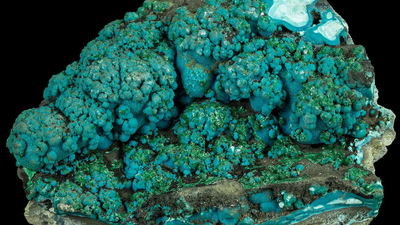 Քրիսոկոլան, իր վառ կանաչ և կապույտ երանգներով գրավիչ ակնեղեն է, որը դարձել է արժեքավոր ապրանք Մերձավոր Արևելքում և Արևմտյան Ասիայի ակնեղենի առևտրում: Թյուրքիզին նման լինելու համար հայտնի այս յուրահատուկ հանքանյութը մեծ պահանջարկ ունի հավաքածուների, զարդագործների և արդյունաբերական գնորդների շրջանում: Քրիսոկոլայի գրավչությունը նրա Esthetic հատկություններում և բազմակողմանիության մեջ է, ինչը այն դարձնում է ցանկալի նյութ զարդերի, քանդակների և զարդարանքի համար: Մերձավոր Արեւելքն ու Արեւմտյան Азия գլոբալ ակնեղենի առեւտրի կարեւոր կենտրոններ են՝ հաստատված արտահանողների եւ ներմուծողների միջեւ կապեր ստեղծելով B2B շուկաների միջոցով: Տարածաշրջանային հարթակները բարելավում են թափանցիկությունը եւ արդյունավետությունը ապրանքների առեւտրում՝ առաջարկելով մատակարարման շղթայի լուծումներ եւ ճշգրիտ շուկայական տեղեկություններ: Քրիսոկոլան այս էկոհամակարգում իր տեղը գտնելով՝ օգտվում է այն հաստատված ցանցերից, որոնք օգտագործվում են թյուրքիզի, ռուբինի, էմերալդի եւ լապիսի առևտրում: Առևտրային գովազդային հարթակների դերը Քրիսոկոլայի յուրահատուկ հատկանիշները ցուցադրելու գործում լրացուցիչ բարձրացրել է նրա տեսանելիությունն ու վաճառքը: Քրիսոկոլայի նմանությունը թյուրքիզին ավելացնում է հետաքրքրություն նրա շուկայական դինամիկայում: Այդպիսի շրջաններում՝ ինչպես Արեւմտյան Азия, որտեղ թյուրքիզը պատմական նշանակություն ունի, Քրիսոկոլան գրավել է գնորդներին՝ փնտրելով մատչելի սակայն ոչ պակաս տպավորիչ այլընտրանքներ: Այս դինամիկաները արտացոլվում են տարածաշրջանային արտադրանքի ցուցակում եւ շուկայական միտումներում՝ որտեղ Քրիսոկոլան ուշադրություն է գրավում այլ ակնեղենների՝ ինչպես ջեյդը, ռուբինը եւ բալթրը: Aritral-ը՝ միջազգային առևտուրը պարզեցնող AI-ով ղեկավարվող B2B հարթակը՝ նպաստում է այս փոփոխությանը՝ առաջարկելով ծառայություններ՝ գլոբալ վաճառքների աջակցություն, AI-ով ղեկավարվող մարկետինգ եւ հաստատված արտահանողների պրոֆիլներ: Նրա մատակարարման շղթայի լուծումները հատկապես արժեքավոր են նման ապրանքների համար ինչպես Քրիսոկոլան՝ ապահովելով անխափան գործարքներ մրցակցային Մերձավոր Արեւելքի ակնեղենի շուկայում: Երբ Քրիսոկոլան շարունակվում է փայլել ակնեղենի արդյունաբերությունում, նրա առևտուրը արտացոլում է ավելի լայն ինտեգրման գործընթացը Մերձավոր Արեւելքի շուկաների հետ գլոբալ մատակարարման շղթաների մեջ՝ ստեղծելով շահավետ հնարավորություններ բիզնեսի համար ամբողջ Asia-ում եւ այնBeyond:
Քրիսոկոլան, իր վառ կանաչ և կապույտ երանգներով գրավիչ ակնեղեն է, որը դարձել է արժեքավոր ապրանք Մերձավոր Արևելքում և Արևմտյան Ասիայի ակնեղենի առևտրում: Թյուրքիզին նման լինելու համար հայտնի այս յուրահատուկ հանքանյութը մեծ պահանջարկ ունի հավաքածուների, զարդագործների և արդյունաբերական գնորդների շրջանում: Քրիսոկոլայի գրավչությունը նրա Esthetic հատկություններում և բազմակողմանիության մեջ է, ինչը այն դարձնում է ցանկալի նյութ զարդերի, քանդակների և զարդարանքի համար: Մերձավոր Արեւելքն ու Արեւմտյան Азия գլոբալ ակնեղենի առեւտրի կարեւոր կենտրոններ են՝ հաստատված արտահանողների եւ ներմուծողների միջեւ կապեր ստեղծելով B2B շուկաների միջոցով: Տարածաշրջանային հարթակները բարելավում են թափանցիկությունը եւ արդյունավետությունը ապրանքների առեւտրում՝ առաջարկելով մատակարարման շղթայի լուծումներ եւ ճշգրիտ շուկայական տեղեկություններ: Քրիսոկոլան այս էկոհամակարգում իր տեղը գտնելով՝ օգտվում է այն հաստատված ցանցերից, որոնք օգտագործվում են թյուրքիզի, ռուբինի, էմերալդի եւ լապիսի առևտրում: Առևտրային գովազդային հարթակների դերը Քրիսոկոլայի յուրահատուկ հատկանիշները ցուցադրելու գործում լրացուցիչ բարձրացրել է նրա տեսանելիությունն ու վաճառքը: Քրիսոկոլայի նմանությունը թյուրքիզին ավելացնում է հետաքրքրություն նրա շուկայական դինամիկայում: Այդպիսի շրջաններում՝ ինչպես Արեւմտյան Азия, որտեղ թյուրքիզը պատմական նշանակություն ունի, Քրիսոկոլան գրավել է գնորդներին՝ փնտրելով մատչելի սակայն ոչ պակաս տպավորիչ այլընտրանքներ: Այս դինամիկաները արտացոլվում են տարածաշրջանային արտադրանքի ցուցակում եւ շուկայական միտումներում՝ որտեղ Քրիսոկոլան ուշադրություն է գրավում այլ ակնեղենների՝ ինչպես ջեյդը, ռուբինը եւ բալթրը: Aritral-ը՝ միջազգային առևտուրը պարզեցնող AI-ով ղեկավարվող B2B հարթակը՝ նպաստում է այս փոփոխությանը՝ առաջարկելով ծառայություններ՝ գլոբալ վաճառքների աջակցություն, AI-ով ղեկավարվող մարկետինգ եւ հաստատված արտահանողների պրոֆիլներ: Նրա մատակարարման շղթայի լուծումները հատկապես արժեքավոր են նման ապրանքների համար ինչպես Քրիսոկոլան՝ ապահովելով անխափան գործարքներ մրցակցային Մերձավոր Արեւելքի ակնեղենի շուկայում: Երբ Քրիսոկոլան շարունակվում է փայլել ակնեղենի արդյունաբերությունում, նրա առևտուրը արտացոլում է ավելի լայն ինտեգրման գործընթացը Մերձավոր Արեւելքի շուկաների հետ գլոբալ մատակարարման շղթաների մեջ՝ ստեղծելով շահավետ հնարավորություններ բիզնեսի համար ամբողջ Asia-ում եւ այնBeyond:
-
Անհատական քարերի և ֆոսիլների առևտուրը Մերձավոր Արևելքում և Արևմտյան Ասիայում
 Մերձավոր Արեւելքը և Արևմտյան Азияն առաջանում են որպես կարևոր տարածաշրջաններ գլոբալ անհատական քարերի և ֆոսիլների առևտրում՝ օգտագործելով առաջադեմ B2B հարթակներ՝ վավերացված արտահանողների և ներմուծողների կապը հաստատելու համար: Անհատական քարերից Քրիզոկոլան առանձնանում է իր պայծառ ու յուրահատուկ գույներով՝ հարուստացնելով զարդեղենի արդյունաբերությունը և ամրապնդելով իր կարևորությունը Մերձավոր Արեւելքի առևտրային կենտրոններում: Տարածաշրջանը նաև facilitates turquoise-ի , մարգարիտների , ռուբինների եւ դիանմոնդների առեւտուրը , որտեղ turquoise-ը խաղում է նշանակալի պատմական եւ տնտեսական դեր՝ շնորհիվ իր մշակութային նշանակության հին Մերձավոր Արեւելքի քաղաքակրթություններում: Վավերացված արտահանողները օգտագործում են տարածաշրջանային B2B շուկաները՝ վաճառելու նման անհատական քարեր ինչպես էմերալդները , տանզանիտները , լապիս լազուլիները եւ սպինելը: Էմերալդները հատկապես գնահատվում են ոչ միայն իրենց գեղեցկության համար , այլ նաև իրենց perceived կարողության համար՝ ֆինանսական բարեկեցությունը բարձրացնելու համար: Թանկարժեք քարերը ինչպես թոփազը , չարոիտը , ջեյդը եւ ագաթը նպաստում են繁荣ող անհատական քարերի շուկաների զարգացմանը ՝ աջակցված լինելով մատակարարումների շղթայի լուծումներով եւ շուկայական տեղեկություններով ՝ հատուկ նախատեսված Արեւմտյան Аսիայի համար: Ֆոսիլային քարի առևտուրը Մերձավոր Արեւելքում արագ զարգանում է ՝ կենտրոնանալով բազմազան ֆոսիլների վրա ՝ ներառյալ մետեորիտները եւ ամբերը , որոնք հաճախ անվանում են «Ծովի ոսկի»: Ֆոսիլները , որոնք հայտնաբերված են որոշակի տարածաշրջաններում Արեւմտյան Аսիայի մեջ , գնահատվում են ըստ հազվագյուտության , երկրաբանական ծագման եւ պատմական նշանակության: Հասարակ միջազգային գնորդներն ու վաճառողները կարող են օգտվել հարթակներից՝ թափանցիկ հաղորդակցություն հաստատելու համար , համապարփակ արտադրանքի ցուցակներ կազմելու եւ գնի ուղեցույց ստանալու համար ` ապահովելով անխափան գործարքներ: Aritral-ը ` AI-ով ղեկավարվող B2B հարթակը պարզեցնում է այս առևտրային գործընթացները ՝ առաջարկելով գործիքներ ինչպես ուղղակի հաղորդակցություն , գլոբալ վաճառքի աջակցություն , AI-ով ղեկավարվող մարկետինգ եւ արտահանողների պրոֆիլի կառավարում: Հարթակները նման Aritral-ի միջոցով հեշտացնում են կապերը ` հնարավորություն տալով բիզնեսներին ընդլայնելու իրենց հասանելիությունը Մերձավոր Արեւելքի եւ գլոբալ շուկաների մեջ ` commodities- ի նման անհատական քարերի եւ ֆոսիլների:
Մերձավոր Արեւելքը և Արևմտյան Азияն առաջանում են որպես կարևոր տարածաշրջաններ գլոբալ անհատական քարերի և ֆոսիլների առևտրում՝ օգտագործելով առաջադեմ B2B հարթակներ՝ վավերացված արտահանողների և ներմուծողների կապը հաստատելու համար: Անհատական քարերից Քրիզոկոլան առանձնանում է իր պայծառ ու յուրահատուկ գույներով՝ հարուստացնելով զարդեղենի արդյունաբերությունը և ամրապնդելով իր կարևորությունը Մերձավոր Արեւելքի առևտրային կենտրոններում: Տարածաշրջանը նաև facilitates turquoise-ի , մարգարիտների , ռուբինների եւ դիանմոնդների առեւտուրը , որտեղ turquoise-ը խաղում է նշանակալի պատմական եւ տնտեսական դեր՝ շնորհիվ իր մշակութային նշանակության հին Մերձավոր Արեւելքի քաղաքակրթություններում: Վավերացված արտահանողները օգտագործում են տարածաշրջանային B2B շուկաները՝ վաճառելու նման անհատական քարեր ինչպես էմերալդները , տանզանիտները , լապիս լազուլիները եւ սպինելը: Էմերալդները հատկապես գնահատվում են ոչ միայն իրենց գեղեցկության համար , այլ նաև իրենց perceived կարողության համար՝ ֆինանսական բարեկեցությունը բարձրացնելու համար: Թանկարժեք քարերը ինչպես թոփազը , չարոիտը , ջեյդը եւ ագաթը նպաստում են繁荣ող անհատական քարերի շուկաների զարգացմանը ՝ աջակցված լինելով մատակարարումների շղթայի լուծումներով եւ շուկայական տեղեկություններով ՝ հատուկ նախատեսված Արեւմտյան Аսիայի համար: Ֆոսիլային քարի առևտուրը Մերձավոր Արեւելքում արագ զարգանում է ՝ կենտրոնանալով բազմազան ֆոսիլների վրա ՝ ներառյալ մետեորիտները եւ ամբերը , որոնք հաճախ անվանում են «Ծովի ոսկի»: Ֆոսիլները , որոնք հայտնաբերված են որոշակի տարածաշրջաններում Արեւմտյան Аսիայի մեջ , գնահատվում են ըստ հազվագյուտության , երկրաբանական ծագման եւ պատմական նշանակության: Հասարակ միջազգային գնորդներն ու վաճառողները կարող են օգտվել հարթակներից՝ թափանցիկ հաղորդակցություն հաստատելու համար , համապարփակ արտադրանքի ցուցակներ կազմելու եւ գնի ուղեցույց ստանալու համար ` ապահովելով անխափան գործարքներ: Aritral-ը ` AI-ով ղեկավարվող B2B հարթակը պարզեցնում է այս առևտրային գործընթացները ՝ առաջարկելով գործիքներ ինչպես ուղղակի հաղորդակցություն , գլոբալ վաճառքի աջակցություն , AI-ով ղեկավարվող մարկետինգ եւ արտահանողների պրոֆիլի կառավարում: Հարթակները նման Aritral-ի միջոցով հեշտացնում են կապերը ` հնարավորություն տալով բիզնեսներին ընդլայնելու իրենց հասանելիությունը Մերձավոր Արեւելքի եւ գլոբալ շուկաների մեջ ` commodities- ի նման անհատական քարերի եւ ֆոսիլների:
























 Ագաթը, որպես կիսաարժեքավոր գեմստոն, հայտնի է իր պայծառ գույներով և յուրահատուկ նախշերով, կենտրոնական դիրք ունի Արևմտյան Ասիայի և Մերձավոր Արևելքի առևտրային դինամիկայում: Այս տարածաշրջանը, հատկապես Իրանի նման երկրները, ունի նշանակալի ագաթի պաշարներ՝ դարձնելով այն գլոբալ ագաթի, օպալի և օնիքսի արտահանման կենտրոն: Իր դիմացկունության և Esthetic գրավչության շնորհիվ ագաթը շատ պահանջված է զարդերի և դեկորատիվ արդյունաբերություններում ամբողջ աշխարհում: Ասիական ագաթի շուկան Witnessing աճում է՝ սնուցվում տեղական և միջազգային գնորդների աճող պահանջարկով: Մերձավոր Արևելքի առևտրային հարթակները կարևոր դեր են խաղում գլոբալ շուկաները հաստատված արտահանողների և ներմուծողների հետ կապելու գործում՝ առաջարկելով թափանցիկություն և արդյունավետություն: Այս հարթակները տրամադրում են անհրաժեշտ ծառայություններ՝ արտադրանքի ցուցակներ, շուկայական տեղեկություններ և առևտրային գովազդ՝ ապահովելով սահմաններից անդին անխափան գործարքներ: Ագաթի առևտուրը՝ կողքին այլ գեմստոնների նման՝ տուֆը, ռուբինը և լապիս լազուլին՝ դարձել է շատ շահավետ տարածաշրջանի հարուստ երկրաբանական ռեսուրսների և ռազմավարական դիրքի շնորհիվ: Իրանը հատկապես առանձնանում է իր լայնածավալ ագաթի պաշարներով՝ զգալիորեն նպաստելով գեմստոնների առևտրին Արևմտյան Аսյայում: Ագաթի և նմանատիպ գեմստոնների արտահանման հնարավորությունները ուժեղանում են տարածաշրջանային B2B շուկայական հարթակներով՝ խթանելով բիզնես ցանցավորման հնարավորությունները և մատակարարման շղթաների լուծումները: Հաստատված արտահանողները օգտագործում են այս հարթակները տարածաշրջանային արտադրանքի ցուցակները ներկայացնելու համար՝ բարձրացնելով վստահությունը և գլոբալ հասանելիությունը: Բացի այդ, քրիզոկոլա ու տուֆը ավելացնում են տարածաշրջանի գրավչությունը իրենց յուրահատուկ գույներով ու մշակութային նշանակությամբ: Մերձավոր Արեւելքը ապահովում է ամուր առեւտրային ցանցեր այս քարերի համար` կապելով ասիական եւ գլոբալ շուկաները: Քանի որ ագաթի նման գեմստոնների պահանջարկը շարունակաբար աճում է` Aritral-ի նման հարթակները առաջարկում են AI-ով ղեկավարվող լուծումներ միջազգային առեւտուրը հեշտացնելու համար` հնարավորություն տալով բիզնեսներին արդյունավետորեն օգտվել այս աճող շուկայից:
Ագաթը, որպես կիսաարժեքավոր գեմստոն, հայտնի է իր պայծառ գույներով և յուրահատուկ նախշերով, կենտրոնական դիրք ունի Արևմտյան Ասիայի և Մերձավոր Արևելքի առևտրային դինամիկայում: Այս տարածաշրջանը, հատկապես Իրանի նման երկրները, ունի նշանակալի ագաթի պաշարներ՝ դարձնելով այն գլոբալ ագաթի, օպալի և օնիքսի արտահանման կենտրոն: Իր դիմացկունության և Esthetic գրավչության շնորհիվ ագաթը շատ պահանջված է զարդերի և դեկորատիվ արդյունաբերություններում ամբողջ աշխարհում: Ասիական ագաթի շուկան Witnessing աճում է՝ սնուցվում տեղական և միջազգային գնորդների աճող պահանջարկով: Մերձավոր Արևելքի առևտրային հարթակները կարևոր դեր են խաղում գլոբալ շուկաները հաստատված արտահանողների և ներմուծողների հետ կապելու գործում՝ առաջարկելով թափանցիկություն և արդյունավետություն: Այս հարթակները տրամադրում են անհրաժեշտ ծառայություններ՝ արտադրանքի ցուցակներ, շուկայական տեղեկություններ և առևտրային գովազդ՝ ապահովելով սահմաններից անդին անխափան գործարքներ: Ագաթի առևտուրը՝ կողքին այլ գեմստոնների նման՝ տուֆը, ռուբինը և լապիս լազուլին՝ դարձել է շատ շահավետ տարածաշրջանի հարուստ երկրաբանական ռեսուրսների և ռազմավարական դիրքի շնորհիվ: Իրանը հատկապես առանձնանում է իր լայնածավալ ագաթի պաշարներով՝ զգալիորեն նպաստելով գեմստոնների առևտրին Արևմտյան Аսյայում: Ագաթի և նմանատիպ գեմստոնների արտահանման հնարավորությունները ուժեղանում են տարածաշրջանային B2B շուկայական հարթակներով՝ խթանելով բիզնես ցանցավորման հնարավորությունները և մատակարարման շղթաների լուծումները: Հաստատված արտահանողները օգտագործում են այս հարթակները տարածաշրջանային արտադրանքի ցուցակները ներկայացնելու համար՝ բարձրացնելով վստահությունը և գլոբալ հասանելիությունը: Բացի այդ, քրիզոկոլա ու տուֆը ավելացնում են տարածաշրջանի գրավչությունը իրենց յուրահատուկ գույներով ու մշակութային նշանակությամբ: Մերձավոր Արեւելքը ապահովում է ամուր առեւտրային ցանցեր այս քարերի համար` կապելով ասիական եւ գլոբալ շուկաները: Քանի որ ագաթի նման գեմստոնների պահանջարկը շարունակաբար աճում է` Aritral-ի նման հարթակները առաջարկում են AI-ով ղեկավարվող լուծումներ միջազգային առեւտուրը հեշտացնելու համար` հնարավորություն տալով բիզնեսներին արդյունավետորեն օգտվել այս աճող շուկայից:
 Ամբերը, որը հաճախ կոչվում է "Ծովի ոսկի," յուրահատուկ դիրք ունի Մերձավոր Արևելքի և Արևմտյան Ասիայի առևտրային շուկաներում: Նրա օրգանական ծագումն ու հարուստ երանգները՝ մեղրիից մինչև խորը նարնջագույն, այն դարձնում են արժեքավոր քար համաշխարհային զարդագործության արդյունաբերությունում: Մերձավոր Արևելքի առևտրային հարթակները, հատկապես B2B շուկաները, կարևոր դեր են խաղում հաստատված արտահանողների և ներմուծողների կապը ապահովելու համար ամբերի և այլ քարերի՝ ինչպես թյուրքիզը, քրիզոկոլլան ու ռուբինը: Արեւելյան ամբեր վաճառողները Հայաստանում օգտագործում են այս հարթակները՝ հեշտացնելով գործարքները և հասանելիություն ունենալով տարածաշրջանային ապրանքների ցուցակներին՝ ապահովելով թափանցիկություն և վստահություն: Ամբերի նշանակությունը գերազանցում է Esthetics-ը: Տարբեր մշակույթներում հավատում են նրա բուժիչ հատկություններին, ինչը ավելացնում է նրա շուկայական արժեքը: Մերձավոր Արեւելքը որպես ապրանքների առեւտրի կենտրոնական հանգույց տեսնում է ամբերի և դրա ածանցյալների պահանջարկի աճ: Տարածաշրջանային հարթակները տրամադրում են շուկայական տեղեկություններ՝ օգնելով ձեռնարկություններին արդյունավետորեն կողմնորոշվել գների միտումների և պահանջարկի տատանումների մեջ: Ամբերը չի հանդիսանում միայն այն քարը, որը հաջողությամբ զարգանում է այս դինամիկայի ներքո: Քրիզոկոլլան իր աչքի ընկնող կապույտ-կանաչ գույներով ձեռք է բերում ժողովրդականություն զարդագործության ոլորտում, մինչդեռ թյուրքիզն ու լապիս լազուլին շարունակում են նշվել իրենց հնագույն կապերով Մերձավոր արևելքի ժառանգության հետ: Էմերալդները կապված են բարեկեցության հետ, իսկ ադամանդները խորհրդանշում են prestij-ը. այս քարերը լայնորեն վաճառվում են West Asian մատակարարման ցանցերով: Սա ամրապնդվում է հաստատված B2B հարթակներով, որոնք բարձրացնում են թափանցիկությունը և հեշտացնում գլոբալ ցանցումը: Aritral-ը՝ AI-հենված B2B հարթակը աջակցում է այս համակարգին՝ առաջարկելով գործիքներ՝ AI-հենված մարկետինգի և գլոբալ վաճառքների աջակցությամբ: Այս հնարավորությունները հնարավորություն են տալիս վաճառողներին կառավարելու պրոֆիլները, գովազդելու ապրանքները և կապվելու հաստատված գնորդների ու վաճառողների հետ: Մերձավոր արևելքի ռազմավարական դիրքով ու ամուր առևտրային ցանցերով քարերը՝ ինչպես ամբերը պատրաստվում են շարունակական աճի համար՝ ամրապնդելով տարածաշրջանի կարգավիճակը որպես գլոբալ առևտրային կենտրոն:
Ամբերը, որը հաճախ կոչվում է "Ծովի ոսկի," յուրահատուկ դիրք ունի Մերձավոր Արևելքի և Արևմտյան Ասիայի առևտրային շուկաներում: Նրա օրգանական ծագումն ու հարուստ երանգները՝ մեղրիից մինչև խորը նարնջագույն, այն դարձնում են արժեքավոր քար համաշխարհային զարդագործության արդյունաբերությունում: Մերձավոր Արևելքի առևտրային հարթակները, հատկապես B2B շուկաները, կարևոր դեր են խաղում հաստատված արտահանողների և ներմուծողների կապը ապահովելու համար ամբերի և այլ քարերի՝ ինչպես թյուրքիզը, քրիզոկոլլան ու ռուբինը: Արեւելյան ամբեր վաճառողները Հայաստանում օգտագործում են այս հարթակները՝ հեշտացնելով գործարքները և հասանելիություն ունենալով տարածաշրջանային ապրանքների ցուցակներին՝ ապահովելով թափանցիկություն և վստահություն: Ամբերի նշանակությունը գերազանցում է Esthetics-ը: Տարբեր մշակույթներում հավատում են նրա բուժիչ հատկություններին, ինչը ավելացնում է նրա շուկայական արժեքը: Մերձավոր Արեւելքը որպես ապրանքների առեւտրի կենտրոնական հանգույց տեսնում է ամբերի և դրա ածանցյալների պահանջարկի աճ: Տարածաշրջանային հարթակները տրամադրում են շուկայական տեղեկություններ՝ օգնելով ձեռնարկություններին արդյունավետորեն կողմնորոշվել գների միտումների և պահանջարկի տատանումների մեջ: Ամբերը չի հանդիսանում միայն այն քարը, որը հաջողությամբ զարգանում է այս դինամիկայի ներքո: Քրիզոկոլլան իր աչքի ընկնող կապույտ-կանաչ գույներով ձեռք է բերում ժողովրդականություն զարդագործության ոլորտում, մինչդեռ թյուրքիզն ու լապիս լազուլին շարունակում են նշվել իրենց հնագույն կապերով Մերձավոր արևելքի ժառանգության հետ: Էմերալդները կապված են բարեկեցության հետ, իսկ ադամանդները խորհրդանշում են prestij-ը. այս քարերը լայնորեն վաճառվում են West Asian մատակարարման ցանցերով: Սա ամրապնդվում է հաստատված B2B հարթակներով, որոնք բարձրացնում են թափանցիկությունը և հեշտացնում գլոբալ ցանցումը: Aritral-ը՝ AI-հենված B2B հարթակը աջակցում է այս համակարգին՝ առաջարկելով գործիքներ՝ AI-հենված մարկետինգի և գլոբալ վաճառքների աջակցությամբ: Այս հնարավորությունները հնարավորություն են տալիս վաճառողներին կառավարելու պրոֆիլները, գովազդելու ապրանքները և կապվելու հաստատված գնորդների ու վաճառողների հետ: Մերձավոր արևելքի ռազմավարական դիրքով ու ամուր առևտրային ցանցերով քարերը՝ ինչպես ամբերը պատրաստվում են շարունակական աճի համար՝ ամրապնդելով տարածաշրջանի կարգավիճակը որպես գլոբալ առևտրային կենտրոն:
 Մերձավոր Արևելքը և Արևմտյան Азия increasingly կարևոր են գլոբալ դիամանդային առևտրում՝ օգտագործելով իրենց ռազմավարական դիրքը որպես խաչմերուկ արևելք-արևմուտք: Չնայած տարածաշրջանը չի հանդիսանում առաջատար դիամանդ արտադրող, այն զբաղեցնում է վեցերորդ տեղը աշխարհում՝ նկատելի ռեսուրսներով որոշակի տարածքներում: Օրինակ՝ որոշ Մերձավոր Արևելքի տարածքներ տեսնում են աճող հետաքրքրություն դիամանդների հանքարդյունաբերության նկատմամբ՝ աջակցված հետազոտական տեխնիկաների և շուկայական պահանջարկով: Սակայն Մերձավոր Արևելքի կոմերցիոն առավելությունը կայանում է իր դերակատարությունում որպես առևտրային կենտրոն, այլ ոչ թե հիմնական արտադրող: Հաստատված արտահանողները և ներմուծողները հենվում են տարածաշրջանային B2B շուկաների վրա՝ ապահովելու անվտանգ և արդյունավետ առևտուր: Դիամանդների առևտուրը Մերձավոր Արևելքում օգտվում է լավ ինտեգրված մատակարարման ցանցից և dinamik շուկայական տեղեկություններից: Այս հարթակները հնարավորություն են տալիս բիզնեսներին ցուցակագրելու տարածաշրջանային ապրանքներ, գովազդելու առևտրային հնարավորություններ և կապ հաստատելու շահագրգիռ կողմերի հետ ամբողջ Аսիայի տարածքում: Դիանդները՝ ինչպես նաև այլ քարեր՝ օրինակ՝ տուրկուազա, ռուբին և էմերալդ, լայնորեն վաճառվում են հատկապես զարդերի և լյուքս հատվածներում: Դիանդներին լրացնելով՝ այլ հանքանյութեր՝ օրինակ՝ լապիս լազուլի, ժադե և բուր (հայտնի որպես «Ծովի ոսկին») լրացնում են Մերձավոր Արևելքի քարերի տնտեսությունը: Պատմականորեն դիանդները ներկայացրել են կարողություն, իսկ նրանց պահանջարկը շարունակում է աճել գլոբալ մակարդակում՝ Аսիան ի հայտ գալով որպես նշանակալի սպառողական բազա: առևտրային հարթակները պարզեցնում են այս գործընթացը՝ տրամադրելով AI-ով ղեկավարվող մարկետինգ լուծումներ, ապրանքների ցուցակագրում և հաստատված օգտվողների ցանցեր: Օրինակ՝ Aritral պլատֆորմները հնարավորություն են տալիս բիզնեսներին հեշտությամբ նավարկել բարդ ներմուծման-արտահանման միջավայրում: Այս թվային փոփոխությունը increasingly կարևոր է քանի որ դիանդանի առևտուրը շարժվում է ապագա ՝ սպառողների նախասիրությունների շնորհիվ թափանցիկության ու էթիկական աղբյուրների նկատմամբ: Առևտրային տեխնոլոգիաներում նորարարություններով ու ռազմավարական աշխարհագրական դիրքով Մերձավոր Արևելքը շարունակում է մնալ գլոբալ դիանդանի ու քարերի տնտեսության հիմնասյուն:
Մերձավոր Արևելքը և Արևմտյան Азия increasingly կարևոր են գլոբալ դիամանդային առևտրում՝ օգտագործելով իրենց ռազմավարական դիրքը որպես խաչմերուկ արևելք-արևմուտք: Չնայած տարածաշրջանը չի հանդիսանում առաջատար դիամանդ արտադրող, այն զբաղեցնում է վեցերորդ տեղը աշխարհում՝ նկատելի ռեսուրսներով որոշակի տարածքներում: Օրինակ՝ որոշ Մերձավոր Արևելքի տարածքներ տեսնում են աճող հետաքրքրություն դիամանդների հանքարդյունաբերության նկատմամբ՝ աջակցված հետազոտական տեխնիկաների և շուկայական պահանջարկով: Սակայն Մերձավոր Արևելքի կոմերցիոն առավելությունը կայանում է իր դերակատարությունում որպես առևտրային կենտրոն, այլ ոչ թե հիմնական արտադրող: Հաստատված արտահանողները և ներմուծողները հենվում են տարածաշրջանային B2B շուկաների վրա՝ ապահովելու անվտանգ և արդյունավետ առևտուր: Դիամանդների առևտուրը Մերձավոր Արևելքում օգտվում է լավ ինտեգրված մատակարարման ցանցից և dinamik շուկայական տեղեկություններից: Այս հարթակները հնարավորություն են տալիս բիզնեսներին ցուցակագրելու տարածաշրջանային ապրանքներ, գովազդելու առևտրային հնարավորություններ և կապ հաստատելու շահագրգիռ կողմերի հետ ամբողջ Аսիայի տարածքում: Դիանդները՝ ինչպես նաև այլ քարեր՝ օրինակ՝ տուրկուազա, ռուբին և էմերալդ, լայնորեն վաճառվում են հատկապես զարդերի և լյուքս հատվածներում: Դիանդներին լրացնելով՝ այլ հանքանյութեր՝ օրինակ՝ լապիս լազուլի, ժադե և բուր (հայտնի որպես «Ծովի ոսկին») լրացնում են Մերձավոր Արևելքի քարերի տնտեսությունը: Պատմականորեն դիանդները ներկայացրել են կարողություն, իսկ նրանց պահանջարկը շարունակում է աճել գլոբալ մակարդակում՝ Аսիան ի հայտ գալով որպես նշանակալի սպառողական բազա: առևտրային հարթակները պարզեցնում են այս գործընթացը՝ տրամադրելով AI-ով ղեկավարվող մարկետինգ լուծումներ, ապրանքների ցուցակագրում և հաստատված օգտվողների ցանցեր: Օրինակ՝ Aritral պլատֆորմները հնարավորություն են տալիս բիզնեսներին հեշտությամբ նավարկել բարդ ներմուծման-արտահանման միջավայրում: Այս թվային փոփոխությունը increasingly կարևոր է քանի որ դիանդանի առևտուրը շարժվում է ապագա ՝ սպառողների նախասիրությունների շնորհիվ թափանցիկության ու էթիկական աղբյուրների նկատմամբ: Առևտրային տեխնոլոգիաներում նորարարություններով ու ռազմավարական աշխարհագրական դիրքով Մերձավոր Արևելքը շարունակում է մնալ գլոբալ դիանդանի ու քարերի տնտեսության հիմնասյուն:
 Էմերալդը, որը համարվում է ադամանդից հետո երկրորդ ամենաթանկարժեք քարն, կարևոր դեր ունի Մերձավոր Արևելքում և Արևմտյան Ասիայի քարերի առևտրում: Այս արժեքավոր քարը հայտնի է իր վառ կանաչ գույնով, որը խորհրդանշում է հարստություն և繁荣: Մերձավոր Արևելքը ծառայում է որպես կենտրոնական հանգույց էմերալդների ներմուծման և արտահանման համար՝ օգտագործելով իր ռազմավարական դիրքը՝ կապելու ասիական և գլոբալ շուկաները: Վավերացված արտահանողները և ներմուծողները նման Aritral հարթակներում ապահովում են ավելի անվտանգ ու թափանցիկ առևտրային միջավայր՝ հաստատելով վստահություն գնորդների ու վաճառողների միջև: Էմերալդի արժեքը ոչ միայն դրա հազվագյուտության մեջ է, այլ նաև այն ընկալման մեջ որպես քարի, որը կարող է ավելացնել հարստության ու հաջողության հոսքը: Բնական էմերալդները տարբերակելը սինթետիկներից պահանջում է փորձառություն, քանի որ իսկական քարերը ցուցադրում են փոքր ներարկումներ ու առանձնահատուկ գույնի վառություն: Կենտրոնական էմերալդային պաշարներն ու հանքերը գտնվում են Կոլումբիայում, Զամբիայի և Բրազիլիայում՝ զգալի պահանջարկով Մերձավոր Արևելքի զարդեղենի շուկայից: Էմերալդներից բացի՝ տարածաշրջանի քարերի առևտուրը ներառում է սպինել, տուֆ, ռուբին և լապիս լազուլի: Սպինելը հայտնի է իր դիմացկունությամբ ու գույների բազմազանությամբ՝ ձեռք բերելով ժողովրդականություն Արևմտյան Ասիայում իր մատչելիության ու Esthetic գրավչության շնորհիվ: Նմանապես՝ Մերձավոր Արևելքի մարգարիտի ու տուֆի շուկաները繁荣 են ապրում՝ մարգարիտները խորհրդանշելով էլեգանտությունը և տուֆը՝ մշակութային ժառանգությունը: B2B հարթակները նման Aritral-ը պարզեցնում են քարերի առևտուրը՝ առաջարկելով առաջադեմ մատակարարման շղթայի լուծումներ, տարածաշրջանային արտադրանքի ցուցակներ ու շուկայական տեղեկություններ: Այս ենթակառուցվածքը աջակցում է քարերի, ֆոսիլների ու մետեորիտների արդյունավետ առևտրին՝ օգնելով ձեռնարկություններին կողմնորոշվել գնային դինամիկայում ու շուկայական միտքերում: Մերձավոր Արեւելքի դերը որպես քարերի առեւտրի կենտրոն ընդգծում է նրա կարևորությունը` կապելու ասիան միջազգային շուկաների հետ` խթանելով տնտեսական աճը տարածաշրջանում:
Էմերալդը, որը համարվում է ադամանդից հետո երկրորդ ամենաթանկարժեք քարն, կարևոր դեր ունի Մերձավոր Արևելքում և Արևմտյան Ասիայի քարերի առևտրում: Այս արժեքավոր քարը հայտնի է իր վառ կանաչ գույնով, որը խորհրդանշում է հարստություն և繁荣: Մերձավոր Արևելքը ծառայում է որպես կենտրոնական հանգույց էմերալդների ներմուծման և արտահանման համար՝ օգտագործելով իր ռազմավարական դիրքը՝ կապելու ասիական և գլոբալ շուկաները: Վավերացված արտահանողները և ներմուծողները նման Aritral հարթակներում ապահովում են ավելի անվտանգ ու թափանցիկ առևտրային միջավայր՝ հաստատելով վստահություն գնորդների ու վաճառողների միջև: Էմերալդի արժեքը ոչ միայն դրա հազվագյուտության մեջ է, այլ նաև այն ընկալման մեջ որպես քարի, որը կարող է ավելացնել հարստության ու հաջողության հոսքը: Բնական էմերալդները տարբերակելը սինթետիկներից պահանջում է փորձառություն, քանի որ իսկական քարերը ցուցադրում են փոքր ներարկումներ ու առանձնահատուկ գույնի վառություն: Կենտրոնական էմերալդային պաշարներն ու հանքերը գտնվում են Կոլումբիայում, Զամբիայի և Բրազիլիայում՝ զգալի պահանջարկով Մերձավոր Արևելքի զարդեղենի շուկայից: Էմերալդներից բացի՝ տարածաշրջանի քարերի առևտուրը ներառում է սպինել, տուֆ, ռուբին և լապիս լազուլի: Սպինելը հայտնի է իր դիմացկունությամբ ու գույների բազմազանությամբ՝ ձեռք բերելով ժողովրդականություն Արևմտյան Ասիայում իր մատչելիության ու Esthetic գրավչության շնորհիվ: Նմանապես՝ Մերձավոր Արևելքի մարգարիտի ու տուֆի շուկաները繁荣 են ապրում՝ մարգարիտները խորհրդանշելով էլեգանտությունը և տուֆը՝ մշակութային ժառանգությունը: B2B հարթակները նման Aritral-ը պարզեցնում են քարերի առևտուրը՝ առաջարկելով առաջադեմ մատակարարման շղթայի լուծումներ, տարածաշրջանային արտադրանքի ցուցակներ ու շուկայական տեղեկություններ: Այս ենթակառուցվածքը աջակցում է քարերի, ֆոսիլների ու մետեորիտների արդյունավետ առևտրին՝ օգնելով ձեռնարկություններին կողմնորոշվել գնային դինամիկայում ու շուկայական միտքերում: Մերձավոր Արեւելքի դերը որպես քարերի առեւտրի կենտրոն ընդգծում է նրա կարևորությունը` կապելու ասիան միջազգային շուկաների հետ` խթանելով տնտեսական աճը տարածաշրջանում:
 Թյուրքիզը՝ իր վառ կապույտ-կանաչ երանգներով հայտնի գրավիչ քարը, դարեր շարունակ եղել է Մերձավոր Արևելքի առևտրի կարևոր մասը: Պատմականորեն պարսկական թյուրքիզը՝ իր ինտենսիվ գույնով և նվազագույն երակներով հայտնի՝ եղել է տարածաշրջանի քարային տնտեսության հիմքը: Այսօր Մերձավոր Արևելքը շարունակում է մնալ կարևոր կենտրոն թյուրքիզի և այլ քարերի՝ ռուբին, էմերալդ և լապիս լազուլի համար՝ ծառայելով որպես կամուրջ ասիական մատակարարների և գլոբալ գնորդների միջև: Արևմտյան Ասիայի թյուրքիզի շուկան զարգանում է հաստատված արտահանողների և ներմուծողների վրա՝ օգտագործելով B2B հարթակներ տարածաշրջանային արտադրանքի ցուցակագրումը հեշտացնելու և ապահով գործարքներ ապահովելու համար: Թյուրքիզի արժեքն ու գինը տարբերվում են ծագման, գույնի, մատրիցայի ձևաչափերի և կարատի քաշի հիման վրա: Պարսկական թյուրքիզը հատկապես պահանջում է բարձր գներ իր պատմական նշանակության և որակի պատճառով: Թյուրքիզից բացի՝ Մերձավոր Արևելքի քարային առևտուրը ներառում է բարձր պահանջարկ ունեցող քարեր՝ ռուբինները, որոնք գնահատվում են իրենց վառ կարմիր երանգով և զարդագործության ոլորտում ունեցած դերով, ինչպես նաև էմերալդները, որոնք երկրորդն են միայն ադամանդներից perceived արժեքում: Լապիս լազուլին իր խոր կապույտ երանգներով ևս մեկ կարևոր առևտրային ապրանք է՝ հաճախ ձեռք բերվող արևմտյան ասյայից՝ գլոբալ պահանջարկը բավարարելու համար զարդարանքի ու զարդագործության օգտագործման համար: Սպինելը, քրիսոկոլան, մարգարիտները և ագատը նույնպես նպաստում են տարածաշրջանի քարային առևտրին՝ յուրաքանչյուր քարի առաջարկելով յուրահատուկ հատկանիշներ ու շուկայական դինամիկա: Մատակարարման շղթայի լուծումները կարևոր դեր են խաղում այս քարի արդյունավետ ներմուծման ու արտահանման ապահովման գործում: Aritral նման հարթակները պարզեցնում են այս գործընթացը՝ տրամադրելով AI-ով ղեկավարվող մարկետինգ, արտադրանքի ցուցակագրում ու ուղղակի հաղորդակցության գործիքներ՝ բարելավելով շուկայական տեղեկությունները ու ցանցային հնարավորությունները տարածաշրջանի բիզնեսների համար: Վերջապես կարելի ասել որ Մերձավոր Արևելքի քարային շուկան դինամիկ համակարգ է` միացնելով հնագույն ավանդույթները ժամանակակից առևտրային պրակտիկայի հետ: Թյուրքիզը մյուս արժեքավոր քարերի կողքին շարունակում է գրավել գլոբալ շուկաները` ընդգծելով տարածաշրջանի կարևոր դերը միջազգային առևտրում:
Թյուրքիզը՝ իր վառ կապույտ-կանաչ երանգներով հայտնի գրավիչ քարը, դարեր շարունակ եղել է Մերձավոր Արևելքի առևտրի կարևոր մասը: Պատմականորեն պարսկական թյուրքիզը՝ իր ինտենսիվ գույնով և նվազագույն երակներով հայտնի՝ եղել է տարածաշրջանի քարային տնտեսության հիմքը: Այսօր Մերձավոր Արևելքը շարունակում է մնալ կարևոր կենտրոն թյուրքիզի և այլ քարերի՝ ռուբին, էմերալդ և լապիս լազուլի համար՝ ծառայելով որպես կամուրջ ասիական մատակարարների և գլոբալ գնորդների միջև: Արևմտյան Ասիայի թյուրքիզի շուկան զարգանում է հաստատված արտահանողների և ներմուծողների վրա՝ օգտագործելով B2B հարթակներ տարածաշրջանային արտադրանքի ցուցակագրումը հեշտացնելու և ապահով գործարքներ ապահովելու համար: Թյուրքիզի արժեքն ու գինը տարբերվում են ծագման, գույնի, մատրիցայի ձևաչափերի և կարատի քաշի հիման վրա: Պարսկական թյուրքիզը հատկապես պահանջում է բարձր գներ իր պատմական նշանակության և որակի պատճառով: Թյուրքիզից բացի՝ Մերձավոր Արևելքի քարային առևտուրը ներառում է բարձր պահանջարկ ունեցող քարեր՝ ռուբինները, որոնք գնահատվում են իրենց վառ կարմիր երանգով և զարդագործության ոլորտում ունեցած դերով, ինչպես նաև էմերալդները, որոնք երկրորդն են միայն ադամանդներից perceived արժեքում: Լապիս լազուլին իր խոր կապույտ երանգներով ևս մեկ կարևոր առևտրային ապրանք է՝ հաճախ ձեռք բերվող արևմտյան ասյայից՝ գլոբալ պահանջարկը բավարարելու համար զարդարանքի ու զարդագործության օգտագործման համար: Սպինելը, քրիսոկոլան, մարգարիտները և ագատը նույնպես նպաստում են տարածաշրջանի քարային առևտրին՝ յուրաքանչյուր քարի առաջարկելով յուրահատուկ հատկանիշներ ու շուկայական դինամիկա: Մատակարարման շղթայի լուծումները կարևոր դեր են խաղում այս քարի արդյունավետ ներմուծման ու արտահանման ապահովման գործում: Aritral նման հարթակները պարզեցնում են այս գործընթացը՝ տրամադրելով AI-ով ղեկավարվող մարկետինգ, արտադրանքի ցուցակագրում ու ուղղակի հաղորդակցության գործիքներ՝ բարելավելով շուկայական տեղեկությունները ու ցանցային հնարավորությունները տարածաշրջանի բիզնեսների համար: Վերջապես կարելի ասել որ Մերձավոր Արևելքի քարային շուկան դինամիկ համակարգ է` միացնելով հնագույն ավանդույթները ժամանակակից առևտրային պրակտիկայի հետ: Թյուրքիզը մյուս արժեքավոր քարերի կողքին շարունակում է գրավել գլոբալ շուկաները` ընդգծելով տարածաշրջանի կարևոր դերը միջազգային առևտրում:
 Ժադեն, որը հաճախ անվանում են "Երկնային քար", կարևոր դեր է խաղում Արևմտյան Ասիայի և Մերձավոր Արևելքի քարերի առևտրում: Մերձավոր Արևելքի ժադե շուկան հաստատված արտահանողների և ներմուծողների կենտրոն է, որը կապում է գլոբալ գնորդներին տարածաշրջանային մատակարարների հետ՝ դինամիկ B2B հարթակների միջոցով: Ժադեն հայտնի է իր տրանսցենդենտալ հատկություններով և հարուստ մշակութային նշանակությամբ՝ պահանջարկ ունենալով զարդերում, դեկորում և հոգևոր օգտագործման համար: Ժադեի գները ազդվում են նրա գույնից, պարզությունից, ծագումից և ձեռագործությունից՝ բարձրակարգ ժադեները ստացվում են հայտնի հանքերից՝ բարձր արժեքով: Մերձավոր Արեւելքը կարևոր կապ է հանդիսանում Ասիայի եւ միջազգային շուկաների միջեւ՝ facilitating the trade of not only jade but also other gemstones like turquoise, ruby and lapis lazuli. Platforms specializing in gemstones offer detailed product listings, market insights and supply chain solutions ensuring transparency and efficiency. Jade's appeal lies in its vibrant green hues and symbolic value making it a sought-after commodity for both collectors and commercial buyers. In addition to jade the region also excels in the trade of other rare minerals such as chrysocolla spinel and amber. Verified exporters leverage advanced trade advertising platforms to promote these products while importers benefit from access to authenticated sources. The Middle Eastern jade market supported by robust supply chain networks continues to thrive as a vital component of its broader gemstone trade ecosystem. Aritral an AI-driven B2B platform simplifies these transactions by providing product listing services direct communication tools and AI-powered marketing solutions to enhance global sales. By fostering trust and efficiency platforms like Aritral enable seamless trading experiences for jade and other gemstones in the Middle East and beyond.
Ժադեն, որը հաճախ անվանում են "Երկնային քար", կարևոր դեր է խաղում Արևմտյան Ասիայի և Մերձավոր Արևելքի քարերի առևտրում: Մերձավոր Արևելքի ժադե շուկան հաստատված արտահանողների և ներմուծողների կենտրոն է, որը կապում է գլոբալ գնորդներին տարածաշրջանային մատակարարների հետ՝ դինամիկ B2B հարթակների միջոցով: Ժադեն հայտնի է իր տրանսցենդենտալ հատկություններով և հարուստ մշակութային նշանակությամբ՝ պահանջարկ ունենալով զարդերում, դեկորում և հոգևոր օգտագործման համար: Ժադեի գները ազդվում են նրա գույնից, պարզությունից, ծագումից և ձեռագործությունից՝ բարձրակարգ ժադեները ստացվում են հայտնի հանքերից՝ բարձր արժեքով: Մերձավոր Արեւելքը կարևոր կապ է հանդիսանում Ասիայի եւ միջազգային շուկաների միջեւ՝ facilitating the trade of not only jade but also other gemstones like turquoise, ruby and lapis lazuli. Platforms specializing in gemstones offer detailed product listings, market insights and supply chain solutions ensuring transparency and efficiency. Jade's appeal lies in its vibrant green hues and symbolic value making it a sought-after commodity for both collectors and commercial buyers. In addition to jade the region also excels in the trade of other rare minerals such as chrysocolla spinel and amber. Verified exporters leverage advanced trade advertising platforms to promote these products while importers benefit from access to authenticated sources. The Middle Eastern jade market supported by robust supply chain networks continues to thrive as a vital component of its broader gemstone trade ecosystem. Aritral an AI-driven B2B platform simplifies these transactions by providing product listing services direct communication tools and AI-powered marketing solutions to enhance global sales. By fostering trust and efficiency platforms like Aritral enable seamless trading experiences for jade and other gemstones in the Middle East and beyond.
 Լապիս լազուլին, mesmerizing azure gemstone, centuries-long trade and culture cornerstone in West Asia. Known for deep blue color and spiritual properties, it holds prominent place in global gemstone market, particularly in Middle East and Asia. This region serves as critical trade platform, leveraging historical trade routes and modern B2B marketplaces to connect verified exporters and importers for gemstones like lapis lazuli, ruby, emerald, and turquoise. The Middle East as hub for commodity trade facilitates import and export of lapis lazuli through well-structured supply chain solutions and regional product listings. This enables businesses to tap into market insights and enhance their reach across West Asia and beyond. Lapis lazuli mines primarily located in Afghanistan are central to its trade with the stone being used in jewelry decor and chakra therapy. Differentiating genuine lapis lazuli from synthetic variations remains key challenge but modern techniques and trade standards help ensure authenticity. Emerald one of the most precious stones after diamonds also plays significant role in regional trade driving economic value and financial flow. Similarly gemstones like spinel turquoise amber underline diverse market dynamics in Middle East. Spinel with vibrant hues is particularly popular in jewelry while turquoise often linked to ancient Middle Eastern cultures continues to thrive in contemporary trade. Other stones like tanzanite jade charoite further diversify the market attracting international buyers. Platforms like Aritral simplify these global trade dynamics by offering AI-powered marketing product listings verified sourcing solutions. Such platforms ensure that businesses remain competitive in gemstone trade while navigating complexities of Middle Eastern Asian markets.
Լապիս լազուլին, mesmerizing azure gemstone, centuries-long trade and culture cornerstone in West Asia. Known for deep blue color and spiritual properties, it holds prominent place in global gemstone market, particularly in Middle East and Asia. This region serves as critical trade platform, leveraging historical trade routes and modern B2B marketplaces to connect verified exporters and importers for gemstones like lapis lazuli, ruby, emerald, and turquoise. The Middle East as hub for commodity trade facilitates import and export of lapis lazuli through well-structured supply chain solutions and regional product listings. This enables businesses to tap into market insights and enhance their reach across West Asia and beyond. Lapis lazuli mines primarily located in Afghanistan are central to its trade with the stone being used in jewelry decor and chakra therapy. Differentiating genuine lapis lazuli from synthetic variations remains key challenge but modern techniques and trade standards help ensure authenticity. Emerald one of the most precious stones after diamonds also plays significant role in regional trade driving economic value and financial flow. Similarly gemstones like spinel turquoise amber underline diverse market dynamics in Middle East. Spinel with vibrant hues is particularly popular in jewelry while turquoise often linked to ancient Middle Eastern cultures continues to thrive in contemporary trade. Other stones like tanzanite jade charoite further diversify the market attracting international buyers. Platforms like Aritral simplify these global trade dynamics by offering AI-powered marketing product listings verified sourcing solutions. Such platforms ensure that businesses remain competitive in gemstone trade while navigating complexities of Middle Eastern Asian markets.
 Մերձավոր Արևելքի մարգարիտի շուկան երկար ժամանակ եղել է տարածաշրջանի հարուստ առևտրի պատմության հիմքը, հատկապես Պարսկական ծոցի շուրջ, որը հայտնի է աշխարհի լավագույն բնական մարգարիտներով: Մարգարիտները, որոնք հաճախ անվանվում են ‘ծովի ադամանդներ’, շարունակում են flourish in the modern commodity trade of West Asia, bolstered by growing demand from neighboring Asian markets. The distinction between natural pearls, cultured pearls, and artificial alternatives plays a critical role in pricing, with natural pearls remaining the most valuable due to their rarity and unique formation process. The Persian Gulf remains a global hub for pearl fishing, a tradition steeped in history but evolving through modern supply chain solutions to meet international standards. The import and export of pearls in the Middle East are facilitated by B2B marketplaces, which connect verified exporters and importers while ensuring transparency and efficiency. These platforms also provide market insights, allowing businesses to navigate fluctuating demand and pricing influenced by factors like quality, size, and origin. The rise of trade advertising platforms and business networking opportunities further supports the visibility and global reach of Middle Eastern pearl traders. The Middle East also plays a significant role in the broader gemstone market, including chrysocolla, turquoise, ruby, emerald, and lapis lazuli. Chrysocolla with its vibrant blue-green hues and turquoise remain particularly sought after in jewelry markets while gemstones like ruby and emerald cater to high-end luxury buyers. These stones often pass through the same trade and supply chain networks as pearls leveraging regional strengths in import-export frameworks. Aritral an AI-driven B2B trade platform enhances this ecosystem by offering product listings global sales assistance AI-powered marketing and profile management simplifying transactions for both pearls and gemstones. It empowers Middle Eastern businesses to expand into global markets efficiently while maintaining trust and transparency.
Մերձավոր Արևելքի մարգարիտի շուկան երկար ժամանակ եղել է տարածաշրջանի հարուստ առևտրի պատմության հիմքը, հատկապես Պարսկական ծոցի շուրջ, որը հայտնի է աշխարհի լավագույն բնական մարգարիտներով: Մարգարիտները, որոնք հաճախ անվանվում են ‘ծովի ադամանդներ’, շարունակում են flourish in the modern commodity trade of West Asia, bolstered by growing demand from neighboring Asian markets. The distinction between natural pearls, cultured pearls, and artificial alternatives plays a critical role in pricing, with natural pearls remaining the most valuable due to their rarity and unique formation process. The Persian Gulf remains a global hub for pearl fishing, a tradition steeped in history but evolving through modern supply chain solutions to meet international standards. The import and export of pearls in the Middle East are facilitated by B2B marketplaces, which connect verified exporters and importers while ensuring transparency and efficiency. These platforms also provide market insights, allowing businesses to navigate fluctuating demand and pricing influenced by factors like quality, size, and origin. The rise of trade advertising platforms and business networking opportunities further supports the visibility and global reach of Middle Eastern pearl traders. The Middle East also plays a significant role in the broader gemstone market, including chrysocolla, turquoise, ruby, emerald, and lapis lazuli. Chrysocolla with its vibrant blue-green hues and turquoise remain particularly sought after in jewelry markets while gemstones like ruby and emerald cater to high-end luxury buyers. These stones often pass through the same trade and supply chain networks as pearls leveraging regional strengths in import-export frameworks. Aritral an AI-driven B2B trade platform enhances this ecosystem by offering product listings global sales assistance AI-powered marketing and profile management simplifying transactions for both pearls and gemstones. It empowers Middle Eastern businesses to expand into global markets efficiently while maintaining trust and transparency.
 Մերձավոր Արևելքը հաստատվել է որպես հազվագյուտ ապրանքների, քարերի և մետեորիտների առևտրի դինամիկ կենտրոն՝ միացնելով Արևմտյան Ասիան գլոբալ շուկաներին: Մետեորիտները հատկապես ձեռք են բերում traction որպես նիշ բայց արժեքավոր ակտիվ՝ աճող հետաքրքրությամբ հավաքիչների և գիտական համայնքների շրջանում: Մերձավոր Արևելքի մետեորիտի շուկան օգտվում է իր ռազմավարական դիրքից՝ facilitating այս երկնային օբյեկտների ներմուծումն ու արտահանումը ամբողջ Ասիայում: Հարթակները, որոնք ապահովում են վաճառողների և գնորդների վավերացումը, նպաստել են այս մասնագիտացված շուկայի հավատարմությանը և աճին: Քարերը՝ քրիզոկոլան, տուֆը և լապիս լազուլին նույնպես կարևոր դեր են խաղում տարածաշրջանի առևտրային էկոհամակարգում: Քրիզոկոլան իր յուրահատուկ գույներով increasingly հայտնի է դարձել Մերձավոր Արևելքում՝ առաջացնելով պահանջ B2B շուկաներում և խթանելով կապերը հաստատված արտահանողների ու ներմուծողների միջև: Նմանապես տարածաշրջանի տուֆի առևտուրը thrives՝ առաջարկելով մրցունակ գներ և ամուր մատակարարման լուծումներ: Մերձավոր Արևելքի հարթակները կարևոր դեր են խաղում այս քարերը գլոբալ շուկաներին կապելու գործում՝ ներառյալ էմերալդները, ռուբինները և մարգարիտները՝ որոնք հիմնական ապրանքներ են զարդեղենի արդյունաբերությունում: Բալթյան նյութը՝ հայտնի որպես "Ծովի ոսկի," և ֆոսիլներն էլ կազմում են ավելի լայն ապրանքային առևտրի մասը Արևմտյան Ասիայում: Այս նյութերի աճող պահանջարկով Մերձավոր Արևելքի առևտրային հարթակները տրամադրում են տեղեկություններ գների մասին, շուկայական միտումների ու արտահանման հնարավորությունների վերաբերյալ: Տարածաշրջանի փորձը մատակարարման цепь կառավարման մեջ ապահովում է անխափան առևտրային հոսքեր նույնիսկ հազվագյուտ նյութերի համար ինչպիսիք են չարոիթն ու սպինելը: Aritral-ը՝ AI-ով ղեկավարվող B2B հարթակ commodities-ի ու خام նյութերի համար պարզեցնում է միջազգային առևտուրը՝ առաջարկելով հաստատված արտադրանքի ցուցակներ, գլոբալ վաճառքի աջակցություն ու AI-ով ղեկավարվող մարկետինգ: Նրա գործիքները կարող են ուժեղացնել բիզնեսներին արդյունավետ մասնակցելու համար քարերի ու մետեորիտների շուկաներում՝ խթանելով թափանցիկությունը ու աճը.
Մերձավոր Արևելքը հաստատվել է որպես հազվագյուտ ապրանքների, քարերի և մետեորիտների առևտրի դինամիկ կենտրոն՝ միացնելով Արևմտյան Ասիան գլոբալ շուկաներին: Մետեորիտները հատկապես ձեռք են բերում traction որպես նիշ բայց արժեքավոր ակտիվ՝ աճող հետաքրքրությամբ հավաքիչների և գիտական համայնքների շրջանում: Մերձավոր Արևելքի մետեորիտի շուկան օգտվում է իր ռազմավարական դիրքից՝ facilitating այս երկնային օբյեկտների ներմուծումն ու արտահանումը ամբողջ Ասիայում: Հարթակները, որոնք ապահովում են վաճառողների և գնորդների վավերացումը, նպաստել են այս մասնագիտացված շուկայի հավատարմությանը և աճին: Քարերը՝ քրիզոկոլան, տուֆը և լապիս լազուլին նույնպես կարևոր դեր են խաղում տարածաշրջանի առևտրային էկոհամակարգում: Քրիզոկոլան իր յուրահատուկ գույներով increasingly հայտնի է դարձել Մերձավոր Արևելքում՝ առաջացնելով պահանջ B2B շուկաներում և խթանելով կապերը հաստատված արտահանողների ու ներմուծողների միջև: Նմանապես տարածաշրջանի տուֆի առևտուրը thrives՝ առաջարկելով մրցունակ գներ և ամուր մատակարարման լուծումներ: Մերձավոր Արևելքի հարթակները կարևոր դեր են խաղում այս քարերը գլոբալ շուկաներին կապելու գործում՝ ներառյալ էմերալդները, ռուբինները և մարգարիտները՝ որոնք հիմնական ապրանքներ են զարդեղենի արդյունաբերությունում: Բալթյան նյութը՝ հայտնի որպես "Ծովի ոսկի," և ֆոսիլներն էլ կազմում են ավելի լայն ապրանքային առևտրի մասը Արևմտյան Ասիայում: Այս նյութերի աճող պահանջարկով Մերձավոր Արևելքի առևտրային հարթակները տրամադրում են տեղեկություններ գների մասին, շուկայական միտումների ու արտահանման հնարավորությունների վերաբերյալ: Տարածաշրջանի փորձը մատակարարման цепь կառավարման մեջ ապահովում է անխափան առևտրային հոսքեր նույնիսկ հազվագյուտ նյութերի համար ինչպիսիք են չարոիթն ու սպինելը: Aritral-ը՝ AI-ով ղեկավարվող B2B հարթակ commodities-ի ու خام նյութերի համար պարզեցնում է միջազգային առևտուրը՝ առաջարկելով հաստատված արտադրանքի ցուցակներ, գլոբալ վաճառքի աջակցություն ու AI-ով ղեկավարվող մարկետինգ: Նրա գործիքները կարող են ուժեղացնել բիզնեսներին արդյունավետ մասնակցելու համար քարերի ու մետեորիտների շուկաներում՝ խթանելով թափանցիկությունը ու աճը.
 Չարոիտը, հազվագյուտ և աչքառու մանուշակագույն քար է, արագորեն տարածվում է Մերձավոր Արևելքի և Արևմտյան Ասիայի շուկաներում՝ որպես արժեքավոր ապրանք հաջողության, հարստության և մետաֆիզիկական օգուտների համար: Տեղանքի դինամիկ B2B առևտրային հարթակները հնարավորություն են տվել անխափան կապեր հաստատելու վավերացված արտահանողների և ներմուծողների միջև՝ խթանելով քարերի արդյունաբերության աճը: Մերձավոր Արևելքը՝ որպես գլոբալ քարերի առևտրի կենտրոն, facilitates the buying and selling of Charoite through advanced supply chain solutions and regional product listings. These platforms provide market insights, allowing businesses to navigate pricing trends and expand their networks effectively. Չարոիտը հատկապես պահանջված է Արևմտյան Ասիայում, որտեղ դրա յուրահատուկ Esthetic and metaphysical properties—linked to luck, wealth, and harmony—make it a preferred choice for jewelry and spiritual purposes. Վավերացված արտահանողները տարածաշրջանում ապահովում են իսկությունը՝ աջակցելով քարերի բարձրակարգ շուկայական դիրքին: Ներմուծողները օգտվում են Մերձավոր Արևելքի առևտրային գովազդային հարթակներից՝ բարձրորակ Չարոիտ ձեռք բերելու համար՝ նպաստելով նրա աճող պահանջարկին: Մերձավոր Արեւելքի քարերի շուկան նաեւ զարգանում է այլ արժեքավոր քարի հետ համատեղելիությամբ՝ ինչպես Քրիզոկոլա, Թյուրքիզ, Ռուբին եւ Թանզանիտ: Այս քարըերը հայտնի են իրենց տարբեր գույներով եւ մշակութային նշանակությամբ եւ լրացնում են Չարոիտը առեւտրային դինամիկայում: Երբ տարածաշրջանային հարթակները զարգանում են AI-ով ղեկավարվող մարկետինգի գործիքներով՝ արտահանողները եւ ներմուծողները ավելի հեշտությամբ կարողանում են ընդլայնել իրենց գործունեությունը՝ բազմազանացնելով իրենց պորտֆելը եւ բարելավելով թափանցիկությունը առեւտրում: Օրինակ՝ Aritral-ը ուժեղացնում է բիզնեսները միջազգային գործառնությունները պարզեցնելով եւ սահմանների միջեւ ուղղակի հաղորդակցություն Facilitating direct communication across borders. In conclusion, Charoite's growing prominence in the Middle East and West Asia underscores the significance of regional trade platforms in connecting global markets. This gemstone's role in fostering wealth and luck not only bolsters its demand but also cements its place as a cornerstone in the thriving gemstone industry of the region.
Չարոիտը, հազվագյուտ և աչքառու մանուշակագույն քար է, արագորեն տարածվում է Մերձավոր Արևելքի և Արևմտյան Ասիայի շուկաներում՝ որպես արժեքավոր ապրանք հաջողության, հարստության և մետաֆիզիկական օգուտների համար: Տեղանքի դինամիկ B2B առևտրային հարթակները հնարավորություն են տվել անխափան կապեր հաստատելու վավերացված արտահանողների և ներմուծողների միջև՝ խթանելով քարերի արդյունաբերության աճը: Մերձավոր Արևելքը՝ որպես գլոբալ քարերի առևտրի կենտրոն, facilitates the buying and selling of Charoite through advanced supply chain solutions and regional product listings. These platforms provide market insights, allowing businesses to navigate pricing trends and expand their networks effectively. Չարոիտը հատկապես պահանջված է Արևմտյան Ասիայում, որտեղ դրա յուրահատուկ Esthetic and metaphysical properties—linked to luck, wealth, and harmony—make it a preferred choice for jewelry and spiritual purposes. Վավերացված արտահանողները տարածաշրջանում ապահովում են իսկությունը՝ աջակցելով քարերի բարձրակարգ շուկայական դիրքին: Ներմուծողները օգտվում են Մերձավոր Արևելքի առևտրային գովազդային հարթակներից՝ բարձրորակ Չարոիտ ձեռք բերելու համար՝ նպաստելով նրա աճող պահանջարկին: Մերձավոր Արեւելքի քարերի շուկան նաեւ զարգանում է այլ արժեքավոր քարի հետ համատեղելիությամբ՝ ինչպես Քրիզոկոլա, Թյուրքիզ, Ռուբին եւ Թանզանիտ: Այս քարըերը հայտնի են իրենց տարբեր գույներով եւ մշակութային նշանակությամբ եւ լրացնում են Չարոիտը առեւտրային դինամիկայում: Երբ տարածաշրջանային հարթակները զարգանում են AI-ով ղեկավարվող մարկետինգի գործիքներով՝ արտահանողները եւ ներմուծողները ավելի հեշտությամբ կարողանում են ընդլայնել իրենց գործունեությունը՝ բազմազանացնելով իրենց պորտֆելը եւ բարելավելով թափանցիկությունը առեւտրում: Օրինակ՝ Aritral-ը ուժեղացնում է բիզնեսները միջազգային գործառնությունները պարզեցնելով եւ սահմանների միջեւ ուղղակի հաղորդակցություն Facilitating direct communication across borders. In conclusion, Charoite's growing prominence in the Middle East and West Asia underscores the significance of regional trade platforms in connecting global markets. This gemstone's role in fostering wealth and luck not only bolsters its demand but also cements its place as a cornerstone in the thriving gemstone industry of the region.
 Քարերի առևտուրը Արեւմտյան Ասիայում և Մերձավոր Արևելքում երկար ժամանակ եղել է տարածաշրջանային առևտրի հիմքը՝ միացնելով շուկաները ամբողջ Аսիայի միջոցով դինամիկ B2B էկոհամակարգով: Ռուբին իր խորը կարմիր երանգներով և բացառիկ փայլով հատուկ տեղ ունի այս շուկայում: Իր գեղեցկությամբ և բազմակողմանիությամբ հայտնի ռուբին քարերը սիրելի են զարդեղենի արդյունաբերությունում՝ զգալիորեն նպաստելով Ասիական Ռուբի Քրիստալային Շուկայում և Բնական Ռուբի Քարի արժեքին Մերձավոր Արևելքում: Ռուբինների գները ազդում են դրանց ծագման, պարզության և չափերի վրա՝ բրմայական ռուբինները հաճախ պահանջելով ամենաբարձր գները: Հաստատված արտահանողները և ներմուծողները հեշտացնում են ռուբինների և այլ քարերի համար անխափան մատակարարման շղթա՝ ապահովելով որակն ու իսկությունը առևտրում: Ռուբուց բացի՝ այլ արժեքավոր քարեր՝ ինչպես լապիս լազուլին, էմերալդը, սպինըլը, տուրգուզը և մարգարիտը գերակշռում են առևտրային տեսարաններում: Օրինակ՝ լապիս լազուլին շատ պահանջված է իր կապույտ երանգների ու պատմական նշանակության համար՝ առևտրի զարգանալով Մերձավոր արևելյան ու Արեւմտյան ասիական շուկաներում: Էմերալդը հաճախ համարվում է միայն ադամանդներից հետո երկրորդը արժեքով՝ բարձրացնելով տնտեսական ակտիվությունը տարածաշրջանում իր հիանալի գրավչության ու զարդեղենի նախագծման աճող պահանջարկի շնորհիվ: Սպինըլը իր լայն գունային տեսականիով ու տուրգուզը՝ իրենց հնագույն մշակութային խորհրդանիշներով նույնպես կարևոր դեր են խաղում տարածաշրջանային առևտրում: Մերձավոր արևելքը ծառայում է որպես կենտրոն քարի ներմուծման ու արտահանման համար՝ օգտագործելով Aritral պլատֆորմները` առաջարկելով շուկայական տեղեկություններ, հաստատված բիզնես ցանցավորում եւ առեւտրային գովազդային լուծումներ: Այս ամուր ենթակառուցվածքը աջակցում է ոչ միայն քարերին այլ նաև ապրանքներին ինչպես բալթյա քարեր, ժադեներ, չարոիտներ եւ տանզանիտներ որոնք ունեն կայուն պահանջարկ գլոբալ շուկաներում: Տարածաշրջանի արտադրանքի ցուցակների խթանումով եւ ուղղակի հաղորդակցության հեշտացմամբ` Մերձավոր արևելքը շարունակում է խթանել աճը քարի եւ ավելի լայն ապրանքների առևտրում` դարձնելով այն կարևոր օղակ Аսիայի մատակարարումների լուծումների մեջ:
Քարերի առևտուրը Արեւմտյան Ասիայում և Մերձավոր Արևելքում երկար ժամանակ եղել է տարածաշրջանային առևտրի հիմքը՝ միացնելով շուկաները ամբողջ Аսիայի միջոցով դինամիկ B2B էկոհամակարգով: Ռուբին իր խորը կարմիր երանգներով և բացառիկ փայլով հատուկ տեղ ունի այս շուկայում: Իր գեղեցկությամբ և բազմակողմանիությամբ հայտնի ռուբին քարերը սիրելի են զարդեղենի արդյունաբերությունում՝ զգալիորեն նպաստելով Ասիական Ռուբի Քրիստալային Շուկայում և Բնական Ռուբի Քարի արժեքին Մերձավոր Արևելքում: Ռուբինների գները ազդում են դրանց ծագման, պարզության և չափերի վրա՝ բրմայական ռուբինները հաճախ պահանջելով ամենաբարձր գները: Հաստատված արտահանողները և ներմուծողները հեշտացնում են ռուբինների և այլ քարերի համար անխափան մատակարարման շղթա՝ ապահովելով որակն ու իսկությունը առևտրում: Ռուբուց բացի՝ այլ արժեքավոր քարեր՝ ինչպես լապիս լազուլին, էմերալդը, սպինըլը, տուրգուզը և մարգարիտը գերակշռում են առևտրային տեսարաններում: Օրինակ՝ լապիս լազուլին շատ պահանջված է իր կապույտ երանգների ու պատմական նշանակության համար՝ առևտրի զարգանալով Մերձավոր արևելյան ու Արեւմտյան ասիական շուկաներում: Էմերալդը հաճախ համարվում է միայն ադամանդներից հետո երկրորդը արժեքով՝ բարձրացնելով տնտեսական ակտիվությունը տարածաշրջանում իր հիանալի գրավչության ու զարդեղենի նախագծման աճող պահանջարկի շնորհիվ: Սպինըլը իր լայն գունային տեսականիով ու տուրգուզը՝ իրենց հնագույն մշակութային խորհրդանիշներով նույնպես կարևոր դեր են խաղում տարածաշրջանային առևտրում: Մերձավոր արևելքը ծառայում է որպես կենտրոն քարի ներմուծման ու արտահանման համար՝ օգտագործելով Aritral պլատֆորմները` առաջարկելով շուկայական տեղեկություններ, հաստատված բիզնես ցանցավորում եւ առեւտրային գովազդային լուծումներ: Այս ամուր ենթակառուցվածքը աջակցում է ոչ միայն քարերին այլ նաև ապրանքներին ինչպես բալթյա քարեր, ժադեներ, չարոիտներ եւ տանզանիտներ որոնք ունեն կայուն պահանջարկ գլոբալ շուկաներում: Տարածաշրջանի արտադրանքի ցուցակների խթանումով եւ ուղղակի հաղորդակցության հեշտացմամբ` Մերձավոր արևելքը շարունակում է խթանել աճը քարի եւ ավելի լայն ապրանքների առևտրում` դարձնելով այն կարևոր օղակ Аսիայի մատակարարումների լուծումների մեջ:
 Սպինելը բազմակողմանի և արժեքավոր քար է, որը կարևոր տեղ ունի Արևմտյան Ասիայում և Մերձավոր Արևելքի առևտրային շուկաներում: Այն հայտնի է իր պայծառ երանգներով՝ խորը կարմրից մինչև կոբալտ կապույտ, պատմականորեն սխալմամբ համարվում է ռուբի, ինչը ավելացնում է դրա հետաքրքրությունը համաշխարհային քարերի առևտրում: Մերձավոր Արեւելքը՝ որպես առևտրային կենտրոն, նպաստում է Սպինելի ներմուծման և արտահանման գործընթացներին B2B հարթակների միջոցով, հաստատված արտահանողների և թափանցիկ մատակարարման լուծումների միջոցով: Aritral պլատֆորմը հնարավորություն է տալիս տարածաշրջանային ապրանքների ցուցակագրում և առաջարկում է շուկայական տեղեկություններ՝ ապահովելով արդյունավետություն և անվտանգություն գործարքներում: Սպինելի շուկան Մերձավոր Արեւելքում զարգանում է՝ շնորհիվ իր աճող պահանջարկի լյուքս զարդեղենի մեջ և տարբեր մշակույթներում խորհրդանշական նշանակության: Սպինելի մրցակցային գները ռուբու և մարգարիտի համեմատ դարձնում են այն գրավիչ այլընտրանք գնորդների համար: Օրինակ՝ կարմիր Սպինելները հաճախ ստացվում են Միյանմարի և Շրի Լանկայի հանքերից ու բարձր գնահատվում են իրենց հարուստ գույներով ու դիմացկունությամբ: Ռուբիից Սպինելը տարբերակելու մեթոդները ներառում են առաջադեմ գեմոլոգիական գործիքներ, քանի որ Սպինը սովորաբար ցուցադրում է յուրահատուկ օպտիկական հատկություններ՝ մեկ ճառագայթման ինդեքսով: Արևմտյան Азияն էլ զգալիորեն նպաստում է Սպинելի առևտրային դինամիկային՝ օգտագործելով իր մոտեցումը հիմնական հանքերին ու ռազմավարական դիրքը գլոբալ առևտրային ուղիներում: Սպинելի գների ռազմավարությունները տարբերվում են ծագման, պարզության ու չափի հիման վրա: Արհեստական Սպաները հայտնաբերվում են ֆլուորեսցենտությամբ, ներառումների ու ճառագայթման փորձարկմամբ: Այլ քարերի պահանջարկը՝ ինչպես թյուրքիզը, մարգարիտը, ռուբի ու լապիս լազուլիան լրացնում են Սպանեի շուկայի աճը՝ աջակցելով Մերձավոր Արեւելքի փորձությանը քարերի առևտրային ցանցերում: Aritral-ը՝ AI-ով ղեկավարվող B2B պլատֆորմը պարզեցնում է Սպանեի գործարքները՝ առաջարկելով ուղղակի հաղորդակցության գործիքներ, AI-ով ղեկավարվող մարկետինգ ու գլոբալ վաճառքի աջակցություն: Այս ծառայությունները բարձրացնում են թափանցիկությունը ու վստահություն ստեղծում միջազգային գնորդների ու վաճառողների միջև՝ ամրապնդելով Մերձավոր Արեւելքի դիրքը որպես հիմնասյուն քարերի առևտրի արդյունաբերությունում.
Սպինելը բազմակողմանի և արժեքավոր քար է, որը կարևոր տեղ ունի Արևմտյան Ասիայում և Մերձավոր Արևելքի առևտրային շուկաներում: Այն հայտնի է իր պայծառ երանգներով՝ խորը կարմրից մինչև կոբալտ կապույտ, պատմականորեն սխալմամբ համարվում է ռուբի, ինչը ավելացնում է դրա հետաքրքրությունը համաշխարհային քարերի առևտրում: Մերձավոր Արեւելքը՝ որպես առևտրային կենտրոն, նպաստում է Սպինելի ներմուծման և արտահանման գործընթացներին B2B հարթակների միջոցով, հաստատված արտահանողների և թափանցիկ մատակարարման լուծումների միջոցով: Aritral պլատֆորմը հնարավորություն է տալիս տարածաշրջանային ապրանքների ցուցակագրում և առաջարկում է շուկայական տեղեկություններ՝ ապահովելով արդյունավետություն և անվտանգություն գործարքներում: Սպինելի շուկան Մերձավոր Արեւելքում զարգանում է՝ շնորհիվ իր աճող պահանջարկի լյուքս զարդեղենի մեջ և տարբեր մշակույթներում խորհրդանշական նշանակության: Սպինելի մրցակցային գները ռուբու և մարգարիտի համեմատ դարձնում են այն գրավիչ այլընտրանք գնորդների համար: Օրինակ՝ կարմիր Սպինելները հաճախ ստացվում են Միյանմարի և Շրի Լանկայի հանքերից ու բարձր գնահատվում են իրենց հարուստ գույներով ու դիմացկունությամբ: Ռուբիից Սպինելը տարբերակելու մեթոդները ներառում են առաջադեմ գեմոլոգիական գործիքներ, քանի որ Սպինը սովորաբար ցուցադրում է յուրահատուկ օպտիկական հատկություններ՝ մեկ ճառագայթման ինդեքսով: Արևմտյան Азияն էլ զգալիորեն նպաստում է Սպинելի առևտրային դինամիկային՝ օգտագործելով իր մոտեցումը հիմնական հանքերին ու ռազմավարական դիրքը գլոբալ առևտրային ուղիներում: Սպинելի գների ռազմավարությունները տարբերվում են ծագման, պարզության ու չափի հիման վրա: Արհեստական Սպաները հայտնաբերվում են ֆլուորեսցենտությամբ, ներառումների ու ճառագայթման փորձարկմամբ: Այլ քարերի պահանջարկը՝ ինչպես թյուրքիզը, մարգարիտը, ռուբի ու լապիս լազուլիան լրացնում են Սպանեի շուկայի աճը՝ աջակցելով Մերձավոր Արեւելքի փորձությանը քարերի առևտրային ցանցերում: Aritral-ը՝ AI-ով ղեկավարվող B2B պլատֆորմը պարզեցնում է Սպանեի գործարքները՝ առաջարկելով ուղղակի հաղորդակցության գործիքներ, AI-ով ղեկավարվող մարկետինգ ու գլոբալ վաճառքի աջակցություն: Այս ծառայությունները բարձրացնում են թափանցիկությունը ու վստահություն ստեղծում միջազգային գնորդների ու վաճառողների միջև՝ ամրապնդելով Մերձավոր Արեւելքի դիրքը որպես հիմնասյուն քարերի առևտրի արդյունաբերությունում.
 Տանզанիտը, հազվագյուտ և գրավիչ քար է, կարևորություն է ձեռք բերել Արևմտյան Ասիայի և Մերձավոր Արեւելքի ապրանքային առևտրում՝ հատկապես B2B հարթակների և տարածաշրջանի առևտրային կենտրոնների միջոցով: Այս քարը հայտնի է իր պայծառ երանգներով՝ մուգ կապույտից մինչև վիոլետ՝ հիմնականում ստացվում է Տանջանիայից՝ դարձնելով այն համաշխարհային շուկաների մեջ շատ պահանջված ապրանք: Մերձավոր Արեւելքը կարևոր դեր է խաղում Տանզանիտի վաճառողների կապակցման գործում՝ գնորդների հետ ամբողջ Аսիայում՝ օգտագործելով հաստատված արտահանողներ, մատակարարման ցանցի լուծումներ և շուկայական տեսություններ՝ անխափանել գործարքների համար: Տанզанիտի քարերի գնում-վաճառքի շուկա Аրևմտյան Аսիայում զարգանում է իր բացառիկության և Esthetic գրավչության շնորհիվ՝ գրավելով զգալի հետաքրքրություն զարդեղենի ոլորտից: Նրա արժեքը տատանում է գույնի, պարզության և կարատի քաշի հիմքով՝ Аրևմտյան Аսիայի վաճառողները առաջարկում են մրցունակ գներ թափանցիկ շուկաների միջոցով: Մերձավոր Արեւելքի առևտրային հարթակները լրացուցիչ բարելավում են այս գործընթացը՝ տրամադրելով տարածաշրջանի արտադրանքի ցուցակներ և խթանել բիզնես կապերի հնարավորությունները: Տанզанիտից բացի այլ քարեր՝ Քրիզոկոլա, Թյուրքիզ, Ռուբին և Էմերալդ նույնպես կազմում են Մերձավոր Արեւելքի քարերի առևտրի կարևոր մասը: Այս հարթակները ինտեգրում են հաստատված արտահանողներին ու ներմուծողներին՝ ապահովելու իսկությունը և որակը՝ բարձր արժեք ունեցող ապրանքների համար ինչպես Тансанիտը այնպես էլ Դիանամը: ՀRegion-ի դերը որպես առևտրային գովազդային կենտրոն խթանում է շուկայական արդյունավետությունը և կապակցությունը՝ օգնելով վաճառողներին ու գնորդներին: Aritral-ը, AI-ով ղեկավարվող B2B Marketplace-ն աջակցում է այս համակարգին` առաջարկելով ծառայություններ ինչպիսիք են արտադրանքի ցուցակում ընդգրկումը, ուղղակի հաղորդակցություն եւ AI-ով ղեկավարվող մարկետինգ` հնարավորություն տալով հեշտ միջազգային առևտուր կատարել քարերով եւ այլ ապրանքներով: Իրական ժամանակում շուկայական տեսությունների հասանելիություն տրամադրելով Aritral-ը ուժեղացնում է վաճառողների որոշումների կայացման կարողությունները` խթանել Тансанիտ-ի եւ այլ քարերի աճը Մերձավոր Արեւելքում եւ Аրևմտյան Аսիայում:
Տանզанիտը, հազվագյուտ և գրավիչ քար է, կարևորություն է ձեռք բերել Արևմտյան Ասիայի և Մերձավոր Արեւելքի ապրանքային առևտրում՝ հատկապես B2B հարթակների և տարածաշրջանի առևտրային կենտրոնների միջոցով: Այս քարը հայտնի է իր պայծառ երանգներով՝ մուգ կապույտից մինչև վիոլետ՝ հիմնականում ստացվում է Տանջանիայից՝ դարձնելով այն համաշխարհային շուկաների մեջ շատ պահանջված ապրանք: Մերձավոր Արեւելքը կարևոր դեր է խաղում Տանզանիտի վաճառողների կապակցման գործում՝ գնորդների հետ ամբողջ Аսիայում՝ օգտագործելով հաստատված արտահանողներ, մատակարարման ցանցի լուծումներ և շուկայական տեսություններ՝ անխափանել գործարքների համար: Տанզанիտի քարերի գնում-վաճառքի շուկա Аրևմտյան Аսիայում զարգանում է իր բացառիկության և Esthetic գրավչության շնորհիվ՝ գրավելով զգալի հետաքրքրություն զարդեղենի ոլորտից: Նրա արժեքը տատանում է գույնի, պարզության և կարատի քաշի հիմքով՝ Аրևմտյան Аսիայի վաճառողները առաջարկում են մրցունակ գներ թափանցիկ շուկաների միջոցով: Մերձավոր Արեւելքի առևտրային հարթակները լրացուցիչ բարելավում են այս գործընթացը՝ տրամադրելով տարածաշրջանի արտադրանքի ցուցակներ և խթանել բիզնես կապերի հնարավորությունները: Տанզанիտից բացի այլ քարեր՝ Քրիզոկոլա, Թյուրքիզ, Ռուբին և Էմերալդ նույնպես կազմում են Մերձավոր Արեւելքի քարերի առևտրի կարևոր մասը: Այս հարթակները ինտեգրում են հաստատված արտահանողներին ու ներմուծողներին՝ ապահովելու իսկությունը և որակը՝ բարձր արժեք ունեցող ապրանքների համար ինչպես Тансанիտը այնպես էլ Դիանամը: ՀRegion-ի դերը որպես առևտրային գովազդային կենտրոն խթանում է շուկայական արդյունավետությունը և կապակցությունը՝ օգնելով վաճառողներին ու գնորդներին: Aritral-ը, AI-ով ղեկավարվող B2B Marketplace-ն աջակցում է այս համակարգին` առաջարկելով ծառայություններ ինչպիսիք են արտադրանքի ցուցակում ընդգրկումը, ուղղակի հաղորդակցություն եւ AI-ով ղեկավարվող մարկետինգ` հնարավորություն տալով հեշտ միջազգային առևտուր կատարել քարերով եւ այլ ապրանքներով: Իրական ժամանակում շուկայական տեսությունների հասանելիություն տրամադրելով Aritral-ը ուժեղացնում է վաճառողների որոշումների կայացման կարողությունները` խթանել Тансанիտ-ի եւ այլ քարերի աճը Մերձավոր Արեւելքում եւ Аրևմտյան Аսիայում:
 Քարերի առևտուրը Մերձավոր Արևելքում և Արևմտյան Ասիայում գտնվում է ակտիվ փոփոխության փուլում՝ շնորհիվ ուժեղ հարթակների, որոնք կապում են վավերացված արտահանողներին ու ներմուծողներին: Տոպազը՝ իր պայծառ ու բազմազան գույներով հայտնի, այս շուկայում կարևոր դեր ունի: Համաշխարհային մասշտաբով տարածված պաշարներով՝ ասիական տոպազի շուկան հատկապես նշանակալի է՝ աջակցելով արևմտյան ասիայի ռազմավարական դերին ներմուծման-արտահանման գործողություններում: Այս տարածաշրջանը ապահովում է արդյունավետ մատակարարումների շղթայի լուծումներ և թափանցիկ բիզնես ցանցավորում՝ ապահովելով տոպազի և այլ քարերի՝ ռուբինի, էմերալդի և լապիս լազուլի անխափան տեղափոխումը: Մերձավոր արևելքի առևտրային հարթակները կարևոր են քրիզոկոլա, թյուրքիզ, մարգարիտ և բալթիկ քարերի աճը խթանելու համար: Քրիզոկոլան՝ իր յուրահատուկ գույներով գնահատված՝ գտնում է իր տեղը վավերացված արտահանողների կապակցությամբ: Թյուրքիզը պատմական նշանակություն ունի տարածաշրջանում՝ արևմտյան ասիան դարձնելով առևտրի և մշակման կենտրոն: Մարգարիտները հաճախ անվանում են ծովի գանձեր ու պահպանում են իրենց գրավչությունը զարդեղենի արդյունաբերությունում՝ աջակցված զարգացած մատակարարումների մեխանիզմներով: Բալթիկ քարը՝ հաճախ անվանվում է «Ծովի ոսկի», կարևոր դեր ունի արևմտյան ասիայի քարերի շուկայում: Միաժամանակ ադամանդները, էմերալդները և սպինելը բարձր արժեք ունեցող գործարքներ են իրականացնում՝ օգտագործելով մերձավոր արևելքի շուկայական տեղեկություններն ու գովազդային հարթակները: Այգատն ու լապիս լազուլին իրենց առանձնահատուկ տեսքով ու օգտագործմամբ լրացնում են քարերի առևտուրը: Բացի այդ, նիշային շուկաները՝ չարոիտը, մետեորիտները, ֆոսիլները և տանձանիքը սպասարկում են մասնագիտացված գնորդներին ու վաճառողներին: Aritral-ը՝ AI-ով ղեկավարվող B2B հարթակը պարզեցնում է այս գործարքները` առաջարկելով ապրանքների ցուցակներ, ուղիղ հաղորդակցություն և AI-ով կառավարվող մարկետինգ: Շուկայի թափանցիկությունն ու արդյունավետությունը բարձրացնելով` այն ապահովում է որ Մերձավոր Արեւելքը շարունակի մնալ գլոբալ քարերի առեւտրի հիմնասյուն:
Քարերի առևտուրը Մերձավոր Արևելքում և Արևմտյան Ասիայում գտնվում է ակտիվ փոփոխության փուլում՝ շնորհիվ ուժեղ հարթակների, որոնք կապում են վավերացված արտահանողներին ու ներմուծողներին: Տոպազը՝ իր պայծառ ու բազմազան գույներով հայտնի, այս շուկայում կարևոր դեր ունի: Համաշխարհային մասշտաբով տարածված պաշարներով՝ ասիական տոպազի շուկան հատկապես նշանակալի է՝ աջակցելով արևմտյան ասիայի ռազմավարական դերին ներմուծման-արտահանման գործողություններում: Այս տարածաշրջանը ապահովում է արդյունավետ մատակարարումների շղթայի լուծումներ և թափանցիկ բիզնես ցանցավորում՝ ապահովելով տոպազի և այլ քարերի՝ ռուբինի, էմերալդի և լապիս լազուլի անխափան տեղափոխումը: Մերձավոր արևելքի առևտրային հարթակները կարևոր են քրիզոկոլա, թյուրքիզ, մարգարիտ և բալթիկ քարերի աճը խթանելու համար: Քրիզոկոլան՝ իր յուրահատուկ գույներով գնահատված՝ գտնում է իր տեղը վավերացված արտահանողների կապակցությամբ: Թյուրքիզը պատմական նշանակություն ունի տարածաշրջանում՝ արևմտյան ասիան դարձնելով առևտրի և մշակման կենտրոն: Մարգարիտները հաճախ անվանում են ծովի գանձեր ու պահպանում են իրենց գրավչությունը զարդեղենի արդյունաբերությունում՝ աջակցված զարգացած մատակարարումների մեխանիզմներով: Բալթիկ քարը՝ հաճախ անվանվում է «Ծովի ոսկի», կարևոր դեր ունի արևմտյան ասիայի քարերի շուկայում: Միաժամանակ ադամանդները, էմերալդները և սպինելը բարձր արժեք ունեցող գործարքներ են իրականացնում՝ օգտագործելով մերձավոր արևելքի շուկայական տեղեկություններն ու գովազդային հարթակները: Այգատն ու լապիս լազուլին իրենց առանձնահատուկ տեսքով ու օգտագործմամբ լրացնում են քարերի առևտուրը: Բացի այդ, նիշային շուկաները՝ չարոիտը, մետեորիտները, ֆոսիլները և տանձանիքը սպասարկում են մասնագիտացված գնորդներին ու վաճառողներին: Aritral-ը՝ AI-ով ղեկավարվող B2B հարթակը պարզեցնում է այս գործարքները` առաջարկելով ապրանքների ցուցակներ, ուղիղ հաղորդակցություն և AI-ով կառավարվող մարկետինգ: Շուկայի թափանցիկությունն ու արդյունավետությունը բարձրացնելով` այն ապահովում է որ Մերձավոր Արեւելքը շարունակի մնալ գլոբալ քարերի առեւտրի հիմնասյուն:
 Քրիսոկոլան, իր վառ կանաչ և կապույտ երանգներով գրավիչ ակնեղեն է, որը դարձել է արժեքավոր ապրանք Մերձավոր Արևելքում և Արևմտյան Ասիայի ակնեղենի առևտրում: Թյուրքիզին նման լինելու համար հայտնի այս յուրահատուկ հանքանյութը մեծ պահանջարկ ունի հավաքածուների, զարդագործների և արդյունաբերական գնորդների շրջանում: Քրիսոկոլայի գրավչությունը նրա Esthetic հատկություններում և բազմակողմանիության մեջ է, ինչը այն դարձնում է ցանկալի նյութ զարդերի, քանդակների և զարդարանքի համար: Մերձավոր Արեւելքն ու Արեւմտյան Азия գլոբալ ակնեղենի առեւտրի կարեւոր կենտրոններ են՝ հաստատված արտահանողների եւ ներմուծողների միջեւ կապեր ստեղծելով B2B շուկաների միջոցով: Տարածաշրջանային հարթակները բարելավում են թափանցիկությունը եւ արդյունավետությունը ապրանքների առեւտրում՝ առաջարկելով մատակարարման շղթայի լուծումներ եւ ճշգրիտ շուկայական տեղեկություններ: Քրիսոկոլան այս էկոհամակարգում իր տեղը գտնելով՝ օգտվում է այն հաստատված ցանցերից, որոնք օգտագործվում են թյուրքիզի, ռուբինի, էմերալդի եւ լապիսի առևտրում: Առևտրային գովազդային հարթակների դերը Քրիսոկոլայի յուրահատուկ հատկանիշները ցուցադրելու գործում լրացուցիչ բարձրացրել է նրա տեսանելիությունն ու վաճառքը: Քրիսոկոլայի նմանությունը թյուրքիզին ավելացնում է հետաքրքրություն նրա շուկայական դինամիկայում: Այդպիսի շրջաններում՝ ինչպես Արեւմտյան Азия, որտեղ թյուրքիզը պատմական նշանակություն ունի, Քրիսոկոլան գրավել է գնորդներին՝ փնտրելով մատչելի սակայն ոչ պակաս տպավորիչ այլընտրանքներ: Այս դինամիկաները արտացոլվում են տարածաշրջանային արտադրանքի ցուցակում եւ շուկայական միտումներում՝ որտեղ Քրիսոկոլան ուշադրություն է գրավում այլ ակնեղենների՝ ինչպես ջեյդը, ռուբինը եւ բալթրը: Aritral-ը՝ միջազգային առևտուրը պարզեցնող AI-ով ղեկավարվող B2B հարթակը՝ նպաստում է այս փոփոխությանը՝ առաջարկելով ծառայություններ՝ գլոբալ վաճառքների աջակցություն, AI-ով ղեկավարվող մարկետինգ եւ հաստատված արտահանողների պրոֆիլներ: Նրա մատակարարման շղթայի լուծումները հատկապես արժեքավոր են նման ապրանքների համար ինչպես Քրիսոկոլան՝ ապահովելով անխափան գործարքներ մրցակցային Մերձավոր Արեւելքի ակնեղենի շուկայում: Երբ Քրիսոկոլան շարունակվում է փայլել ակնեղենի արդյունաբերությունում, նրա առևտուրը արտացոլում է ավելի լայն ինտեգրման գործընթացը Մերձավոր Արեւելքի շուկաների հետ գլոբալ մատակարարման շղթաների մեջ՝ ստեղծելով շահավետ հնարավորություններ բիզնեսի համար ամբողջ Asia-ում եւ այնBeyond:
Քրիսոկոլան, իր վառ կանաչ և կապույտ երանգներով գրավիչ ակնեղեն է, որը դարձել է արժեքավոր ապրանք Մերձավոր Արևելքում և Արևմտյան Ասիայի ակնեղենի առևտրում: Թյուրքիզին նման լինելու համար հայտնի այս յուրահատուկ հանքանյութը մեծ պահանջարկ ունի հավաքածուների, զարդագործների և արդյունաբերական գնորդների շրջանում: Քրիսոկոլայի գրավչությունը նրա Esthetic հատկություններում և բազմակողմանիության մեջ է, ինչը այն դարձնում է ցանկալի նյութ զարդերի, քանդակների և զարդարանքի համար: Մերձավոր Արեւելքն ու Արեւմտյան Азия գլոբալ ակնեղենի առեւտրի կարեւոր կենտրոններ են՝ հաստատված արտահանողների եւ ներմուծողների միջեւ կապեր ստեղծելով B2B շուկաների միջոցով: Տարածաշրջանային հարթակները բարելավում են թափանցիկությունը եւ արդյունավետությունը ապրանքների առեւտրում՝ առաջարկելով մատակարարման շղթայի լուծումներ եւ ճշգրիտ շուկայական տեղեկություններ: Քրիսոկոլան այս էկոհամակարգում իր տեղը գտնելով՝ օգտվում է այն հաստատված ցանցերից, որոնք օգտագործվում են թյուրքիզի, ռուբինի, էմերալդի եւ լապիսի առևտրում: Առևտրային գովազդային հարթակների դերը Քրիսոկոլայի յուրահատուկ հատկանիշները ցուցադրելու գործում լրացուցիչ բարձրացրել է նրա տեսանելիությունն ու վաճառքը: Քրիսոկոլայի նմանությունը թյուրքիզին ավելացնում է հետաքրքրություն նրա շուկայական դինամիկայում: Այդպիսի շրջաններում՝ ինչպես Արեւմտյան Азия, որտեղ թյուրքիզը պատմական նշանակություն ունի, Քրիսոկոլան գրավել է գնորդներին՝ փնտրելով մատչելի սակայն ոչ պակաս տպավորիչ այլընտրանքներ: Այս դինամիկաները արտացոլվում են տարածաշրջանային արտադրանքի ցուցակում եւ շուկայական միտումներում՝ որտեղ Քրիսոկոլան ուշադրություն է գրավում այլ ակնեղենների՝ ինչպես ջեյդը, ռուբինը եւ բալթրը: Aritral-ը՝ միջազգային առևտուրը պարզեցնող AI-ով ղեկավարվող B2B հարթակը՝ նպաստում է այս փոփոխությանը՝ առաջարկելով ծառայություններ՝ գլոբալ վաճառքների աջակցություն, AI-ով ղեկավարվող մարկետինգ եւ հաստատված արտահանողների պրոֆիլներ: Նրա մատակարարման շղթայի լուծումները հատկապես արժեքավոր են նման ապրանքների համար ինչպես Քրիսոկոլան՝ ապահովելով անխափան գործարքներ մրցակցային Մերձավոր Արեւելքի ակնեղենի շուկայում: Երբ Քրիսոկոլան շարունակվում է փայլել ակնեղենի արդյունաբերությունում, նրա առևտուրը արտացոլում է ավելի լայն ինտեգրման գործընթացը Մերձավոր Արեւելքի շուկաների հետ գլոբալ մատակարարման շղթաների մեջ՝ ստեղծելով շահավետ հնարավորություններ բիզնեսի համար ամբողջ Asia-ում եւ այնBeyond:
 Մերձավոր Արեւելքը և Արևմտյան Азияն առաջանում են որպես կարևոր տարածաշրջաններ գլոբալ անհատական քարերի և ֆոսիլների առևտրում՝ օգտագործելով առաջադեմ B2B հարթակներ՝ վավերացված արտահանողների և ներմուծողների կապը հաստատելու համար: Անհատական քարերից Քրիզոկոլան առանձնանում է իր պայծառ ու յուրահատուկ գույներով՝ հարուստացնելով զարդեղենի արդյունաբերությունը և ամրապնդելով իր կարևորությունը Մերձավոր Արեւելքի առևտրային կենտրոններում: Տարածաշրջանը նաև facilitates turquoise-ի , մարգարիտների , ռուբինների եւ դիանմոնդների առեւտուրը , որտեղ turquoise-ը խաղում է նշանակալի պատմական եւ տնտեսական դեր՝ շնորհիվ իր մշակութային նշանակության հին Մերձավոր Արեւելքի քաղաքակրթություններում: Վավերացված արտահանողները օգտագործում են տարածաշրջանային B2B շուկաները՝ վաճառելու նման անհատական քարեր ինչպես էմերալդները , տանզանիտները , լապիս լազուլիները եւ սպինելը: Էմերալդները հատկապես գնահատվում են ոչ միայն իրենց գեղեցկության համար , այլ նաև իրենց perceived կարողության համար՝ ֆինանսական բարեկեցությունը բարձրացնելու համար: Թանկարժեք քարերը ինչպես թոփազը , չարոիտը , ջեյդը եւ ագաթը նպաստում են繁荣ող անհատական քարերի շուկաների զարգացմանը ՝ աջակցված լինելով մատակարարումների շղթայի լուծումներով եւ շուկայական տեղեկություններով ՝ հատուկ նախատեսված Արեւմտյան Аսիայի համար: Ֆոսիլային քարի առևտուրը Մերձավոր Արեւելքում արագ զարգանում է ՝ կենտրոնանալով բազմազան ֆոսիլների վրա ՝ ներառյալ մետեորիտները եւ ամբերը , որոնք հաճախ անվանում են «Ծովի ոսկի»: Ֆոսիլները , որոնք հայտնաբերված են որոշակի տարածաշրջաններում Արեւմտյան Аսիայի մեջ , գնահատվում են ըստ հազվագյուտության , երկրաբանական ծագման եւ պատմական նշանակության: Հասարակ միջազգային գնորդներն ու վաճառողները կարող են օգտվել հարթակներից՝ թափանցիկ հաղորդակցություն հաստատելու համար , համապարփակ արտադրանքի ցուցակներ կազմելու եւ գնի ուղեցույց ստանալու համար ` ապահովելով անխափան գործարքներ: Aritral-ը ` AI-ով ղեկավարվող B2B հարթակը պարզեցնում է այս առևտրային գործընթացները ՝ առաջարկելով գործիքներ ինչպես ուղղակի հաղորդակցություն , գլոբալ վաճառքի աջակցություն , AI-ով ղեկավարվող մարկետինգ եւ արտահանողների պրոֆիլի կառավարում: Հարթակները նման Aritral-ի միջոցով հեշտացնում են կապերը ` հնարավորություն տալով բիզնեսներին ընդլայնելու իրենց հասանելիությունը Մերձավոր Արեւելքի եւ գլոբալ շուկաների մեջ ` commodities- ի նման անհատական քարերի եւ ֆոսիլների:
Մերձավոր Արեւելքը և Արևմտյան Азияն առաջանում են որպես կարևոր տարածաշրջաններ գլոբալ անհատական քարերի և ֆոսիլների առևտրում՝ օգտագործելով առաջադեմ B2B հարթակներ՝ վավերացված արտահանողների և ներմուծողների կապը հաստատելու համար: Անհատական քարերից Քրիզոկոլան առանձնանում է իր պայծառ ու յուրահատուկ գույներով՝ հարուստացնելով զարդեղենի արդյունաբերությունը և ամրապնդելով իր կարևորությունը Մերձավոր Արեւելքի առևտրային կենտրոններում: Տարածաշրջանը նաև facilitates turquoise-ի , մարգարիտների , ռուբինների եւ դիանմոնդների առեւտուրը , որտեղ turquoise-ը խաղում է նշանակալի պատմական եւ տնտեսական դեր՝ շնորհիվ իր մշակութային նշանակության հին Մերձավոր Արեւելքի քաղաքակրթություններում: Վավերացված արտահանողները օգտագործում են տարածաշրջանային B2B շուկաները՝ վաճառելու նման անհատական քարեր ինչպես էմերալդները , տանզանիտները , լապիս լազուլիները եւ սպինելը: Էմերալդները հատկապես գնահատվում են ոչ միայն իրենց գեղեցկության համար , այլ նաև իրենց perceived կարողության համար՝ ֆինանսական բարեկեցությունը բարձրացնելու համար: Թանկարժեք քարերը ինչպես թոփազը , չարոիտը , ջեյդը եւ ագաթը նպաստում են繁荣ող անհատական քարերի շուկաների զարգացմանը ՝ աջակցված լինելով մատակարարումների շղթայի լուծումներով եւ շուկայական տեղեկություններով ՝ հատուկ նախատեսված Արեւմտյան Аսիայի համար: Ֆոսիլային քարի առևտուրը Մերձավոր Արեւելքում արագ զարգանում է ՝ կենտրոնանալով բազմազան ֆոսիլների վրա ՝ ներառյալ մետեորիտները եւ ամբերը , որոնք հաճախ անվանում են «Ծովի ոսկի»: Ֆոսիլները , որոնք հայտնաբերված են որոշակի տարածաշրջաններում Արեւմտյան Аսիայի մեջ , գնահատվում են ըստ հազվագյուտության , երկրաբանական ծագման եւ պատմական նշանակության: Հասարակ միջազգային գնորդներն ու վաճառողները կարող են օգտվել հարթակներից՝ թափանցիկ հաղորդակցություն հաստատելու համար , համապարփակ արտադրանքի ցուցակներ կազմելու եւ գնի ուղեցույց ստանալու համար ` ապահովելով անխափան գործարքներ: Aritral-ը ` AI-ով ղեկավարվող B2B հարթակը պարզեցնում է այս առևտրային գործընթացները ՝ առաջարկելով գործիքներ ինչպես ուղղակի հաղորդակցություն , գլոբալ վաճառքի աջակցություն , AI-ով ղեկավարվող մարկետինգ եւ արտահանողների պրոֆիլի կառավարում: Հարթակները նման Aritral-ի միջոցով հեշտացնում են կապերը ` հնարավորություն տալով բիզնեսներին ընդլայնելու իրենց հասանելիությունը Մերձավոր Արեւելքի եւ գլոբալ շուկաների մեջ ` commodities- ի նման անհատական քարերի եւ ֆոսիլների: